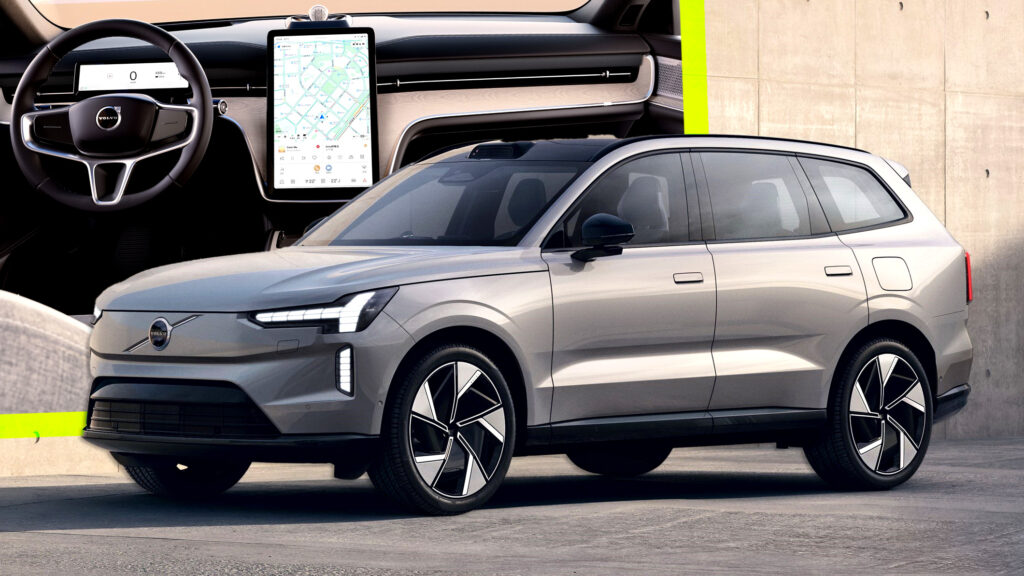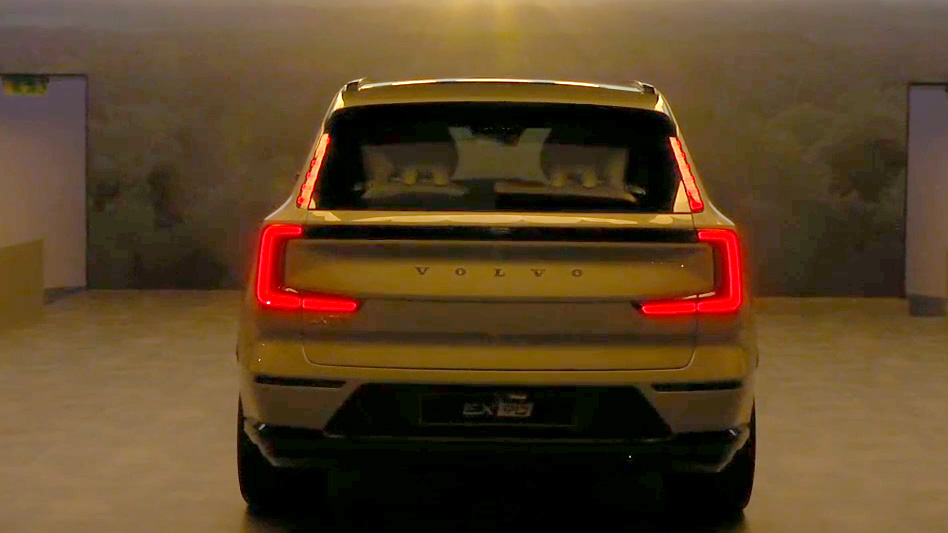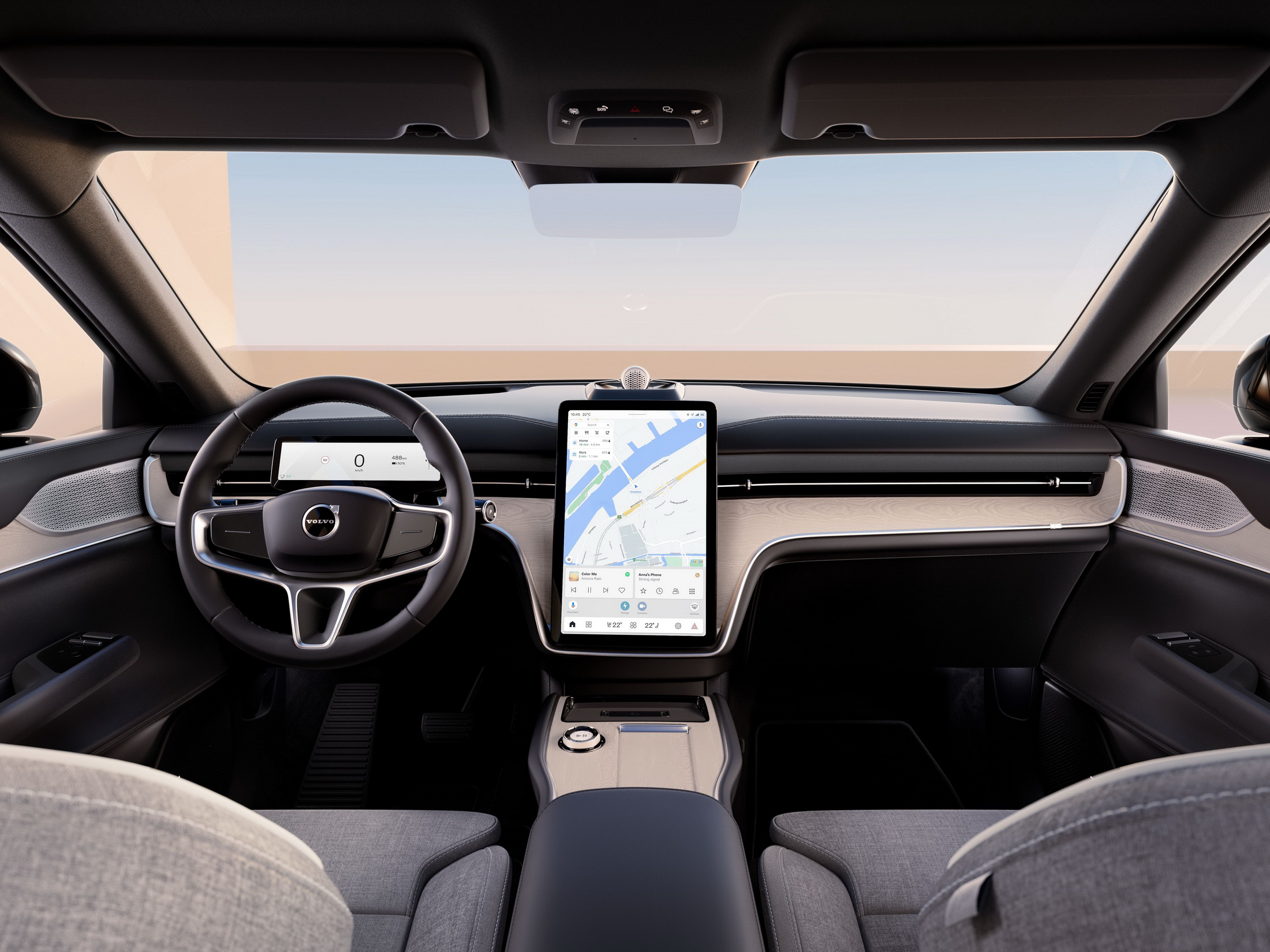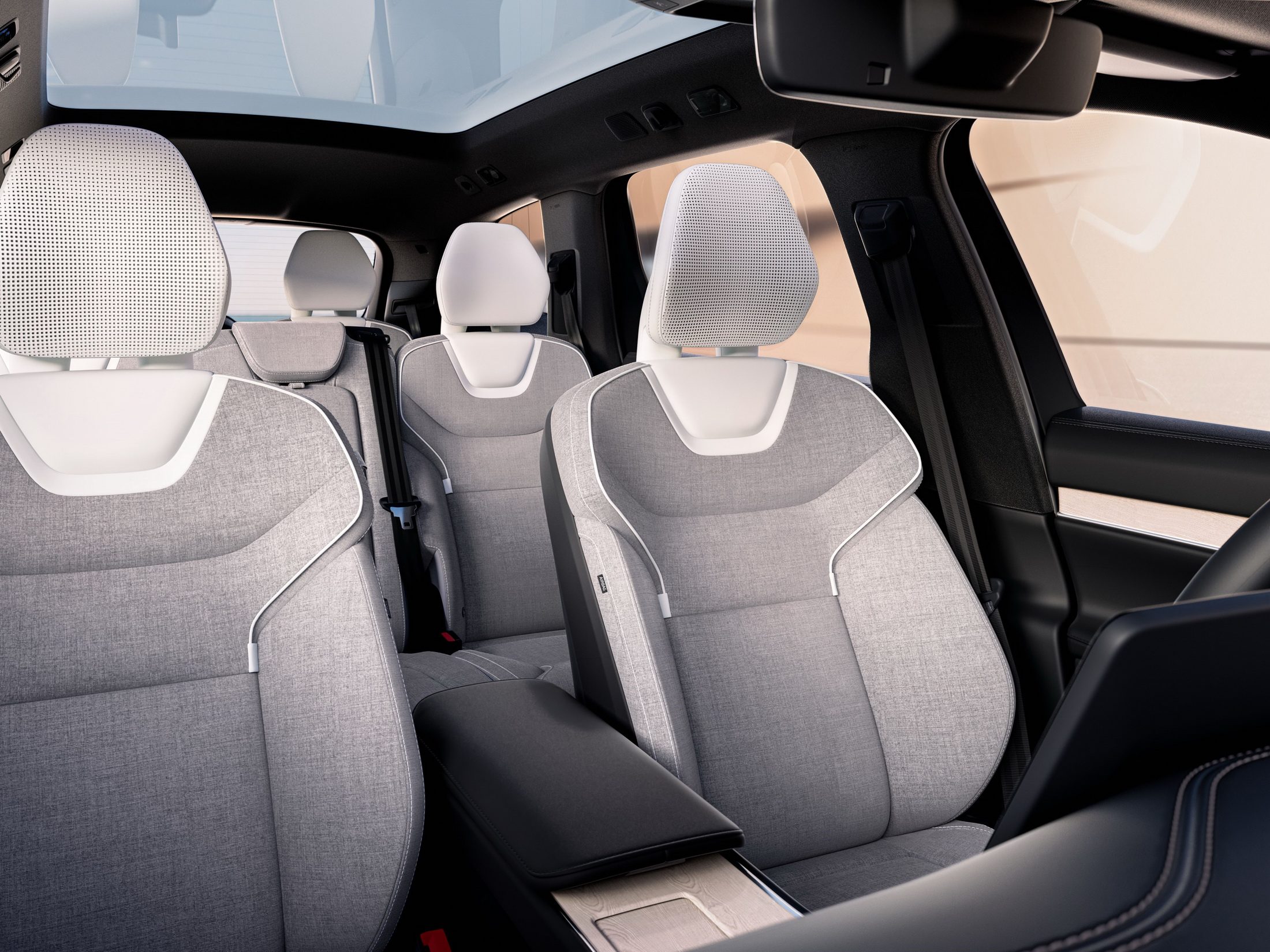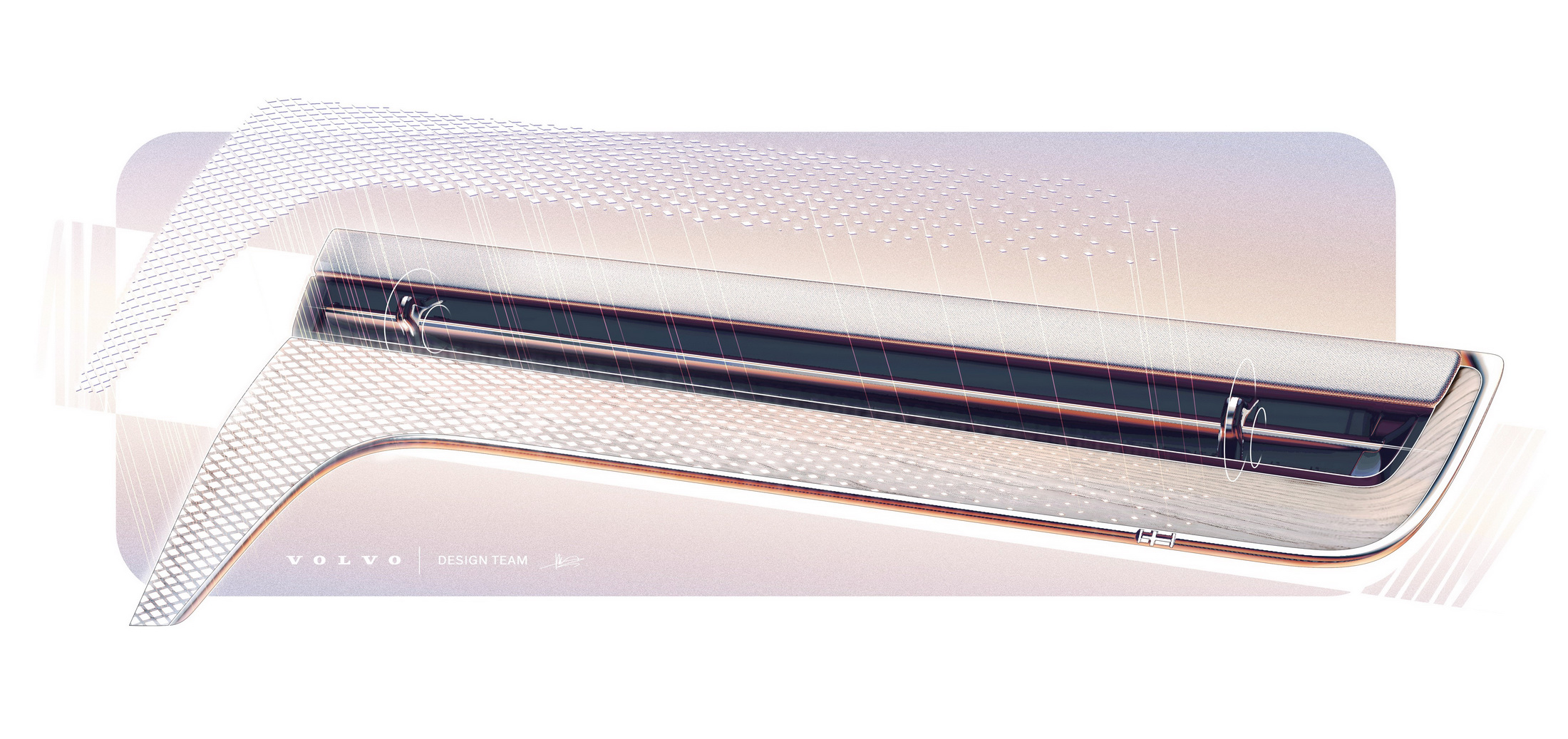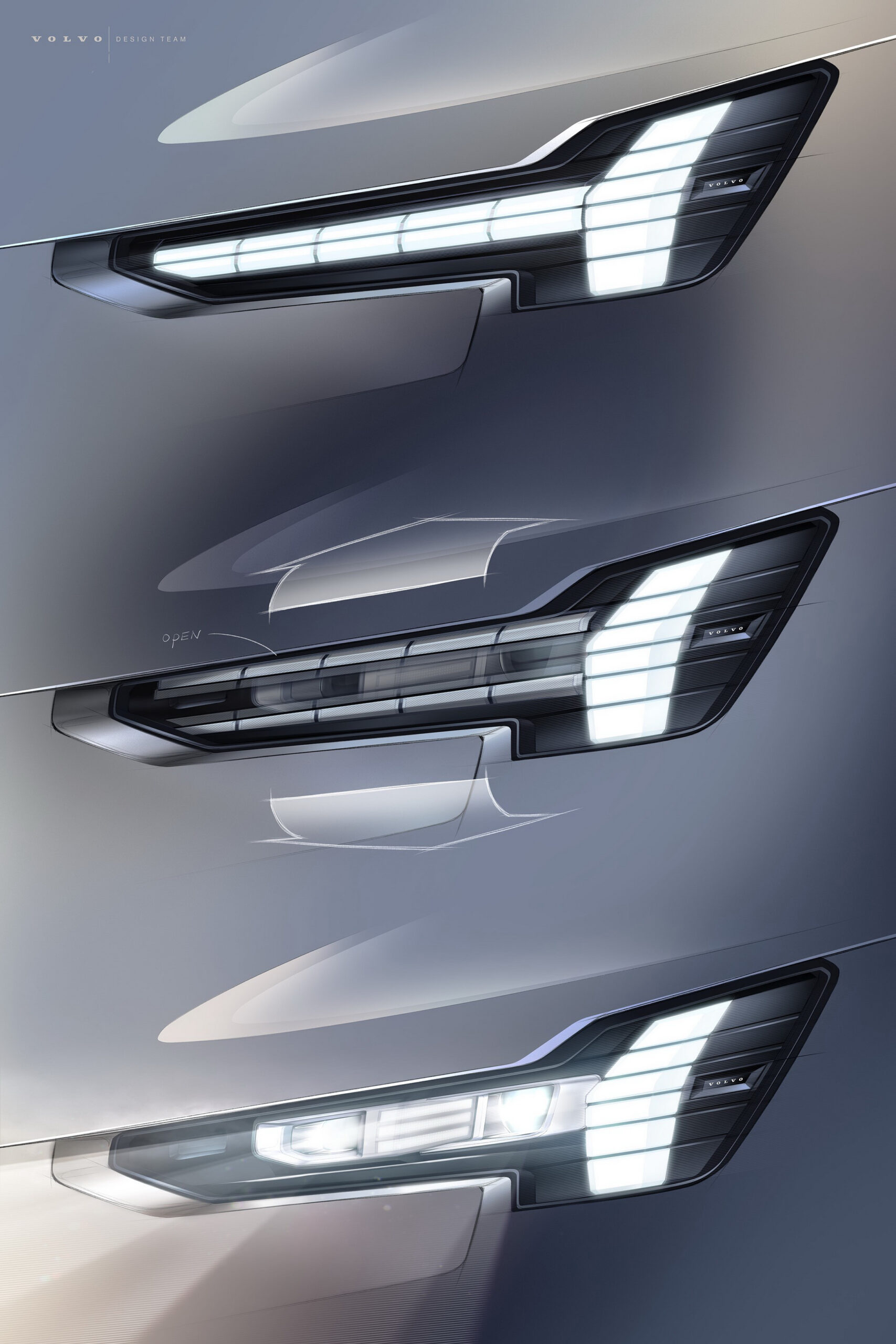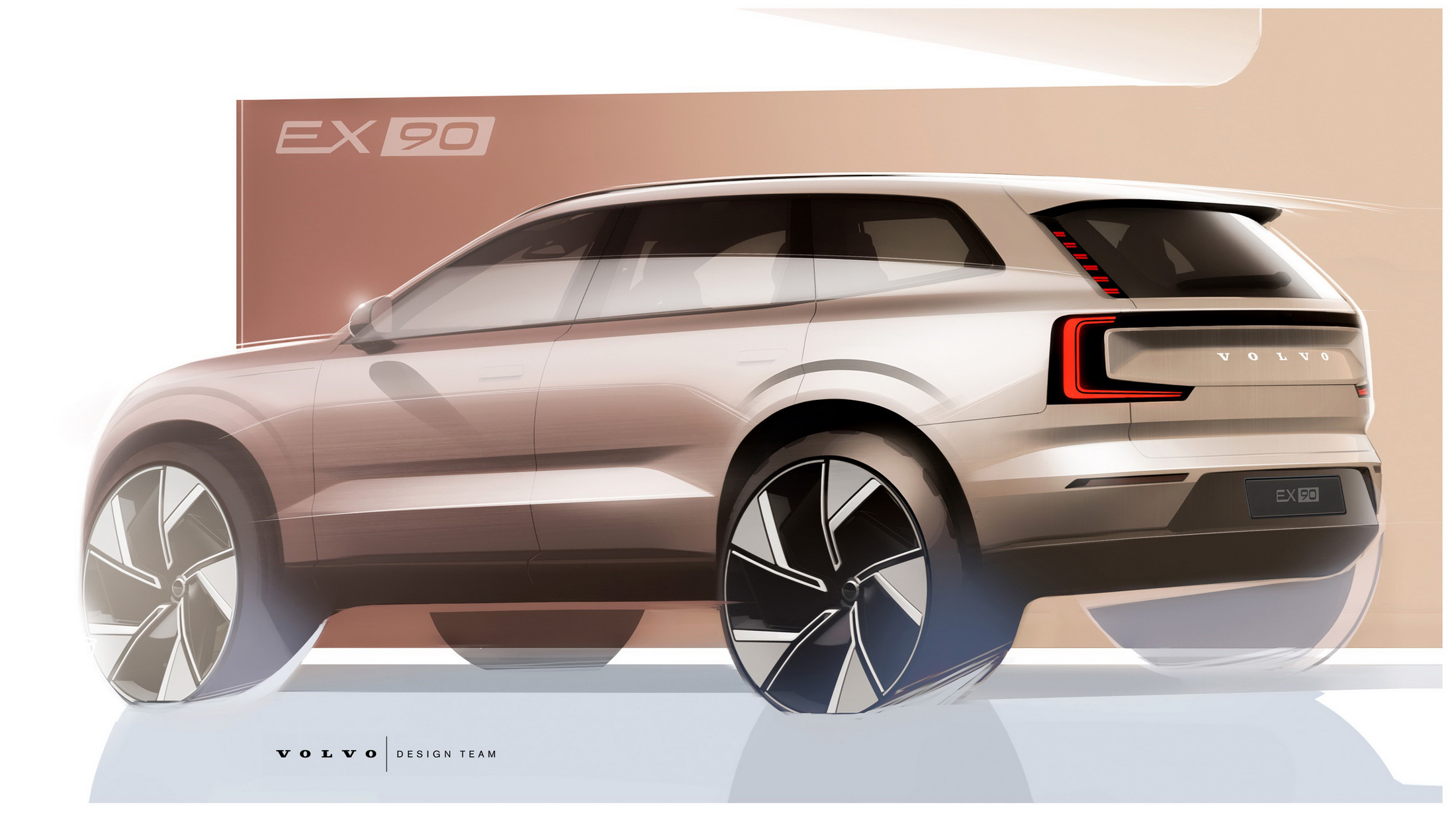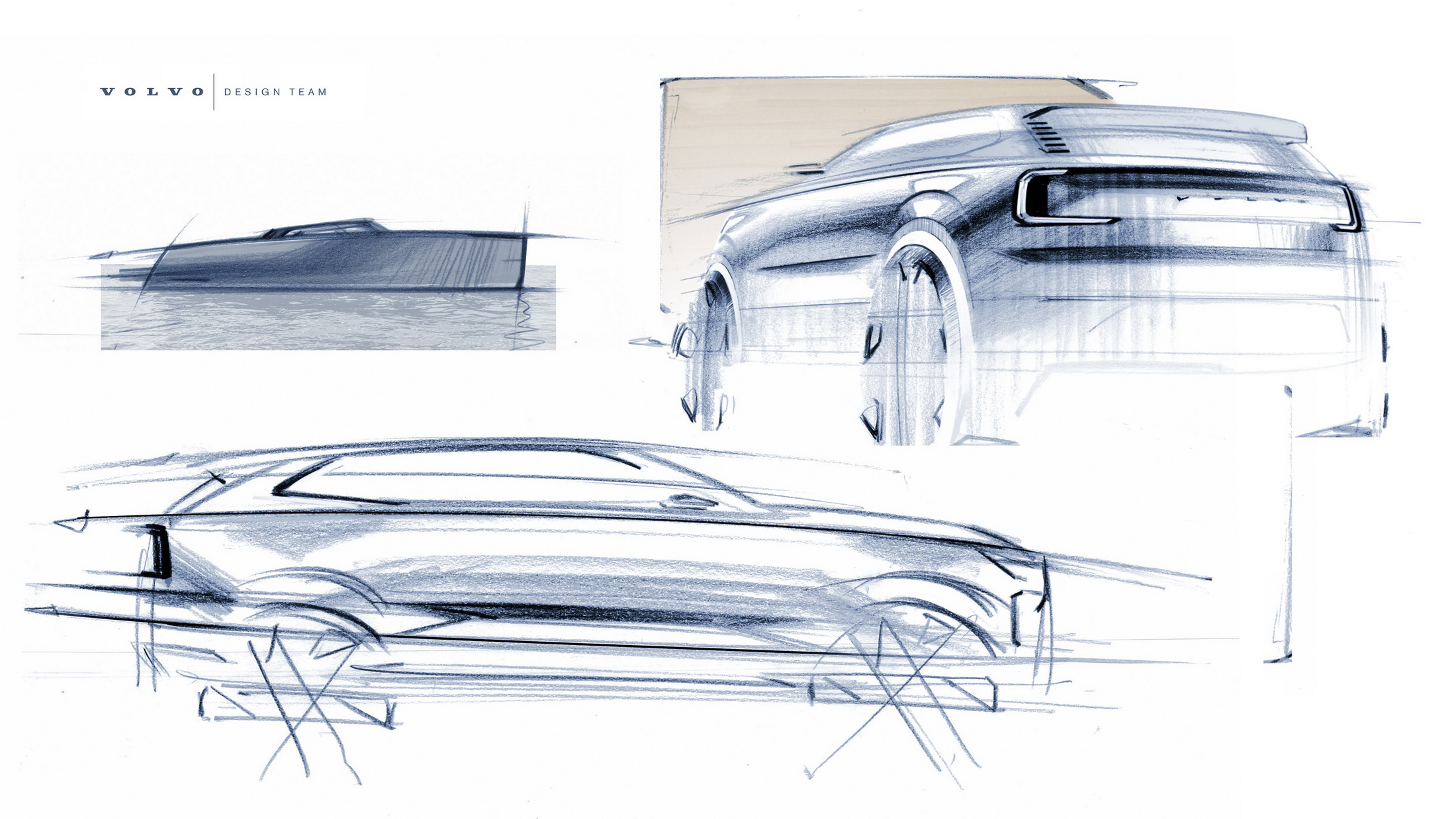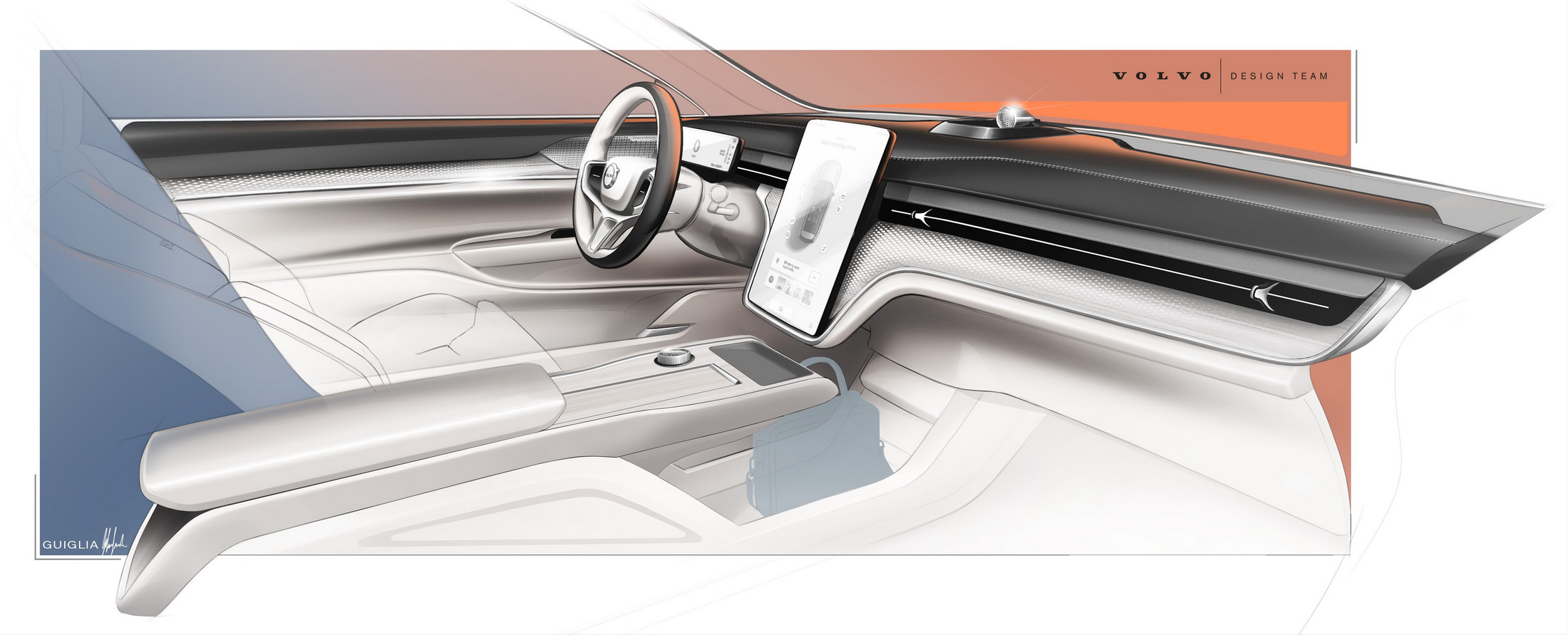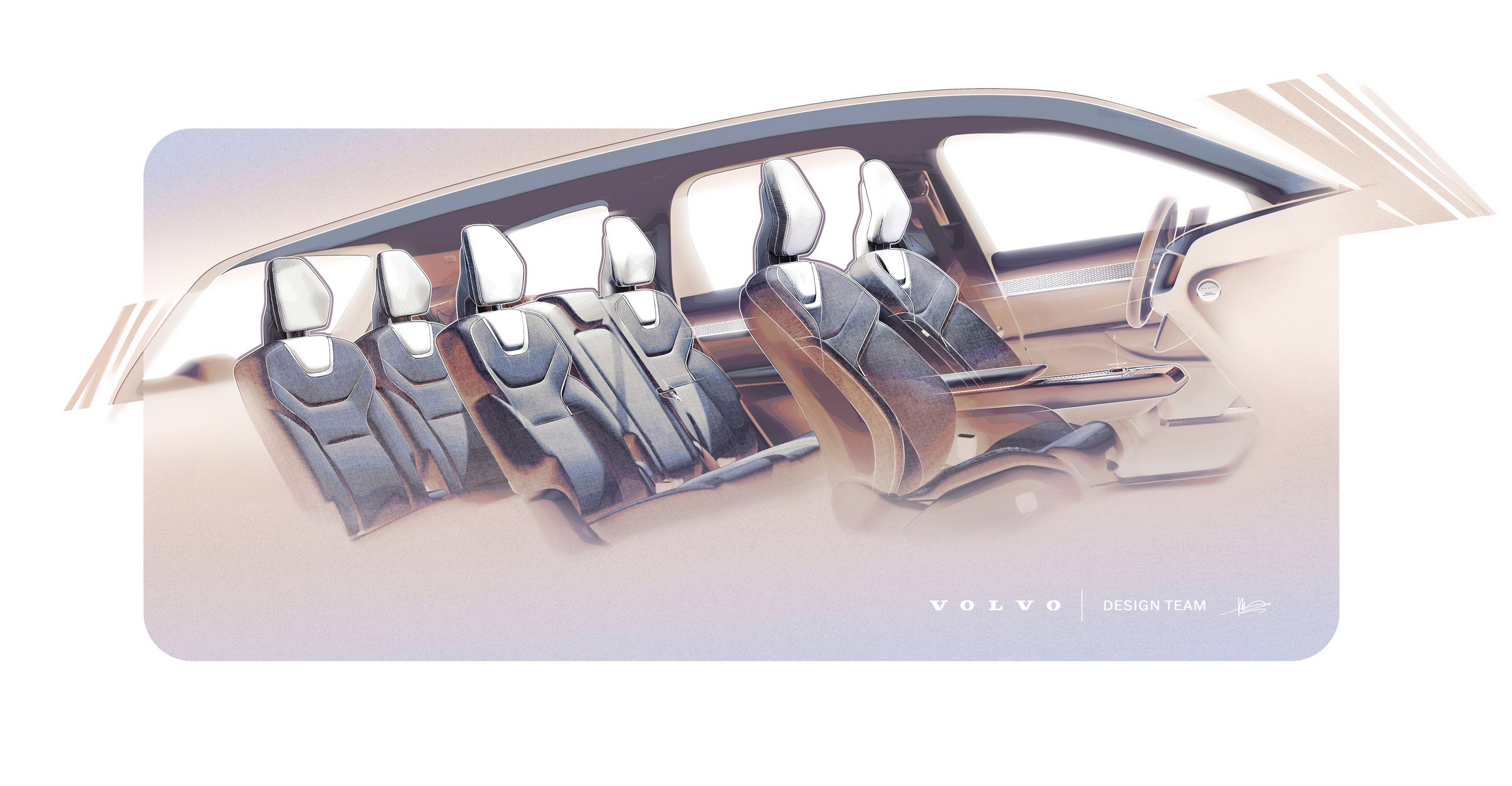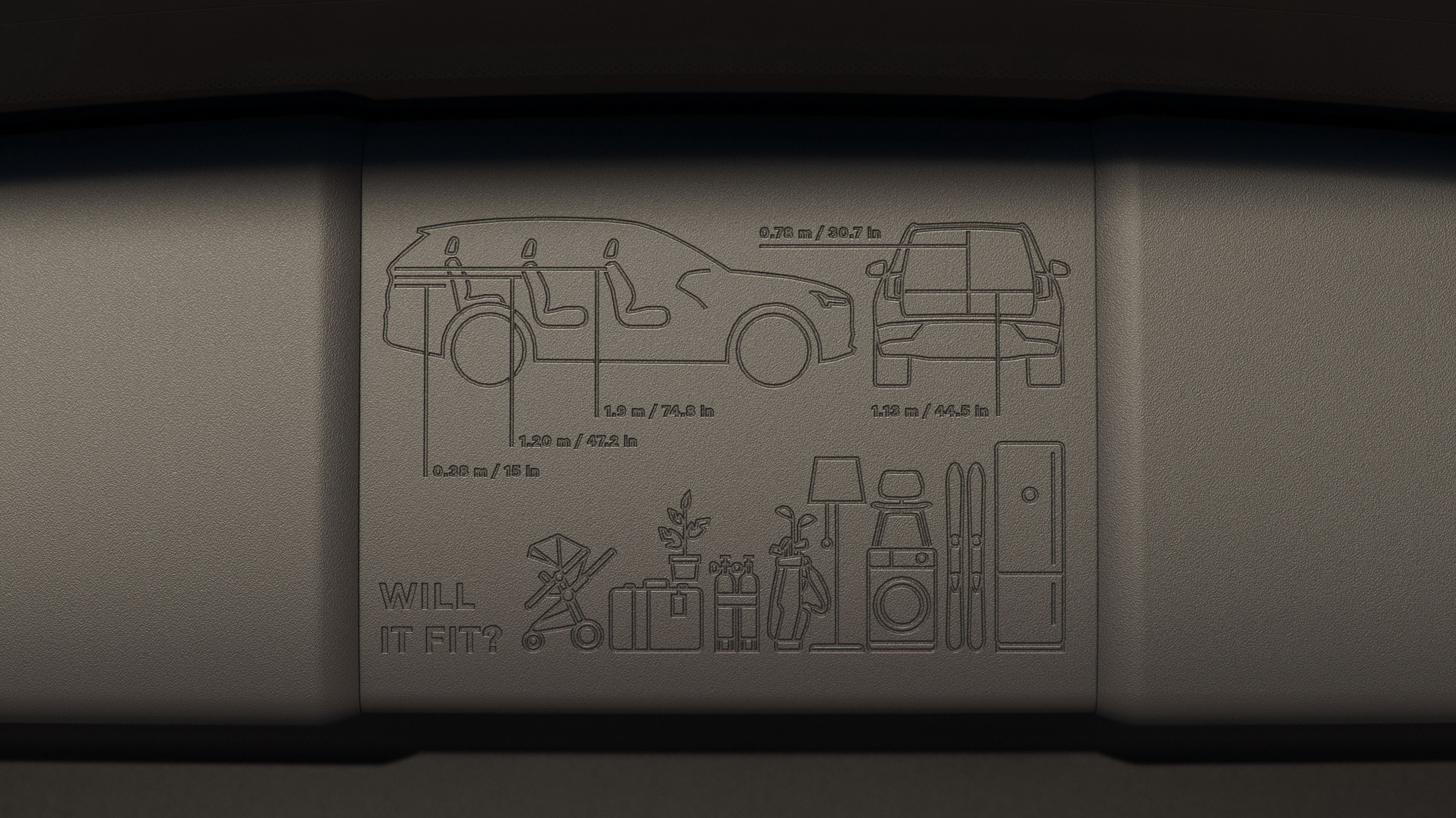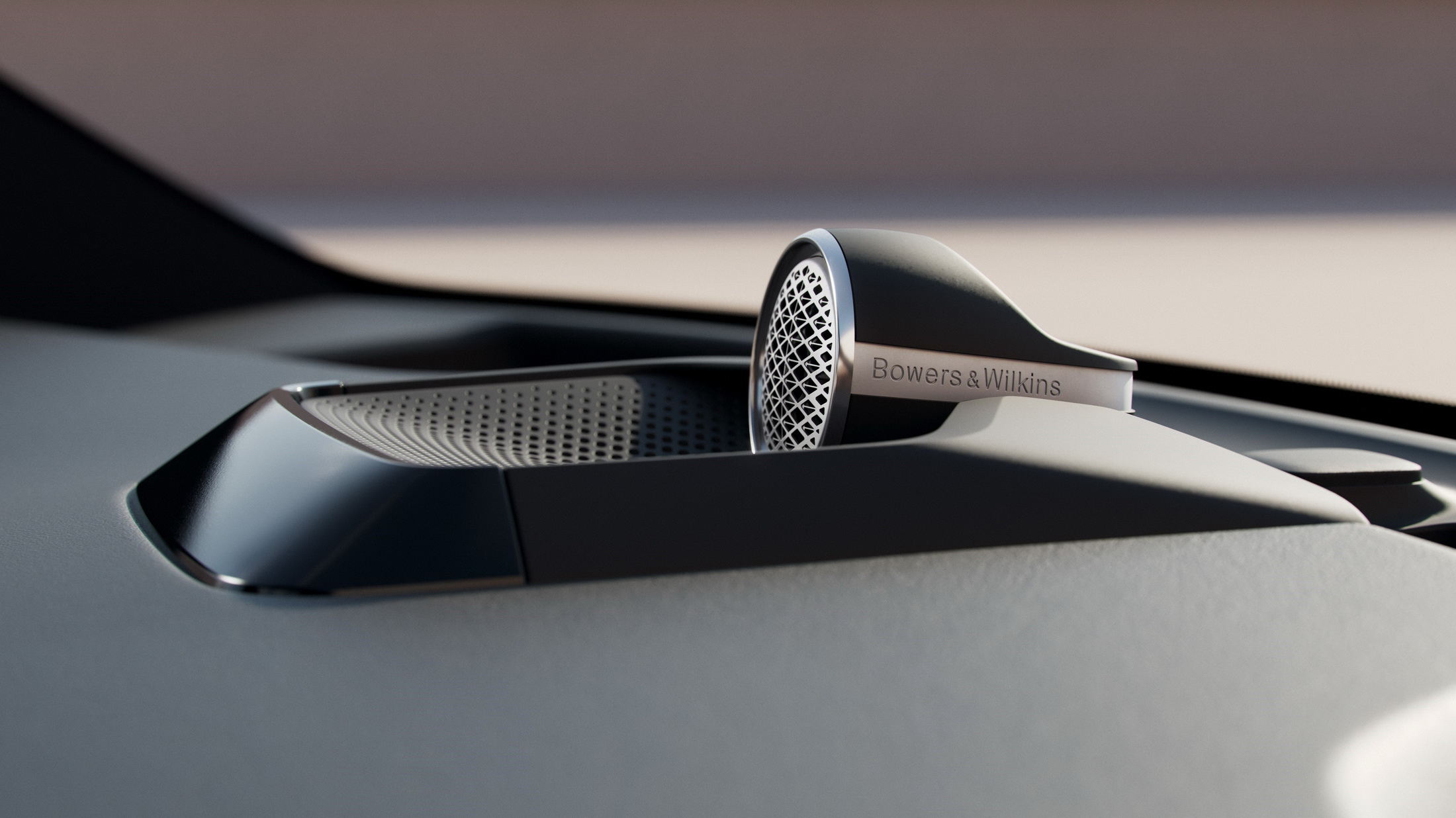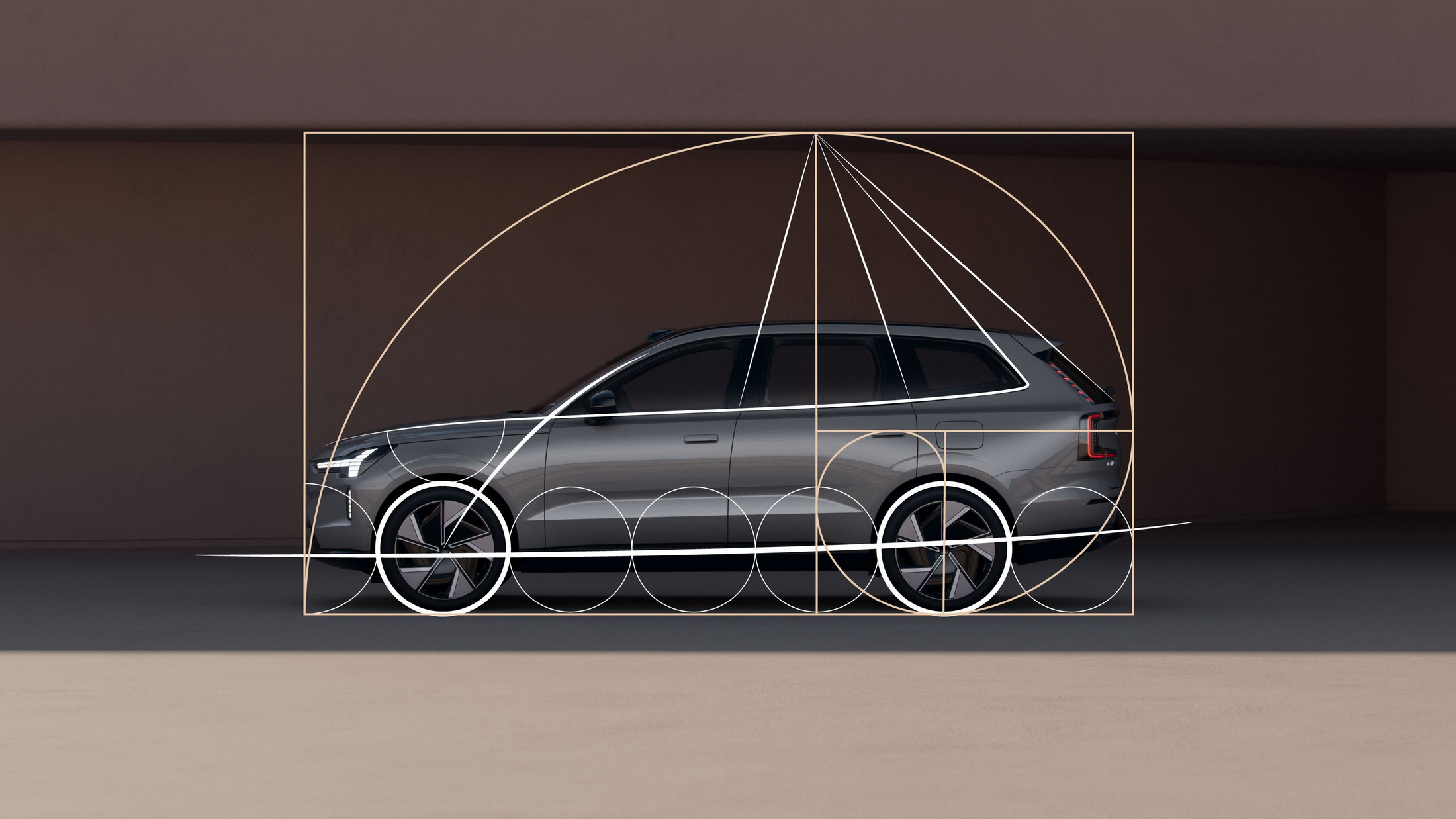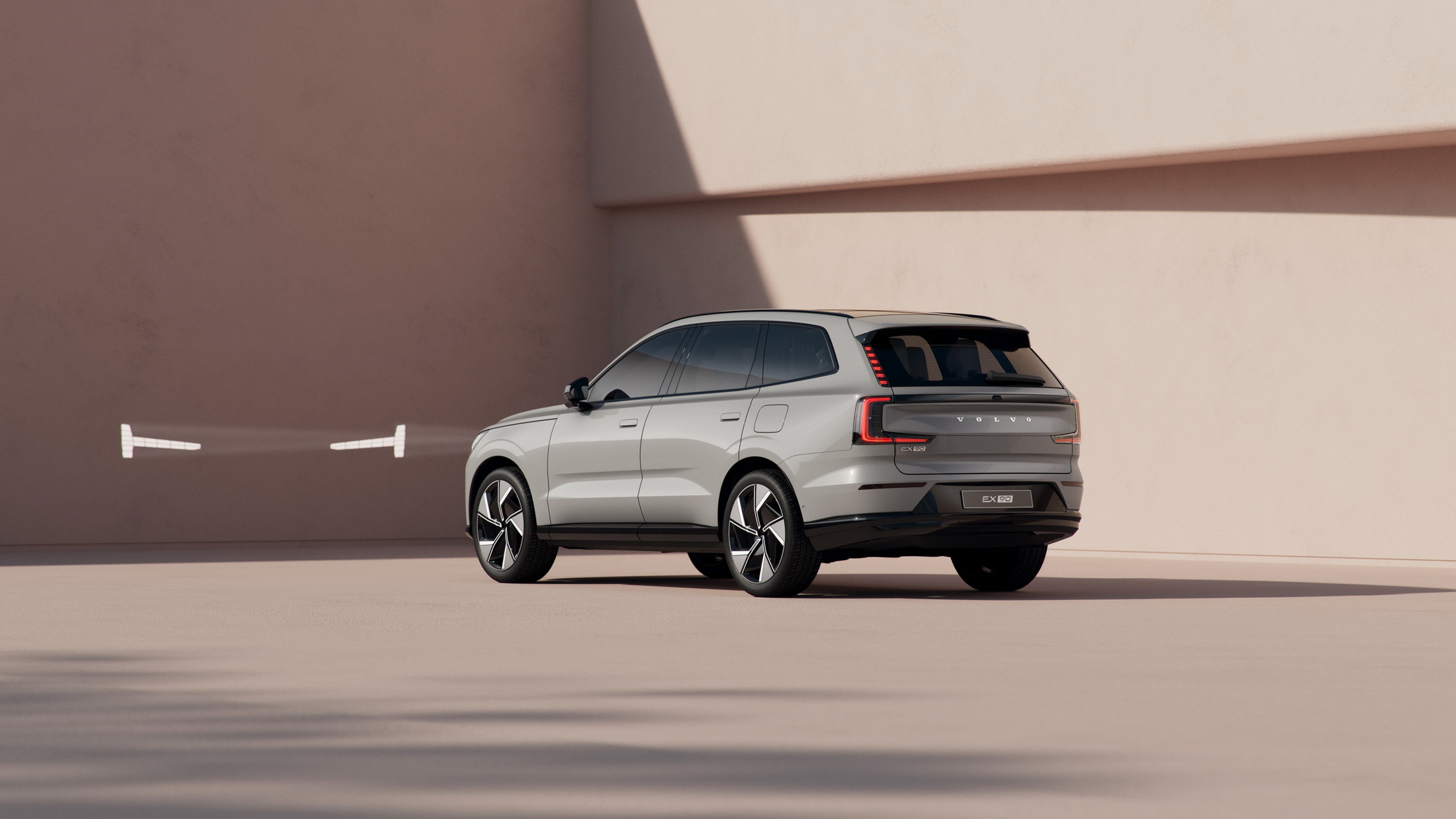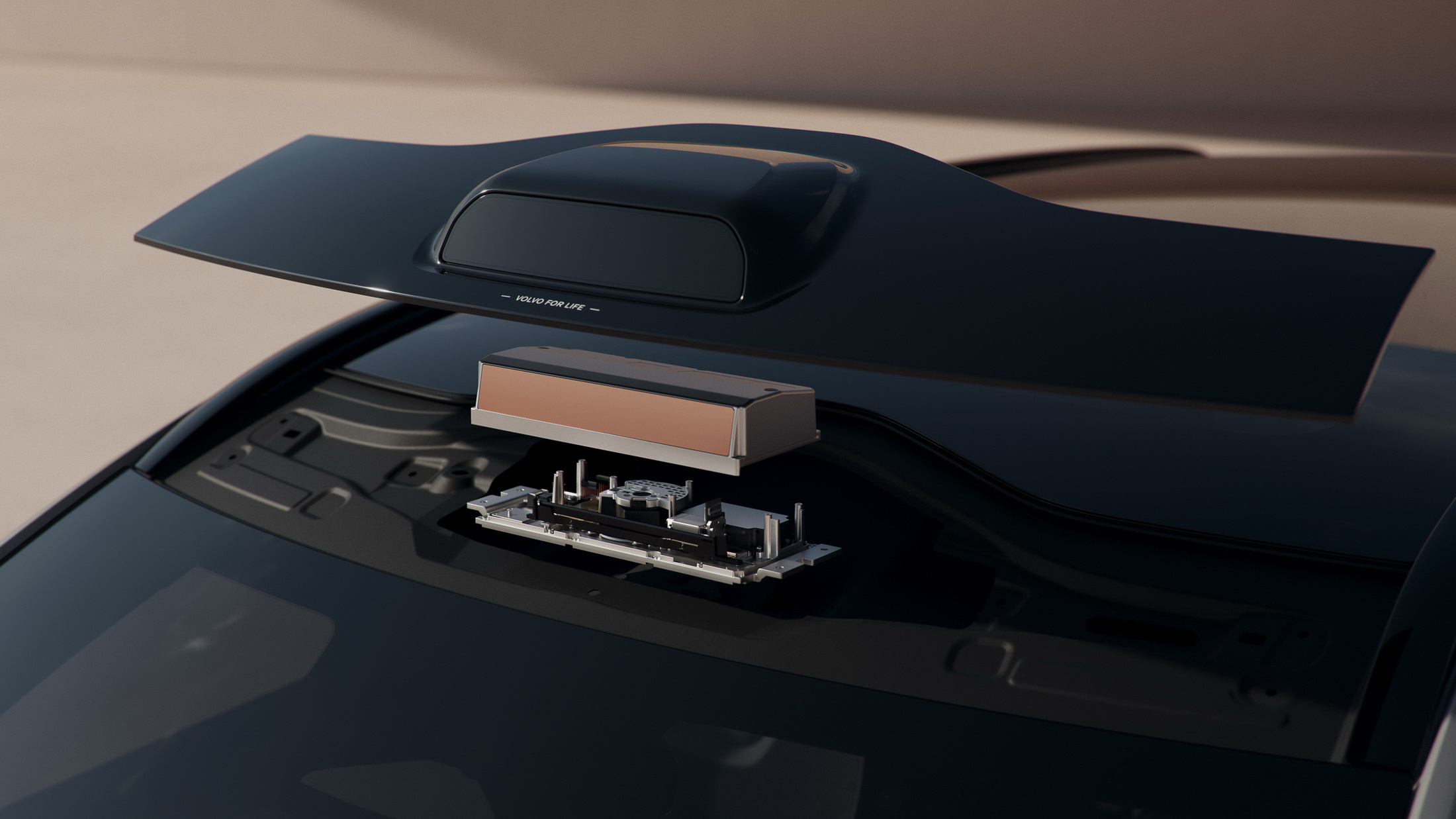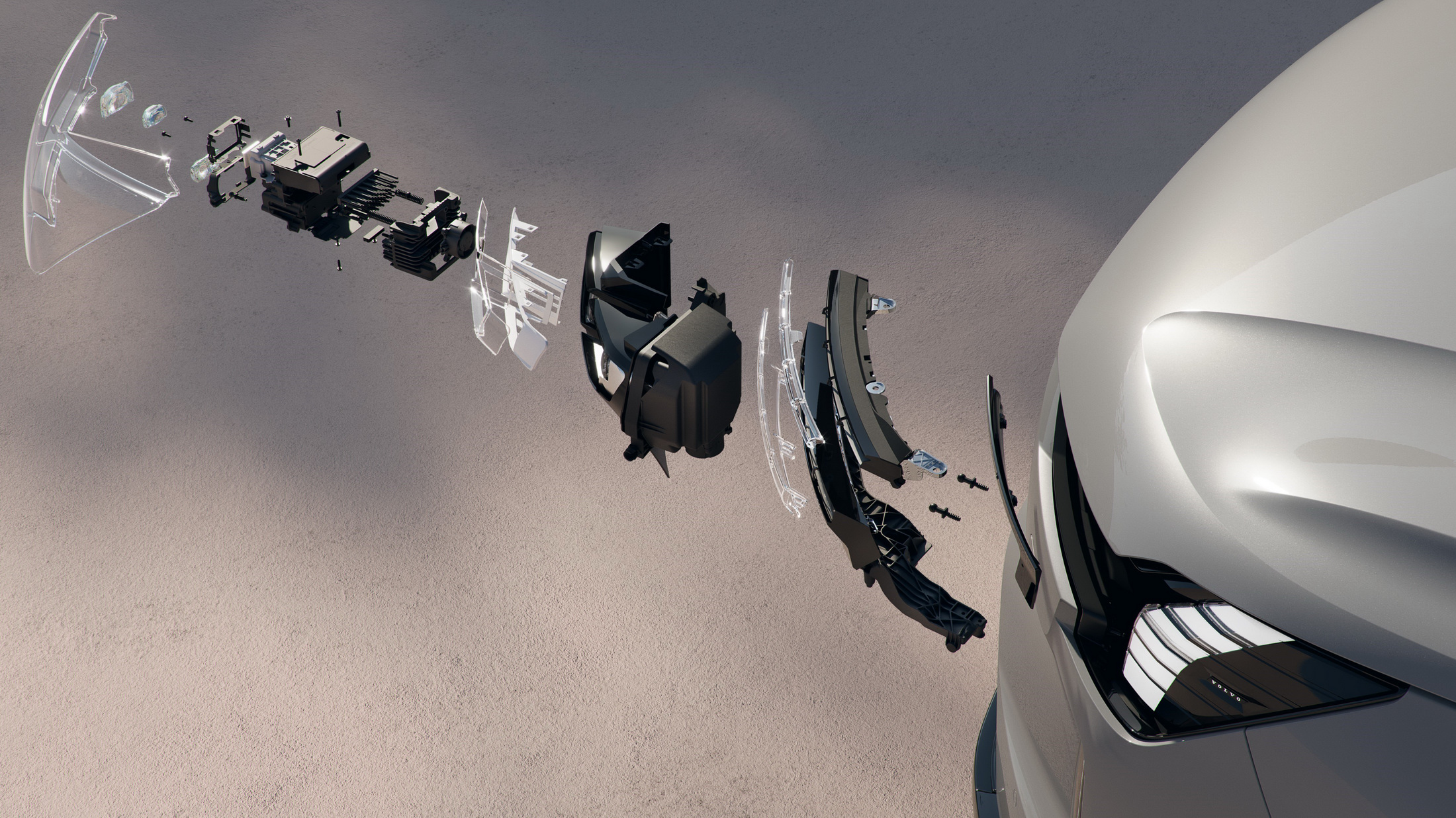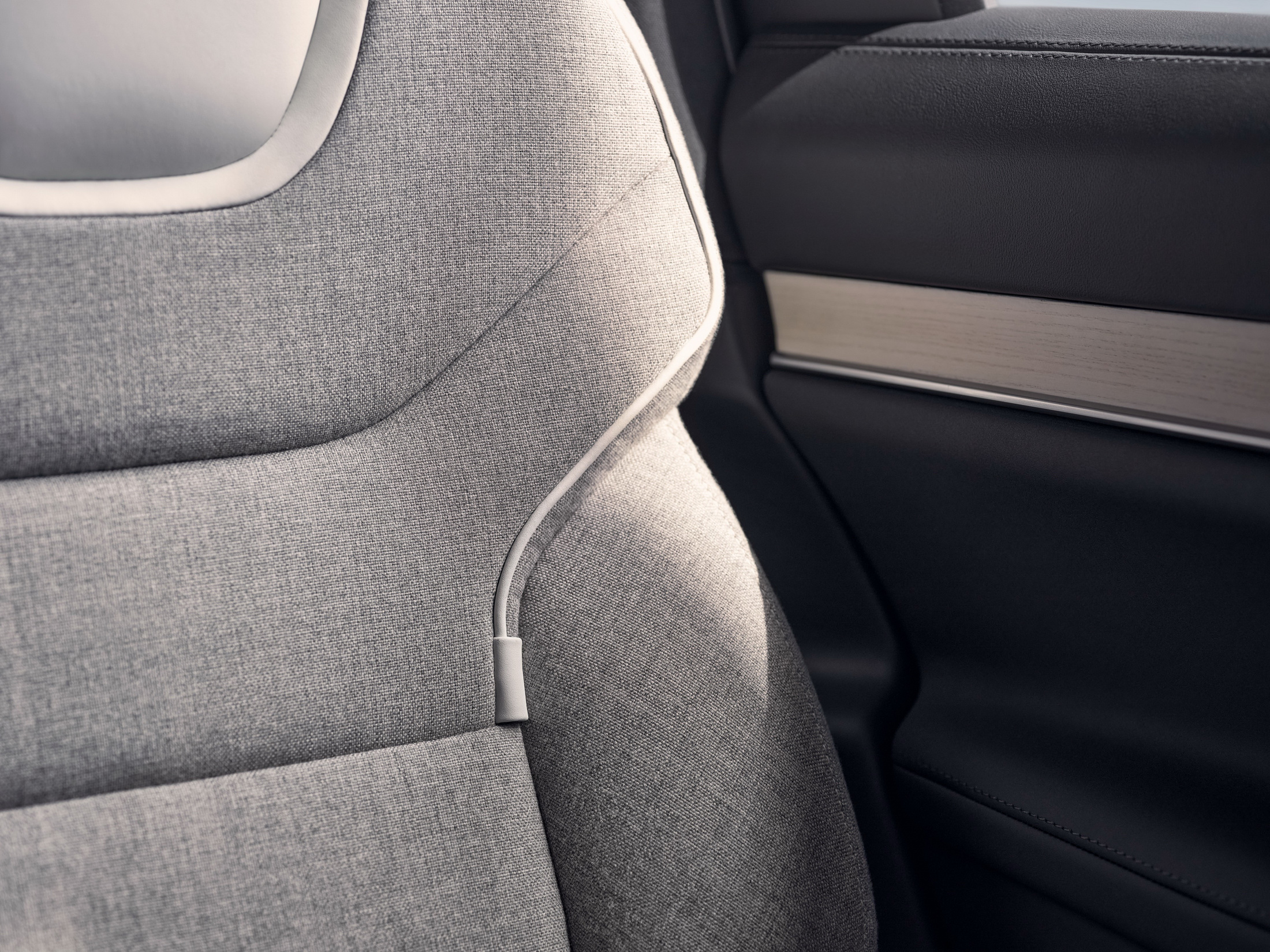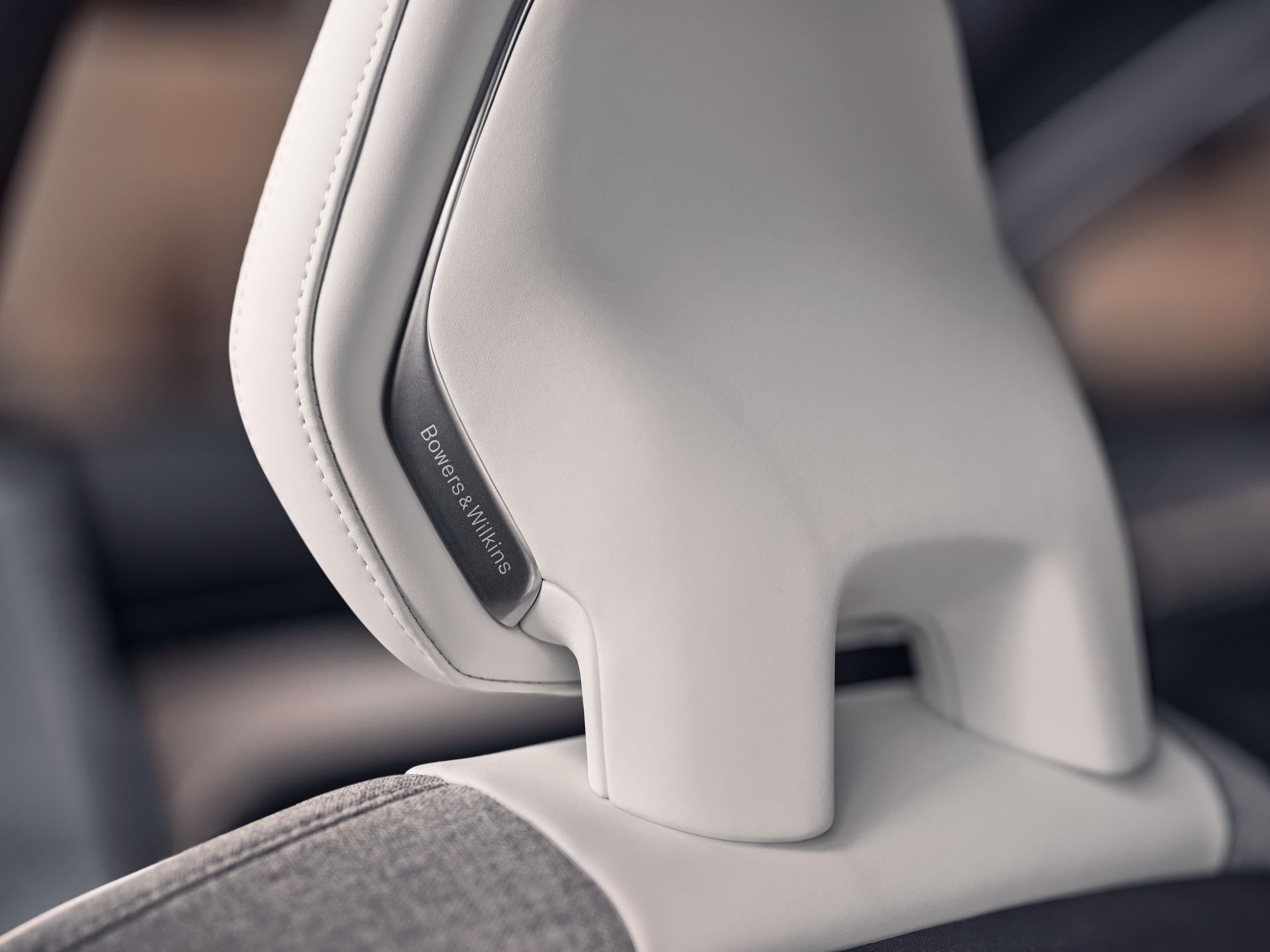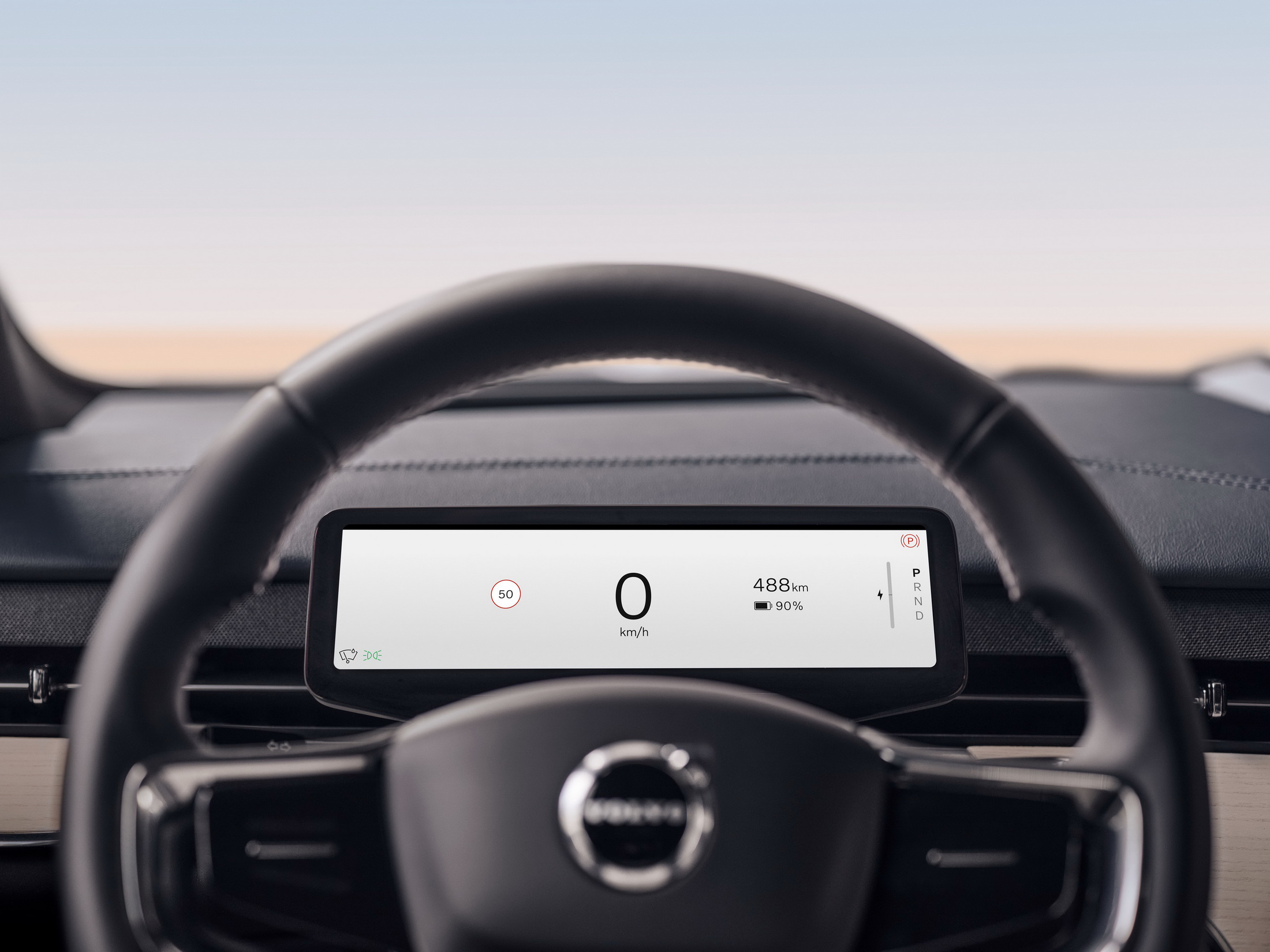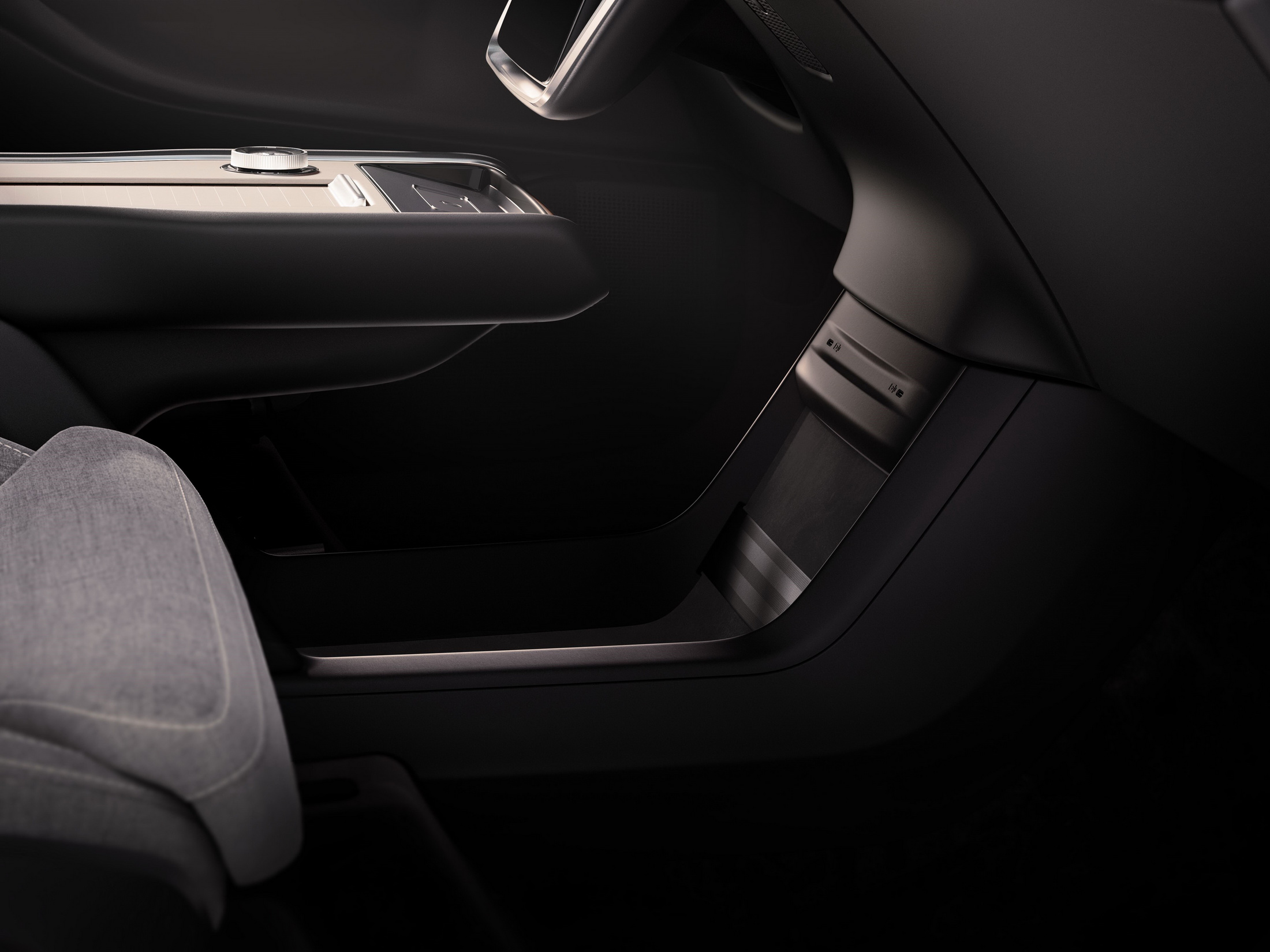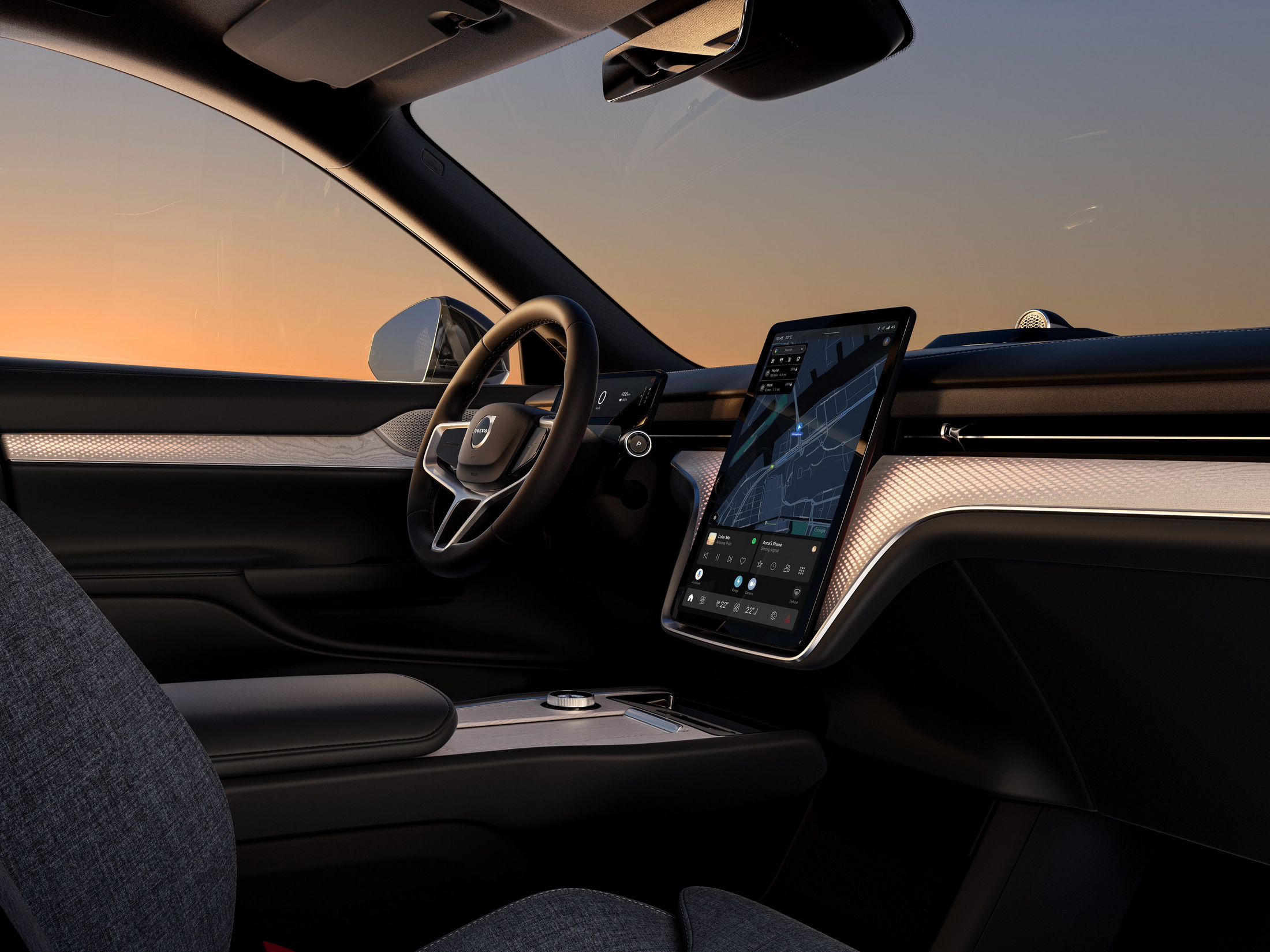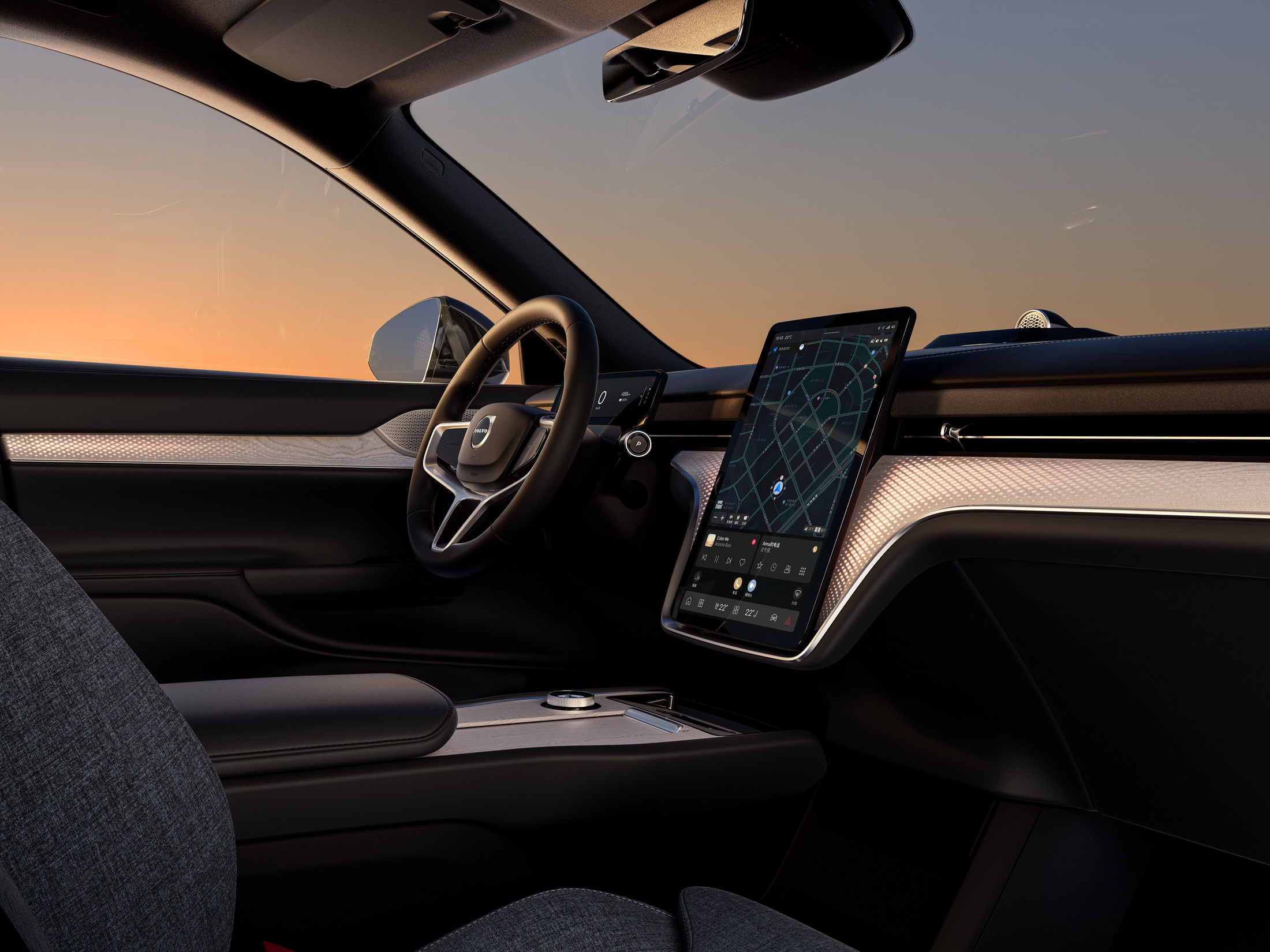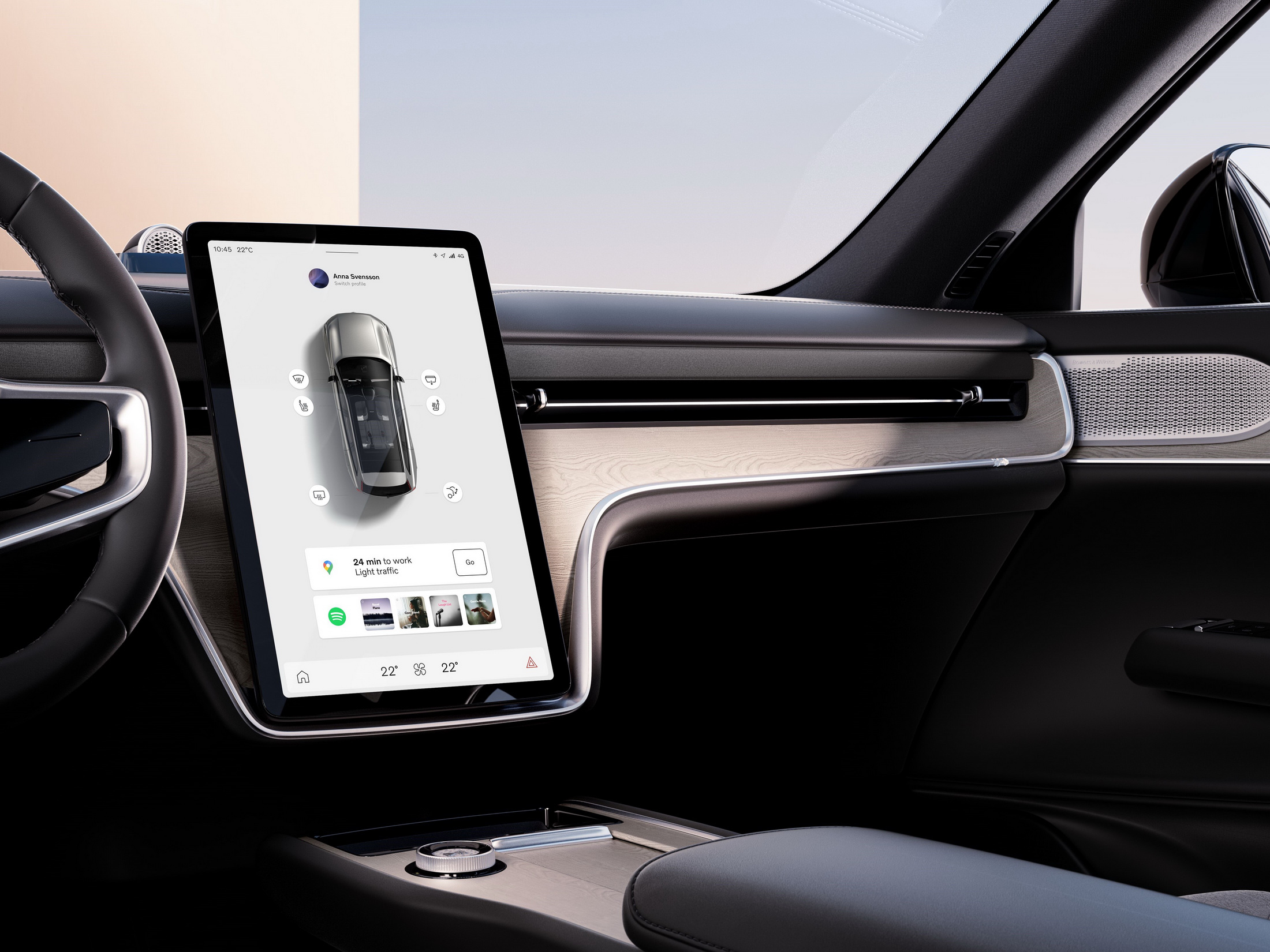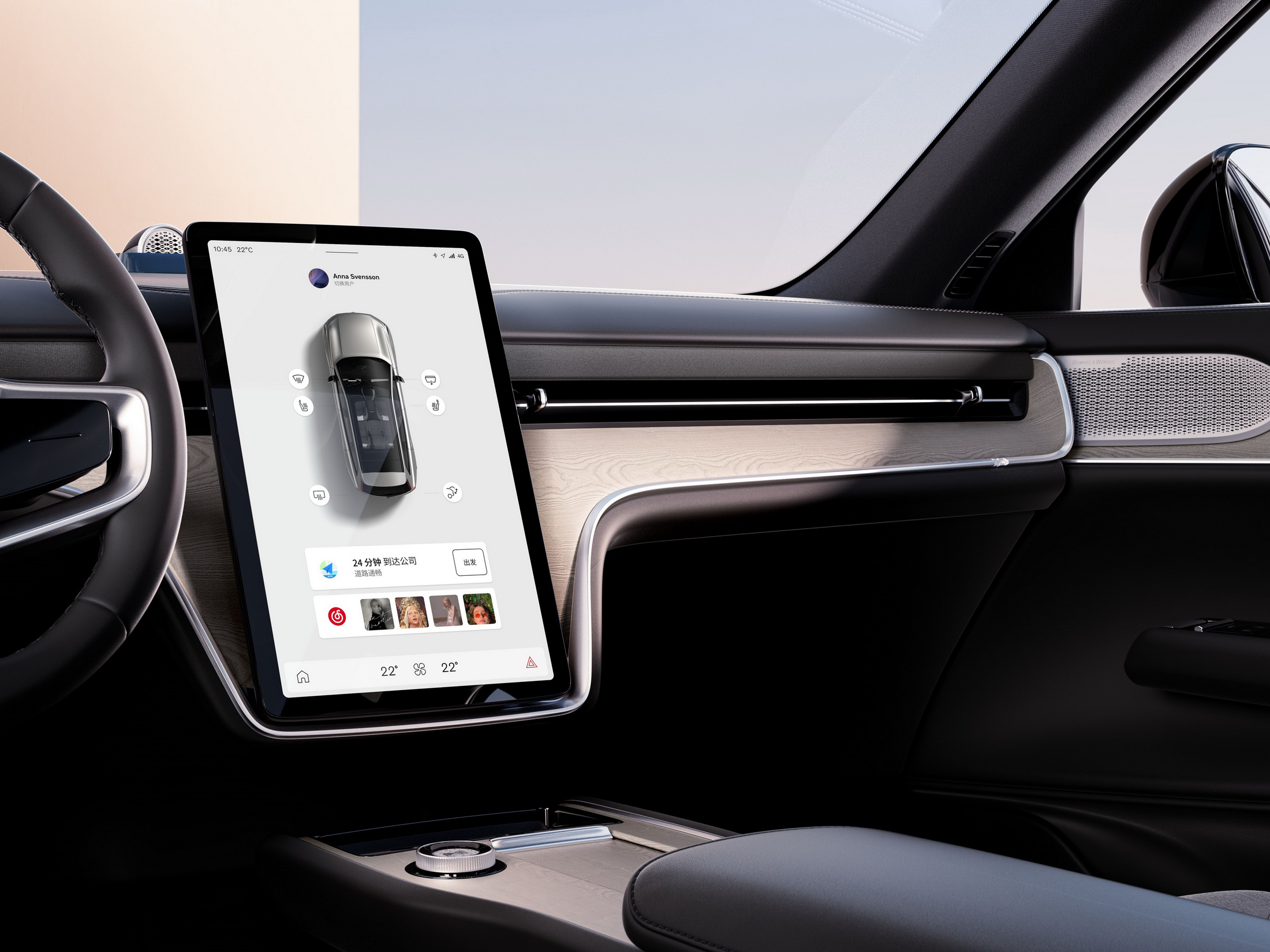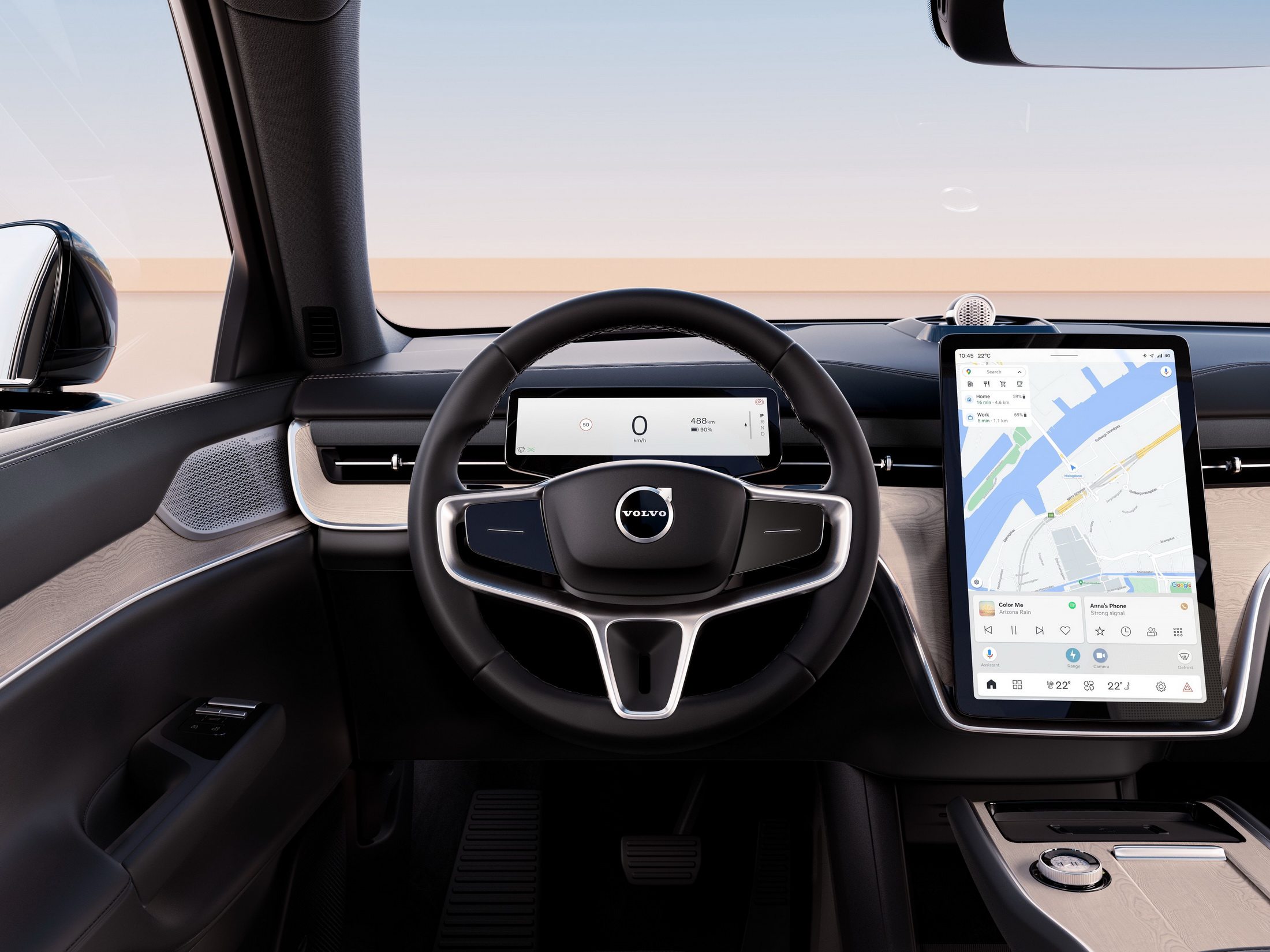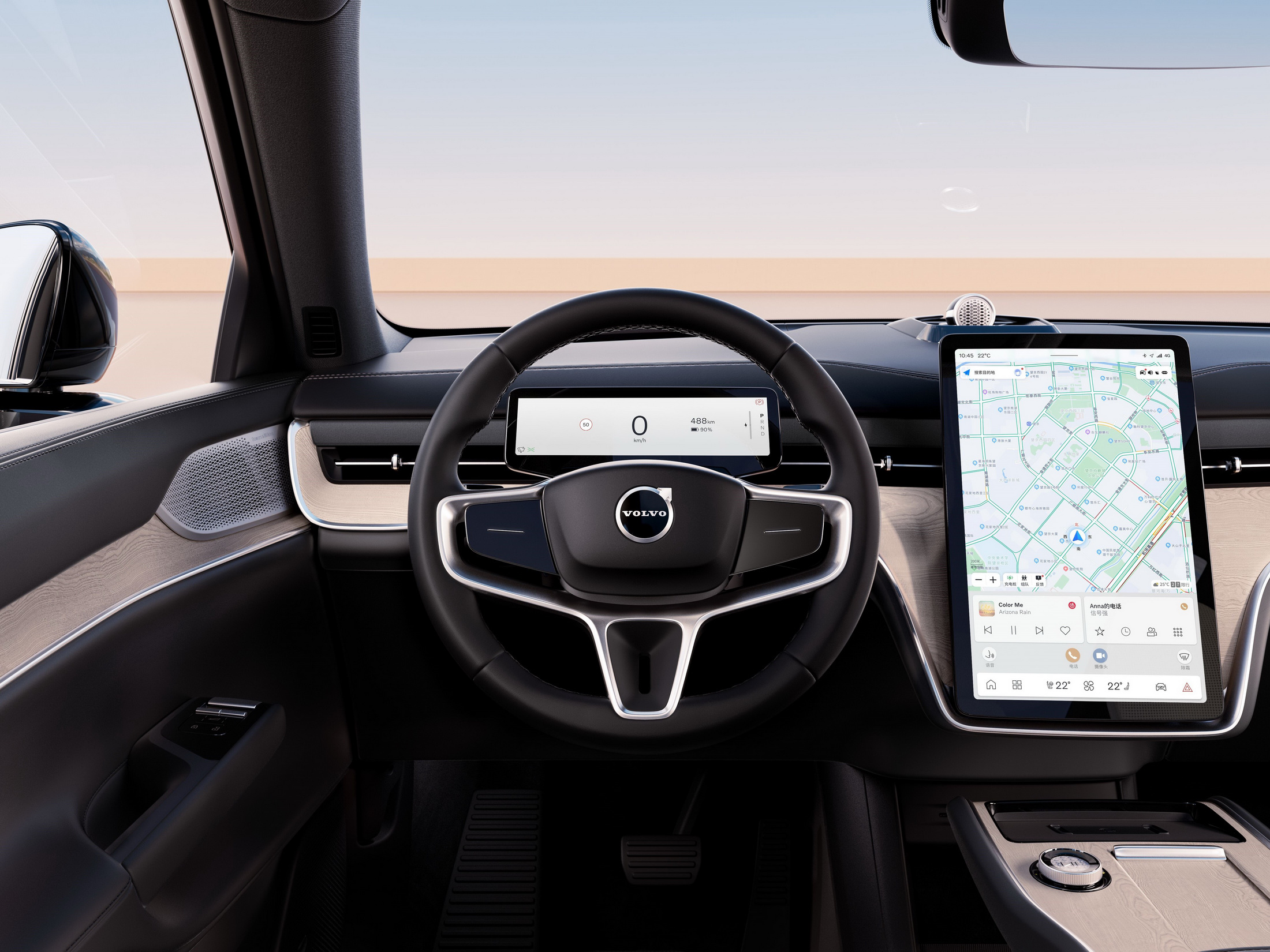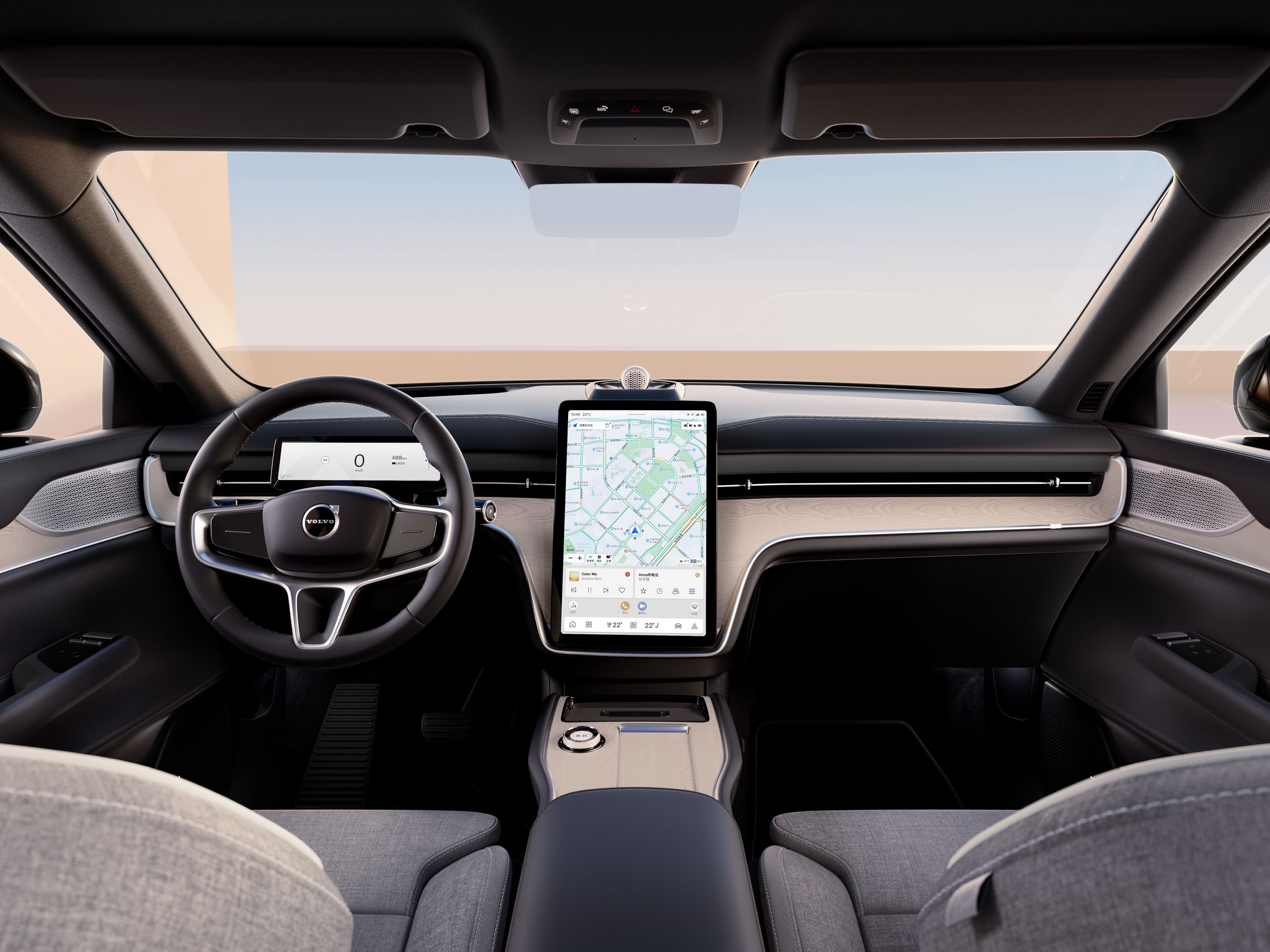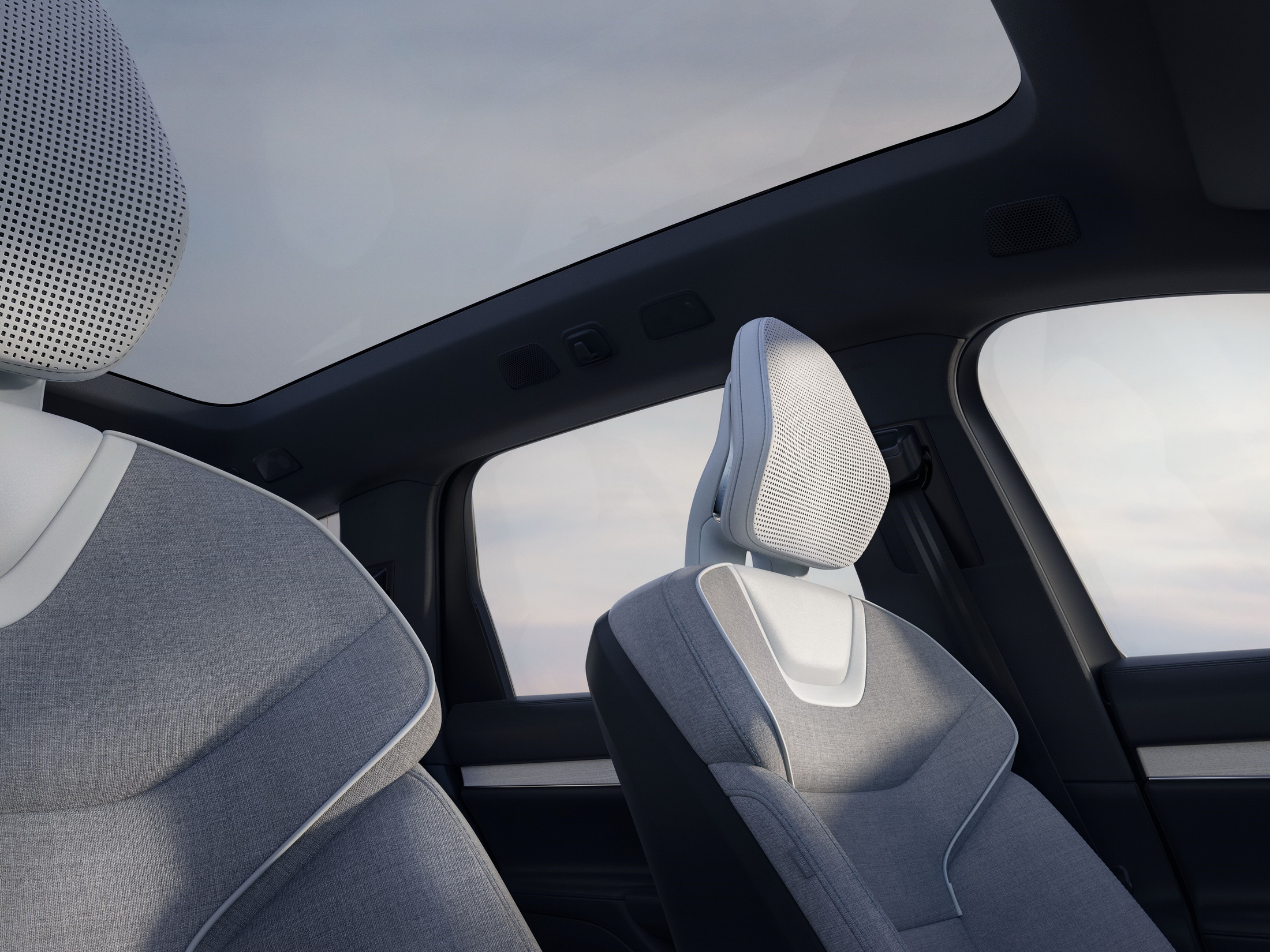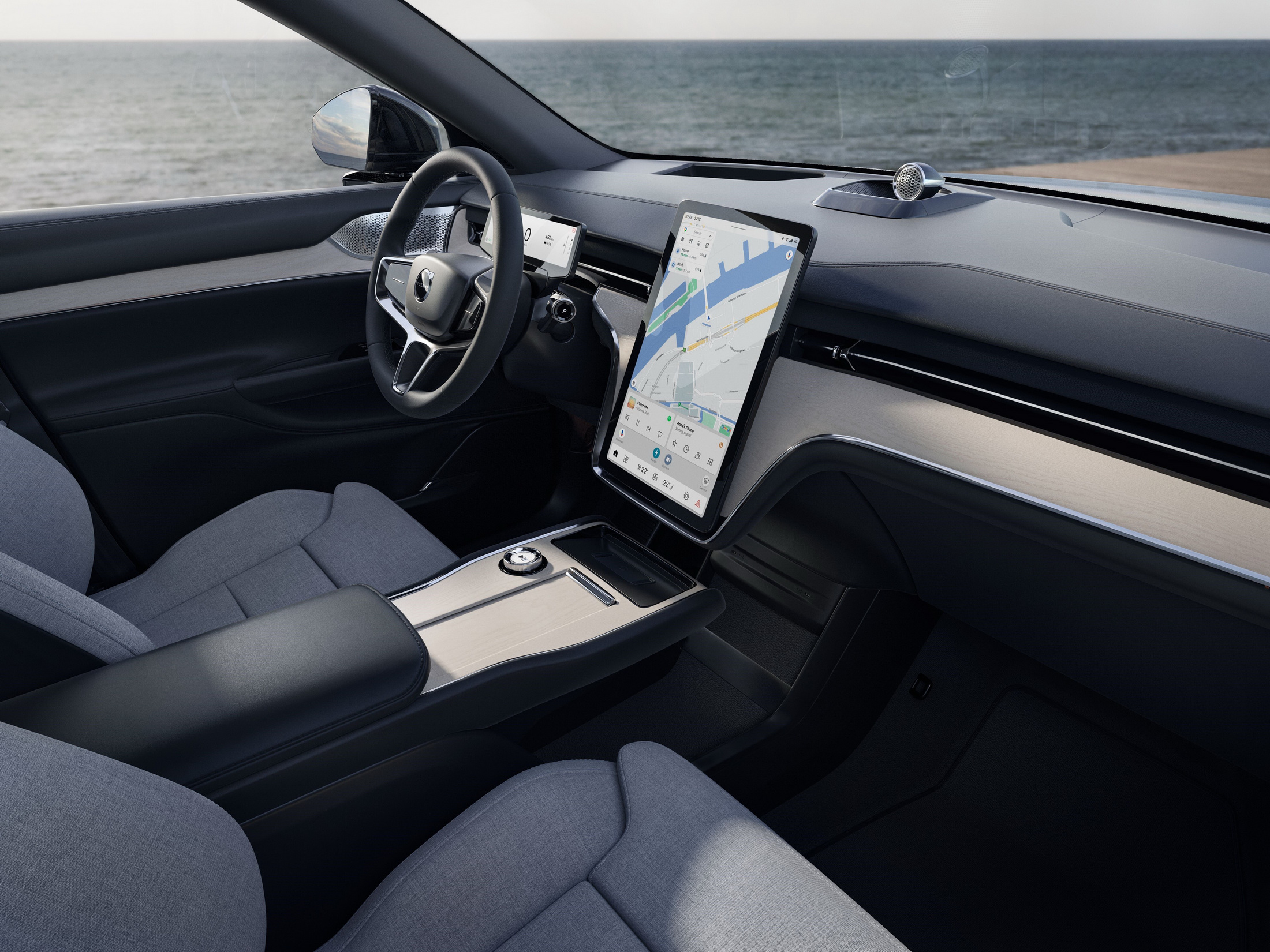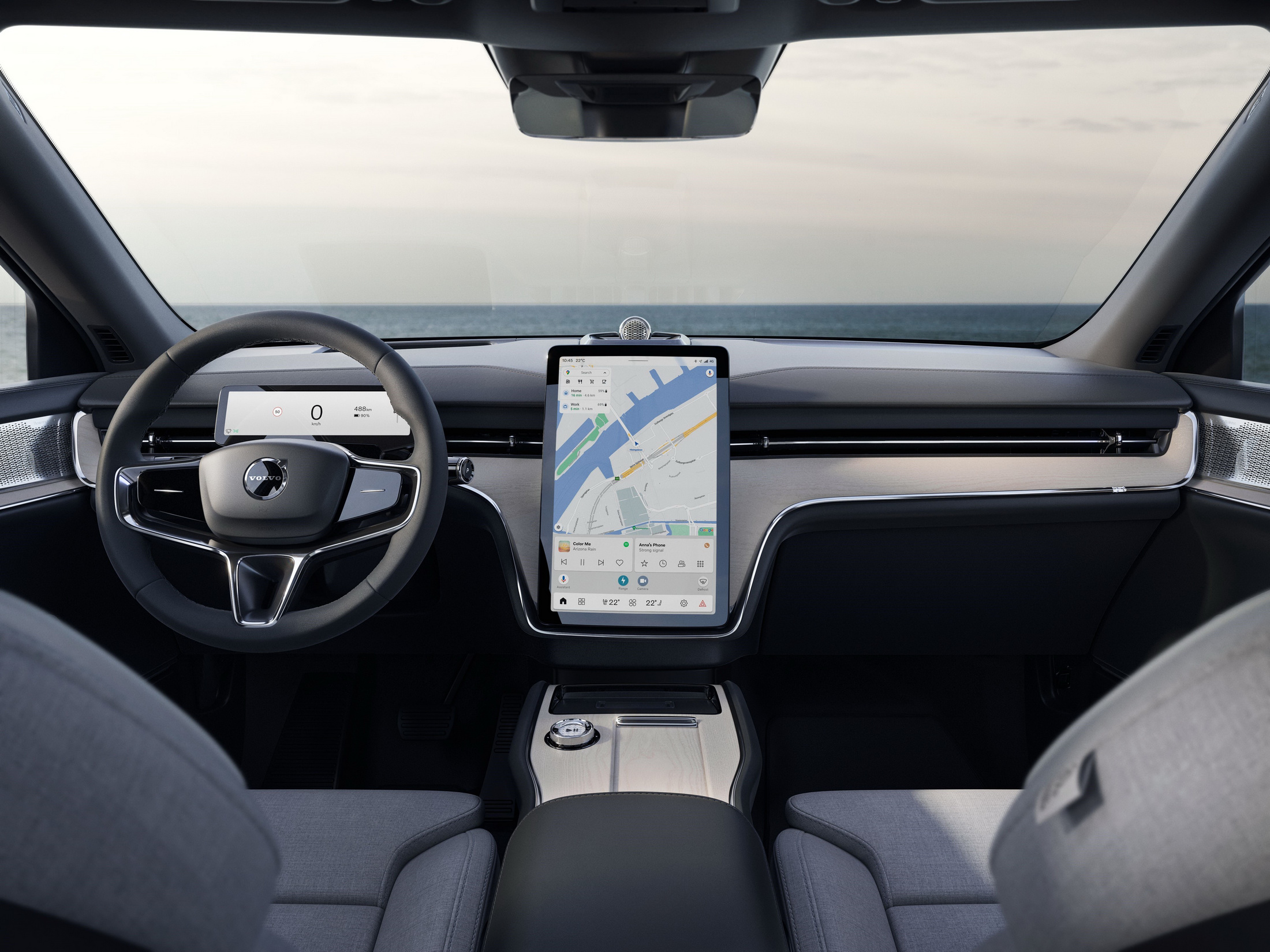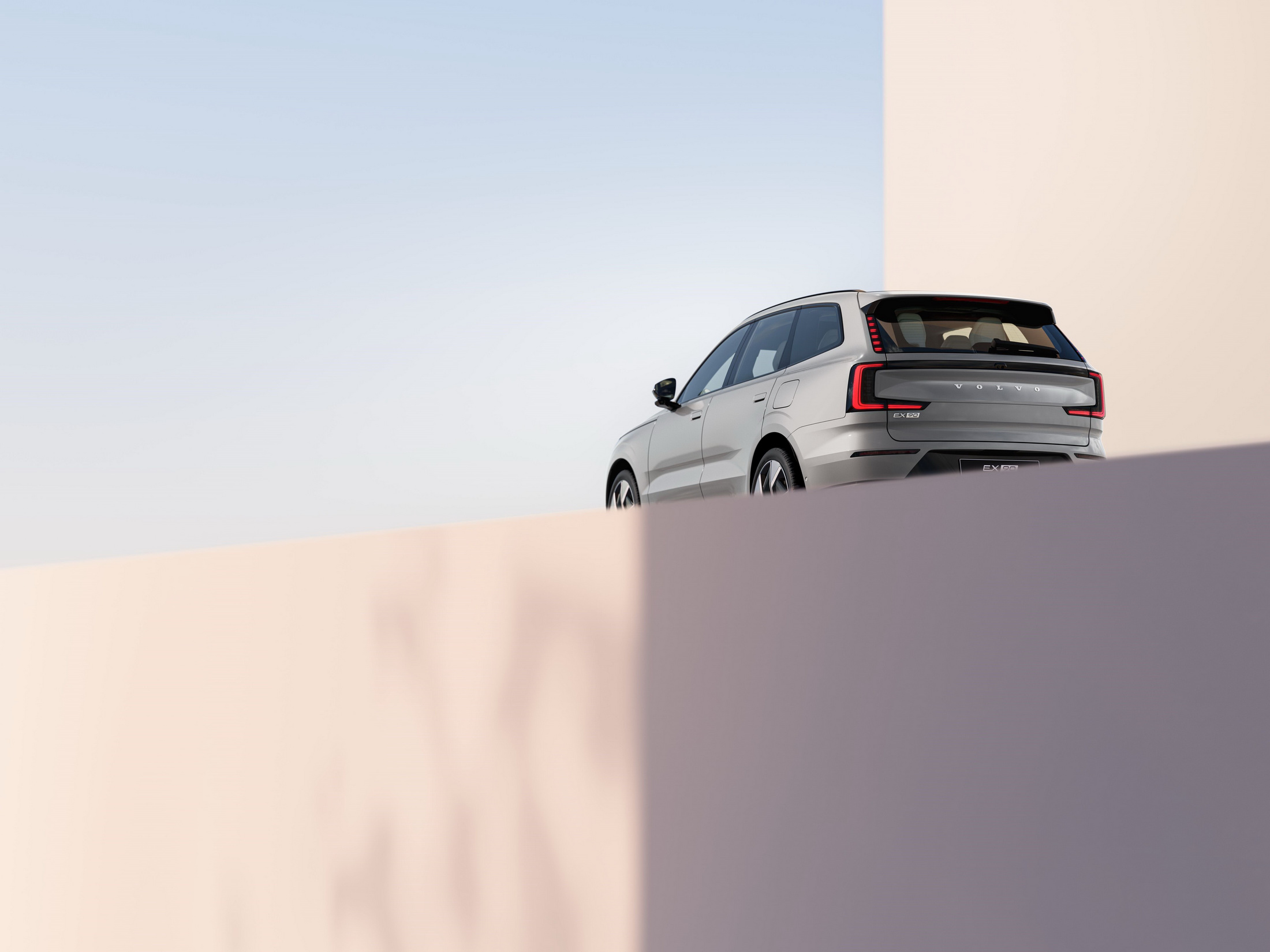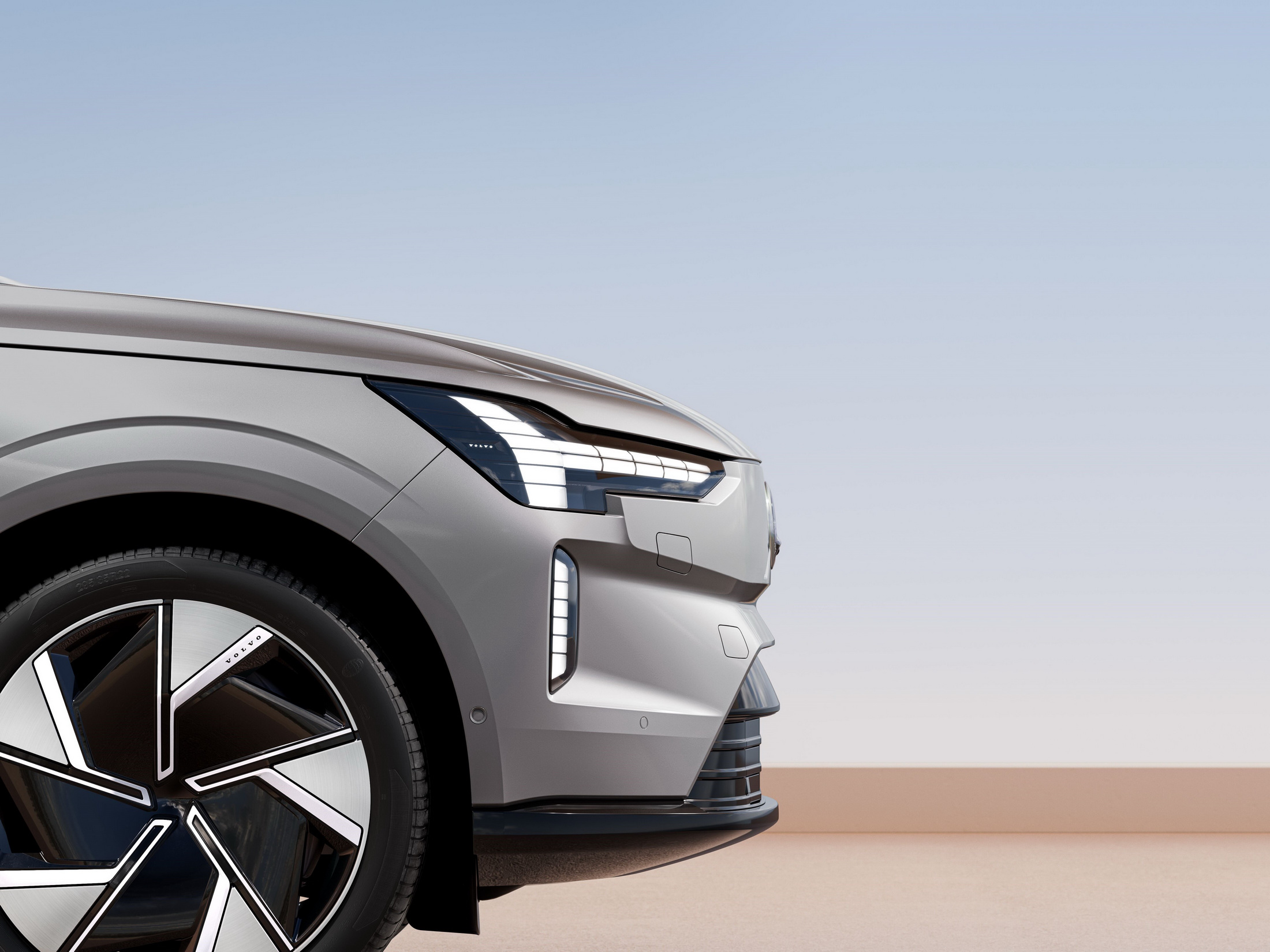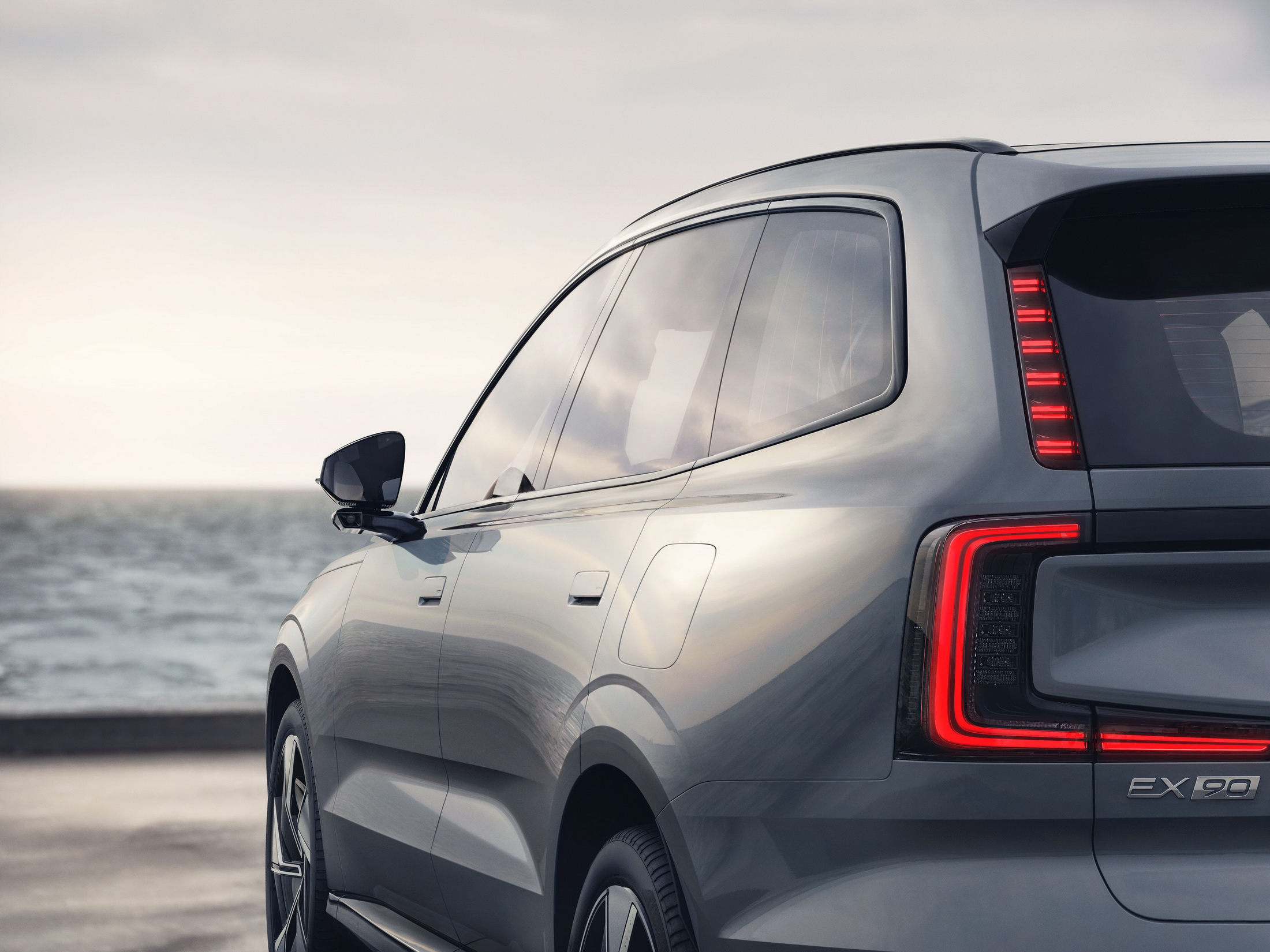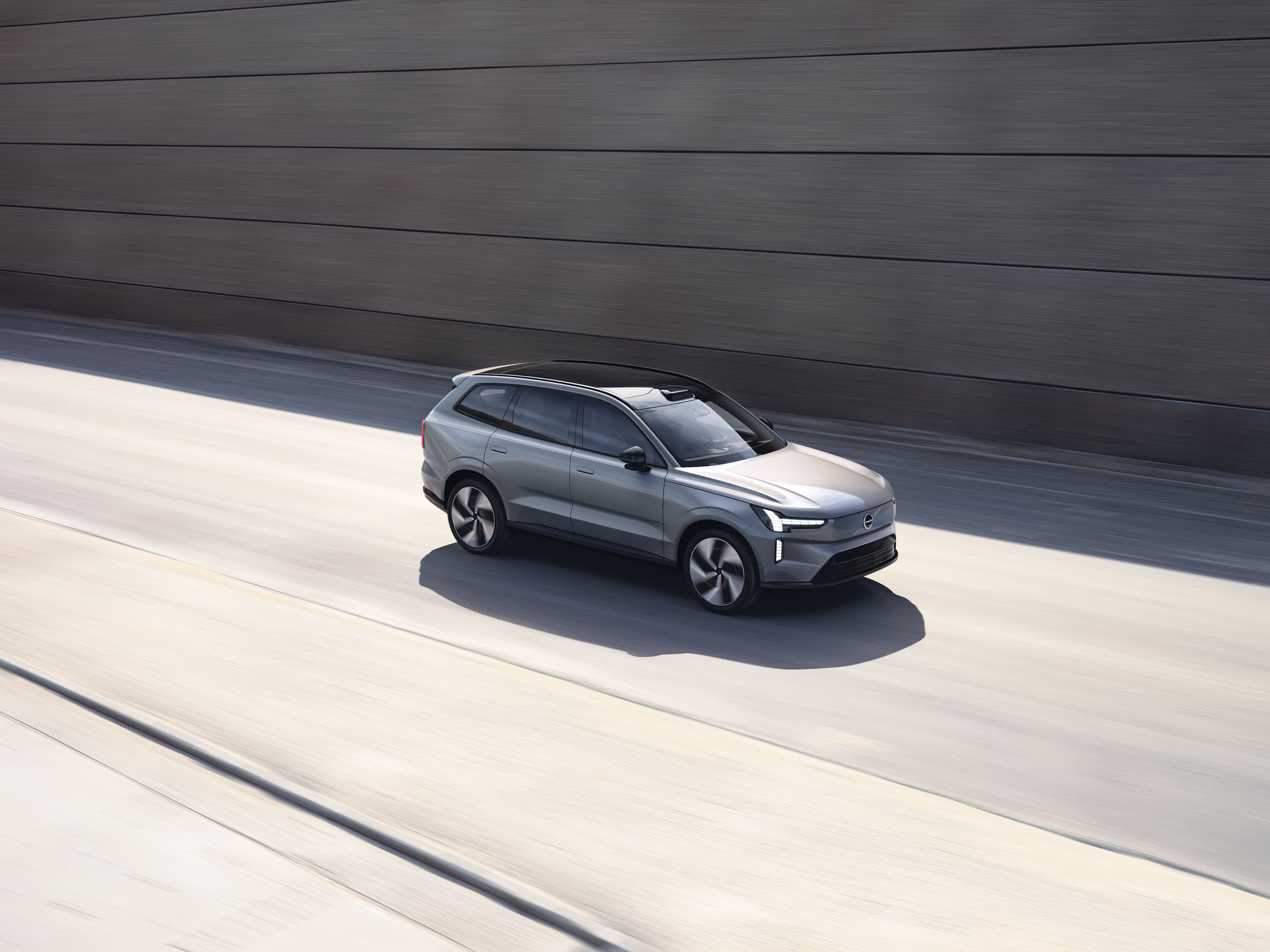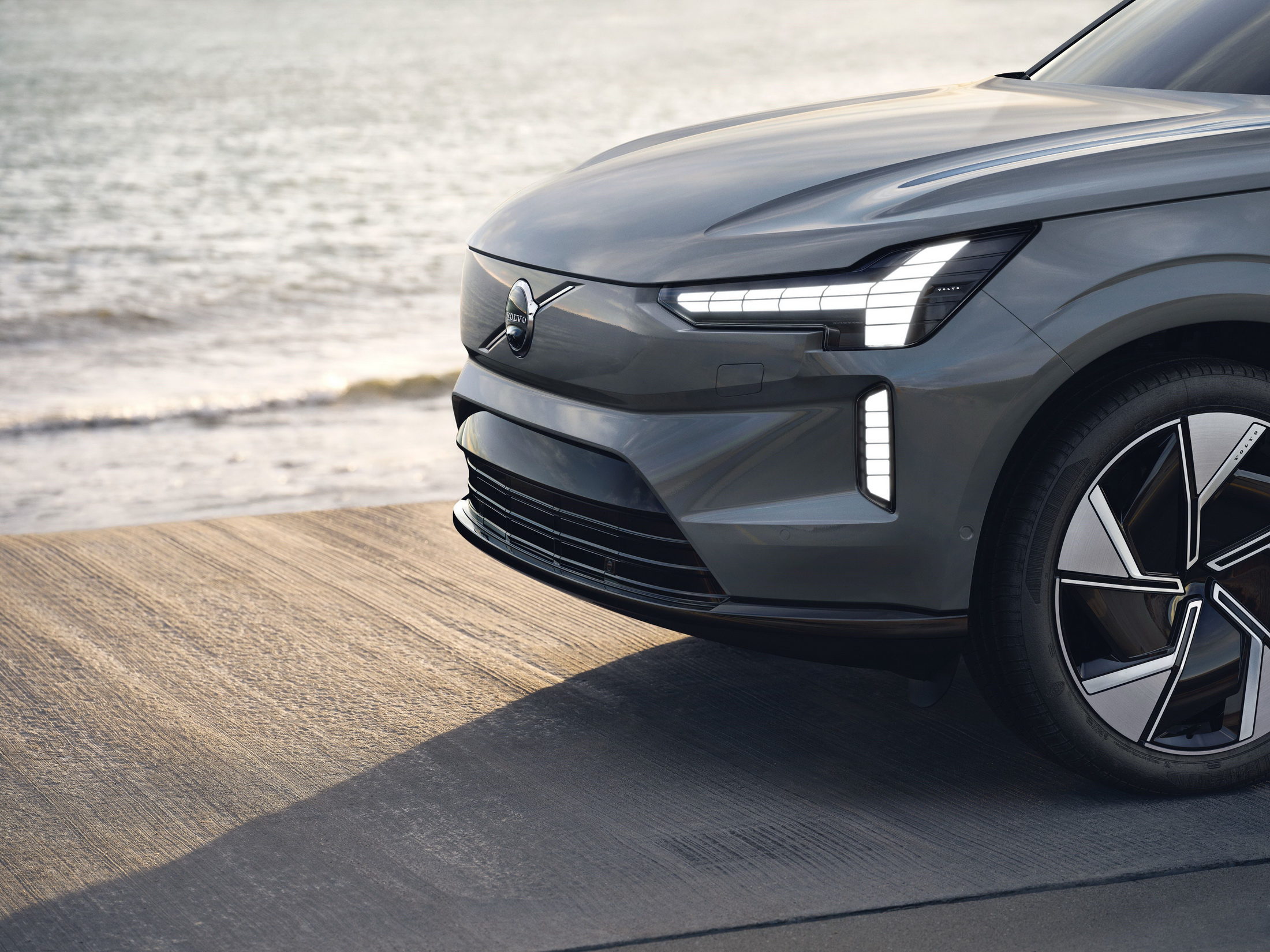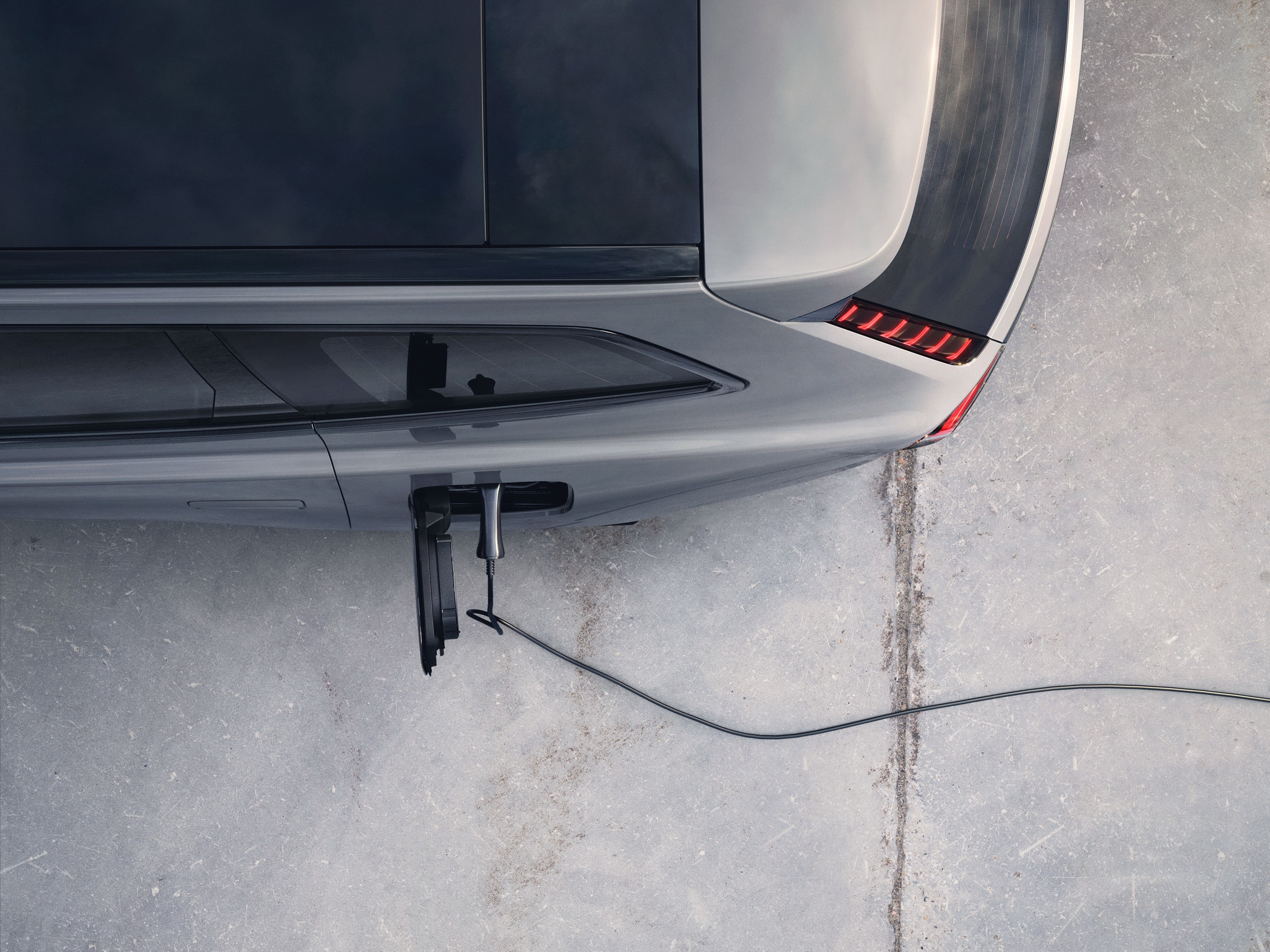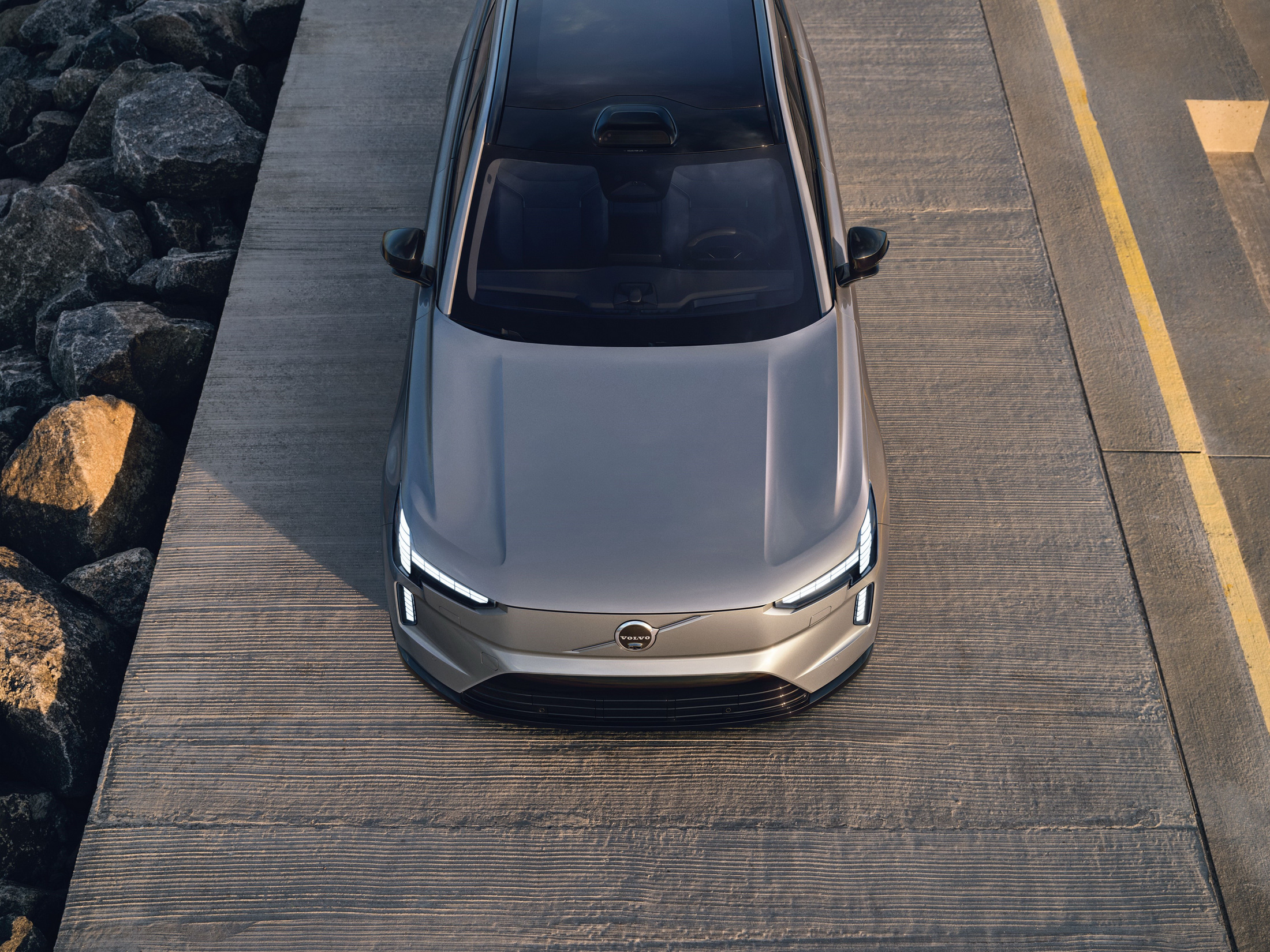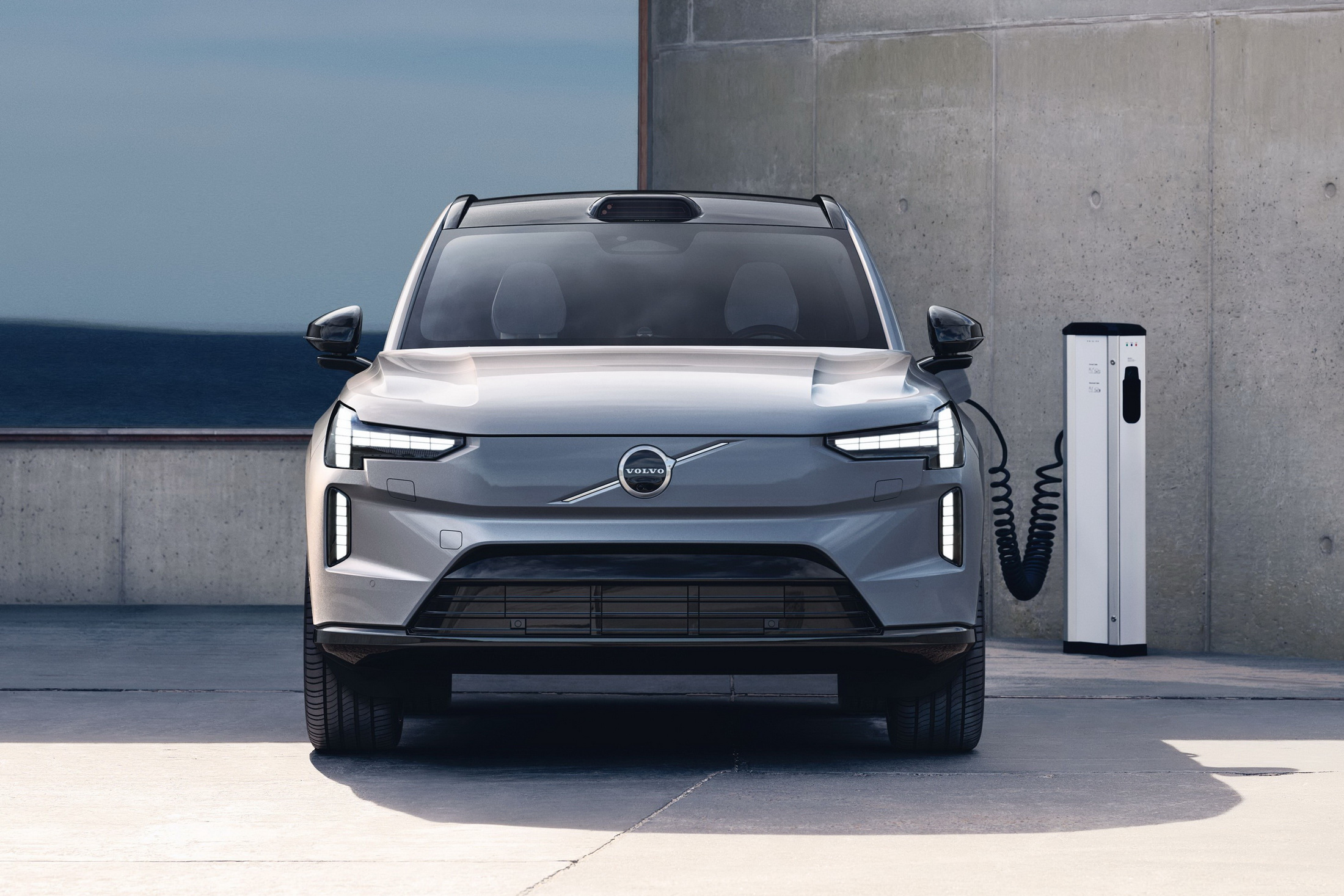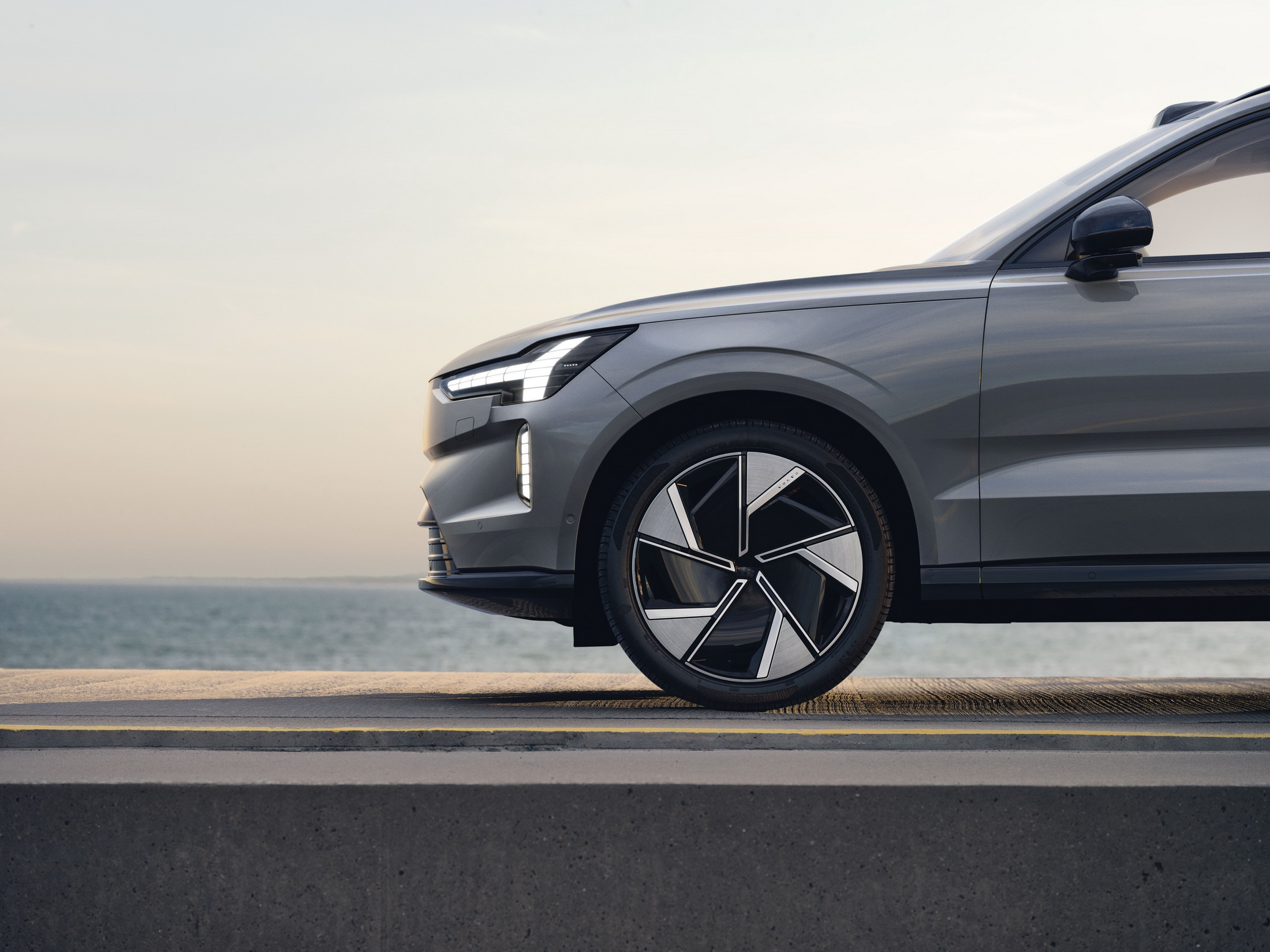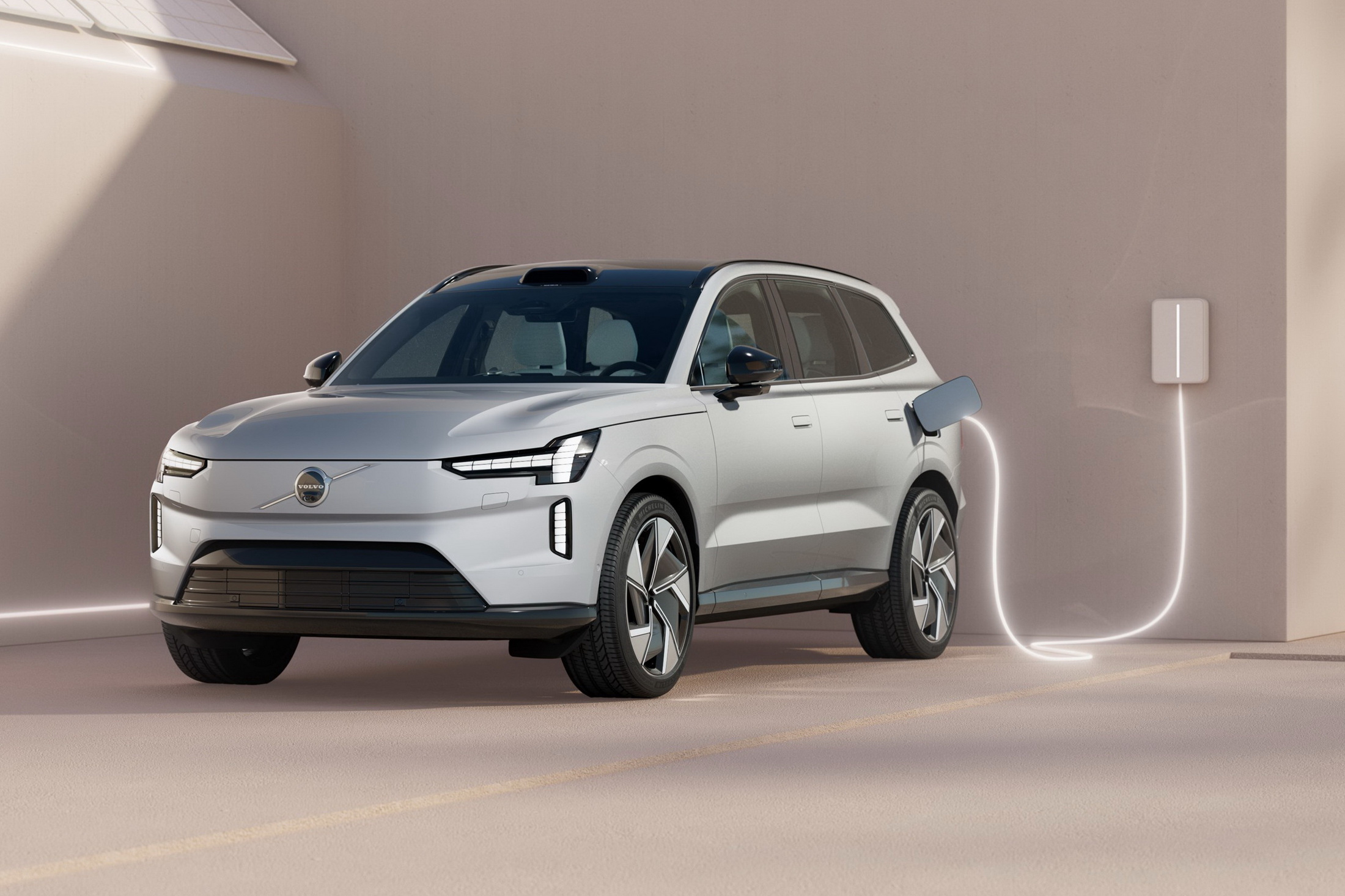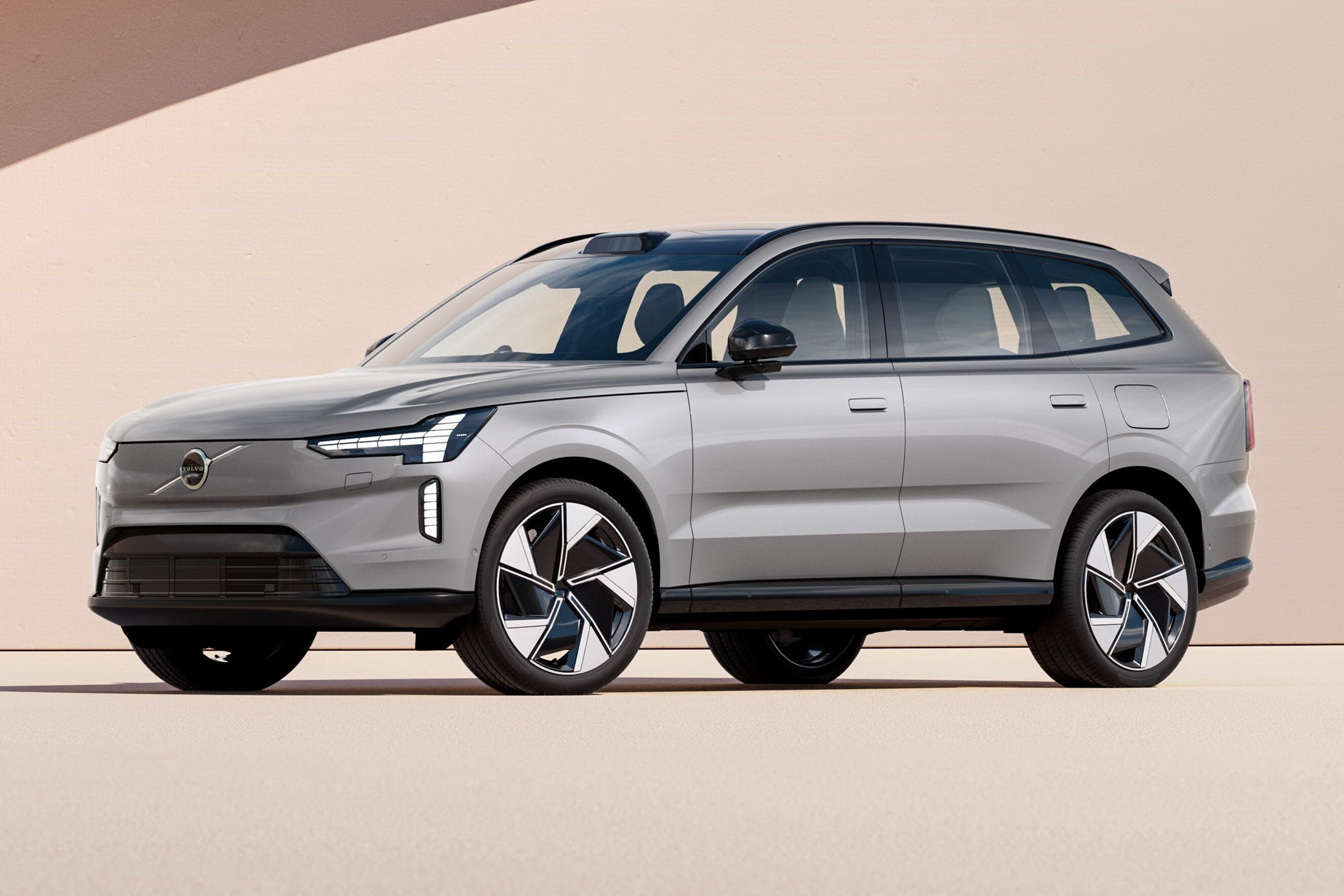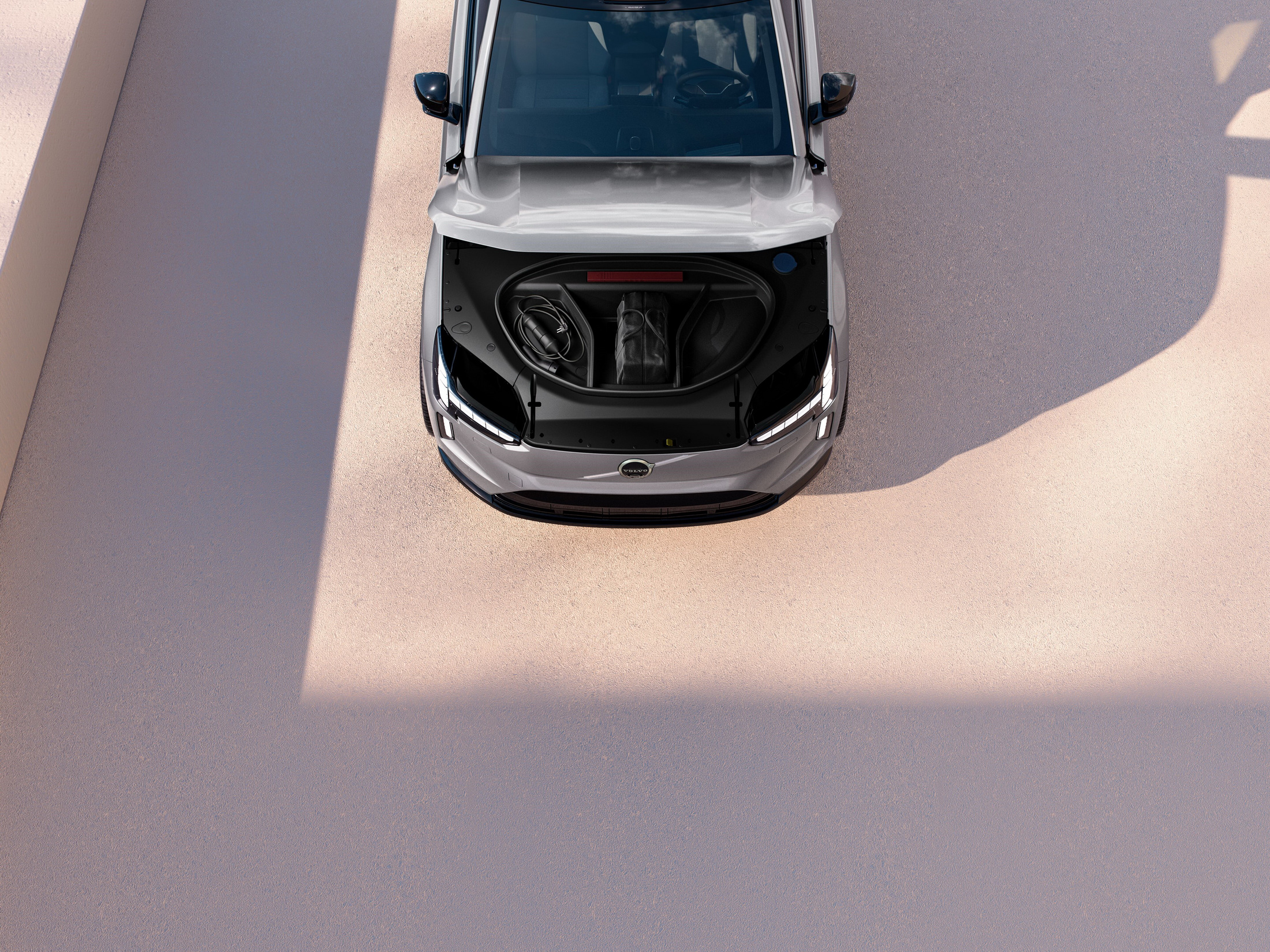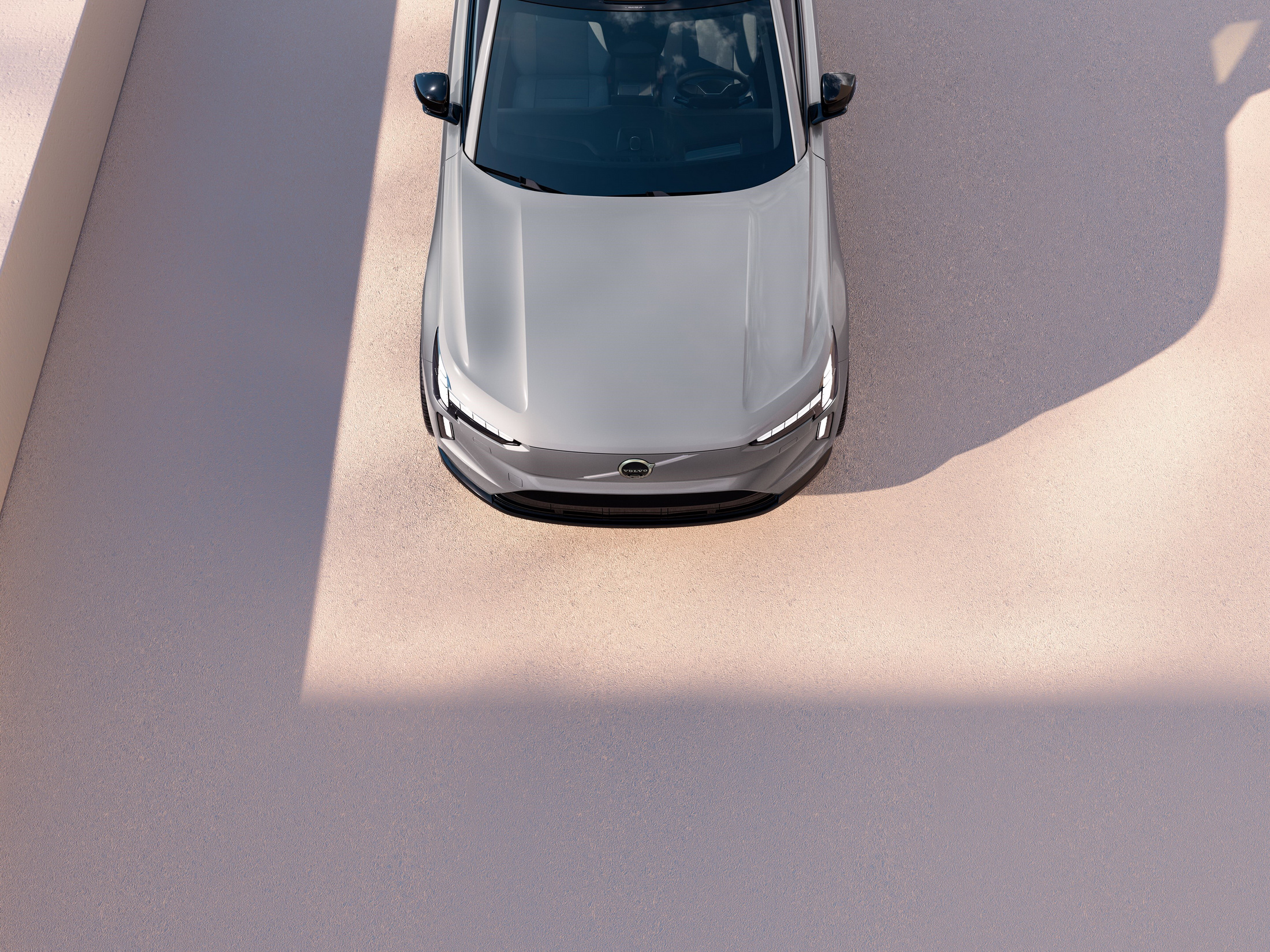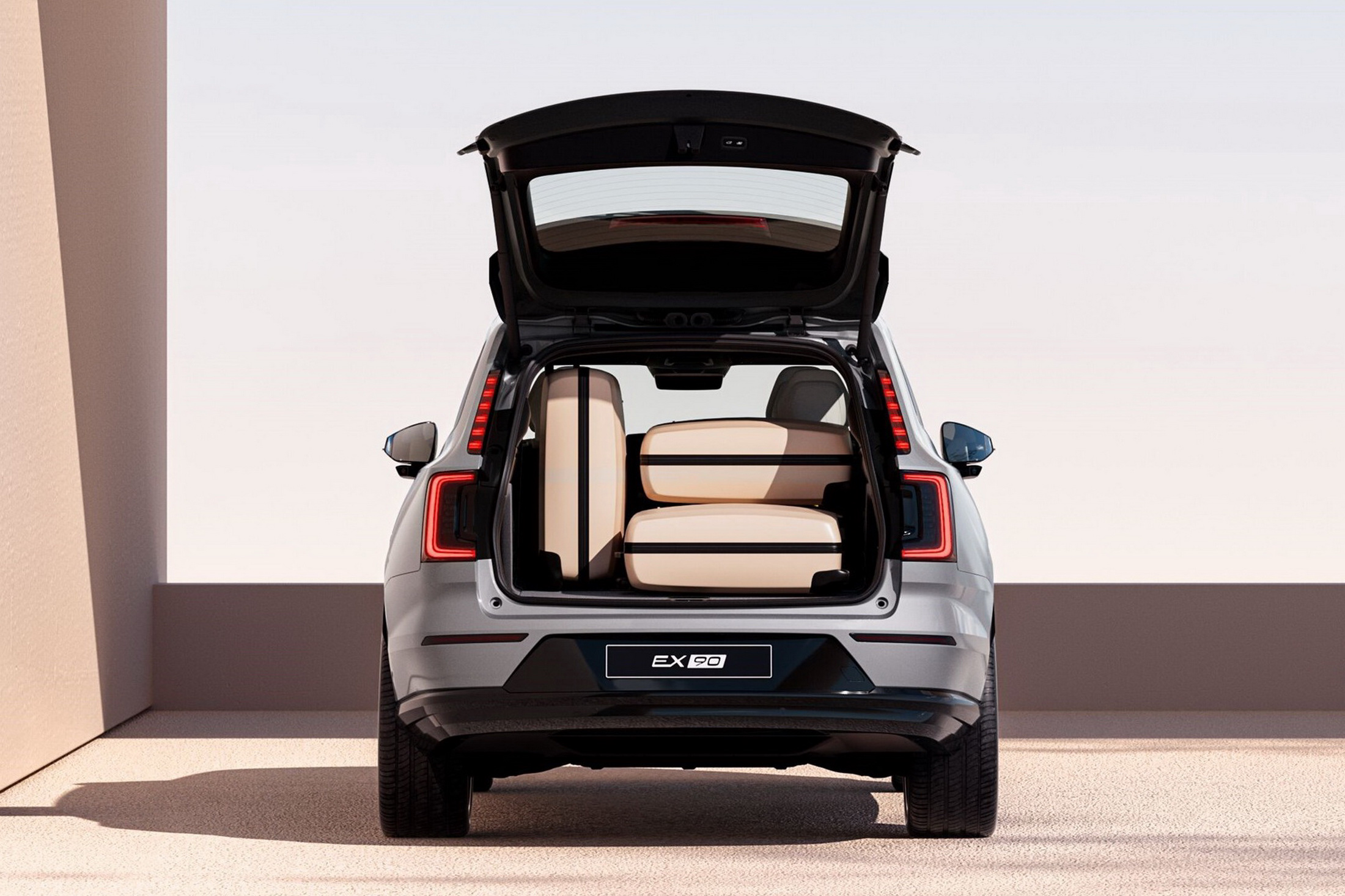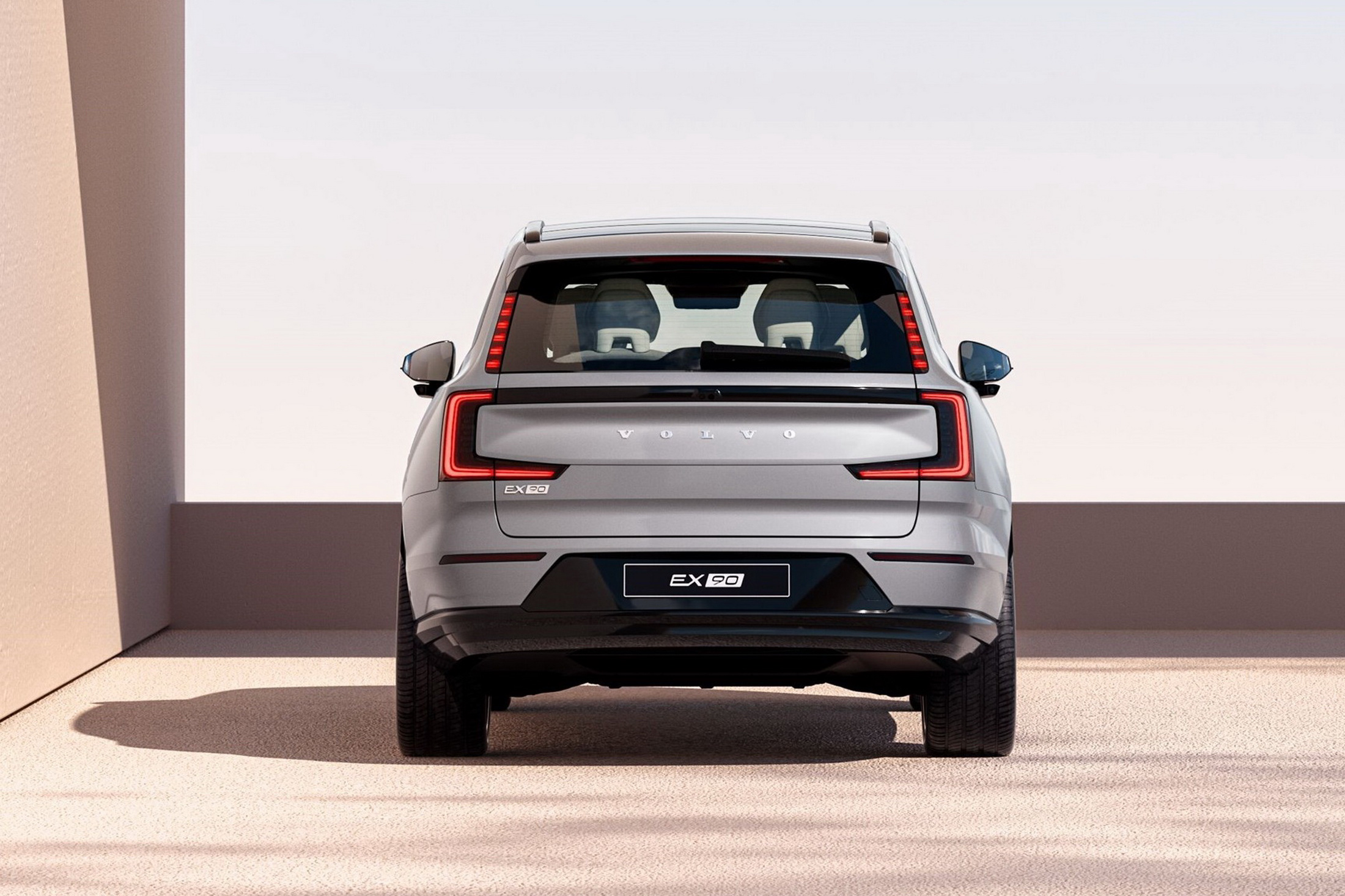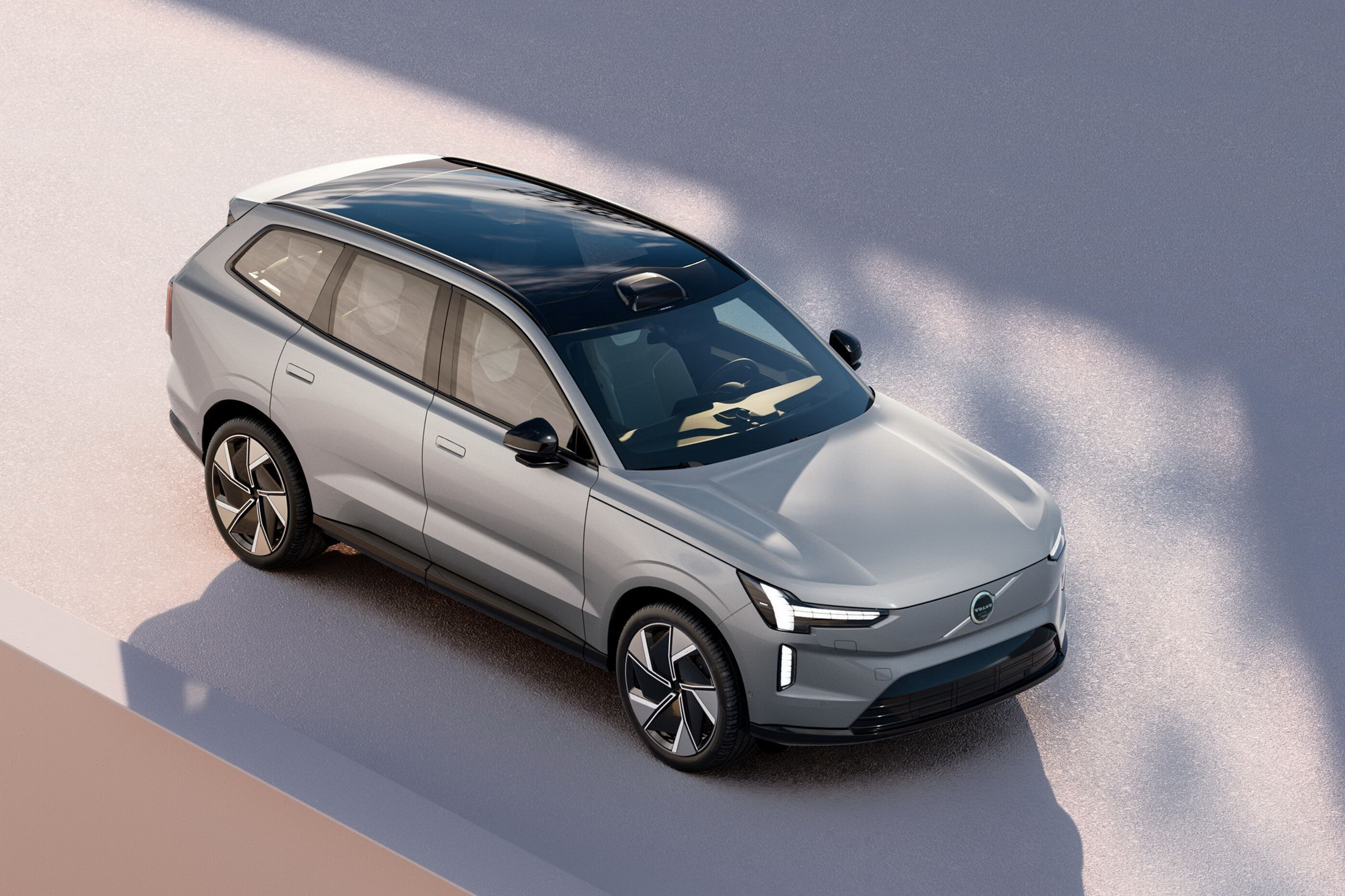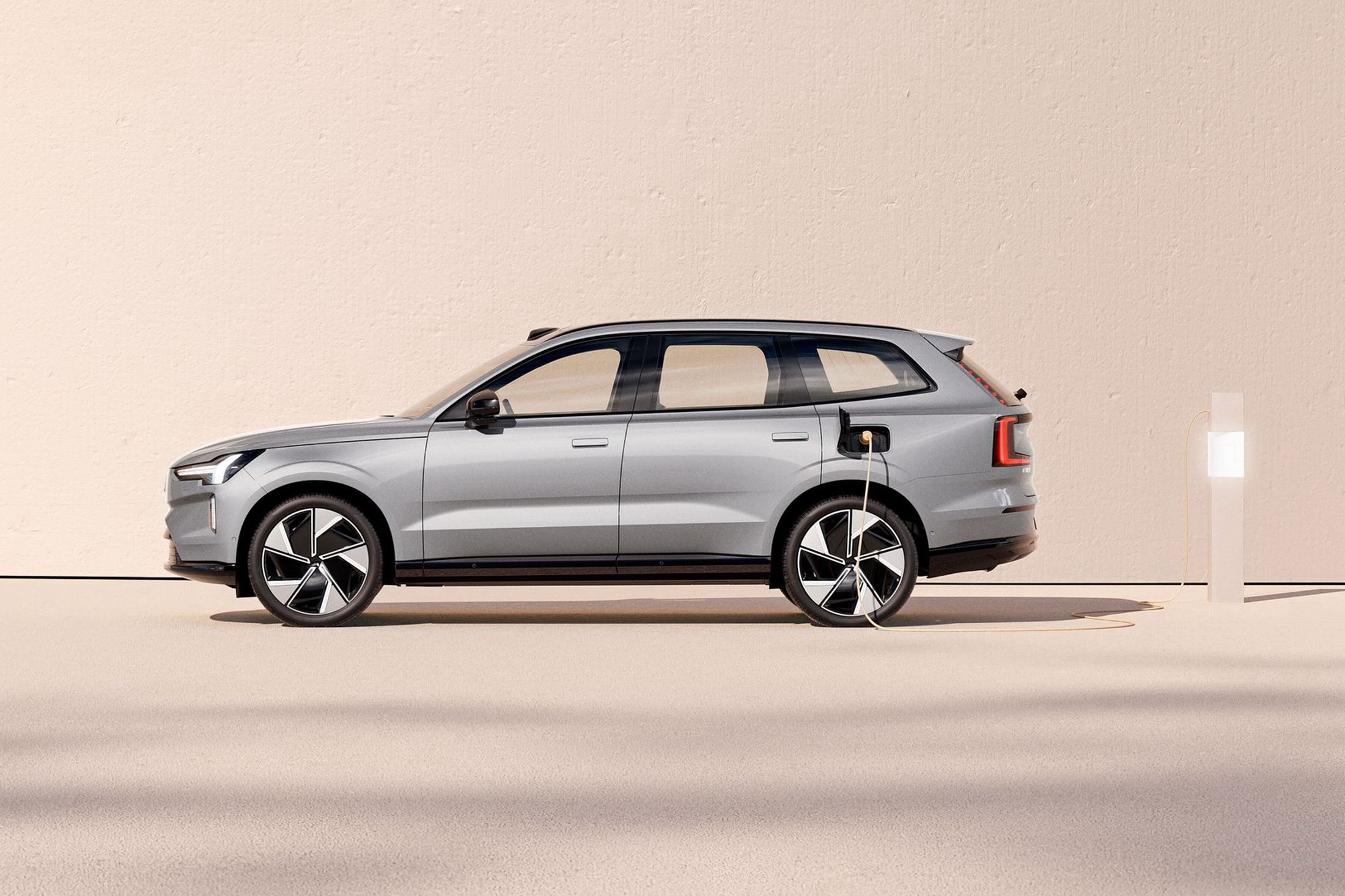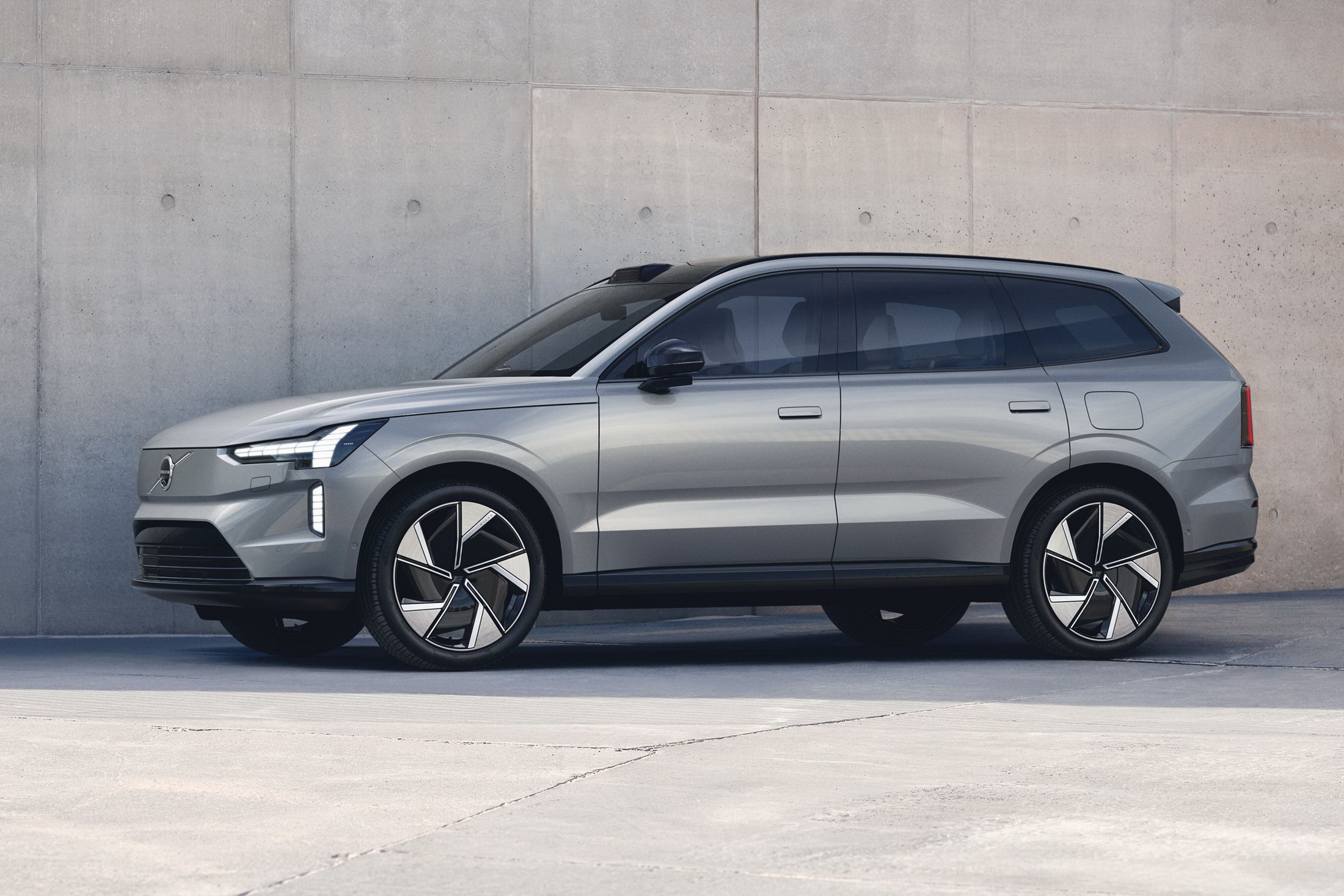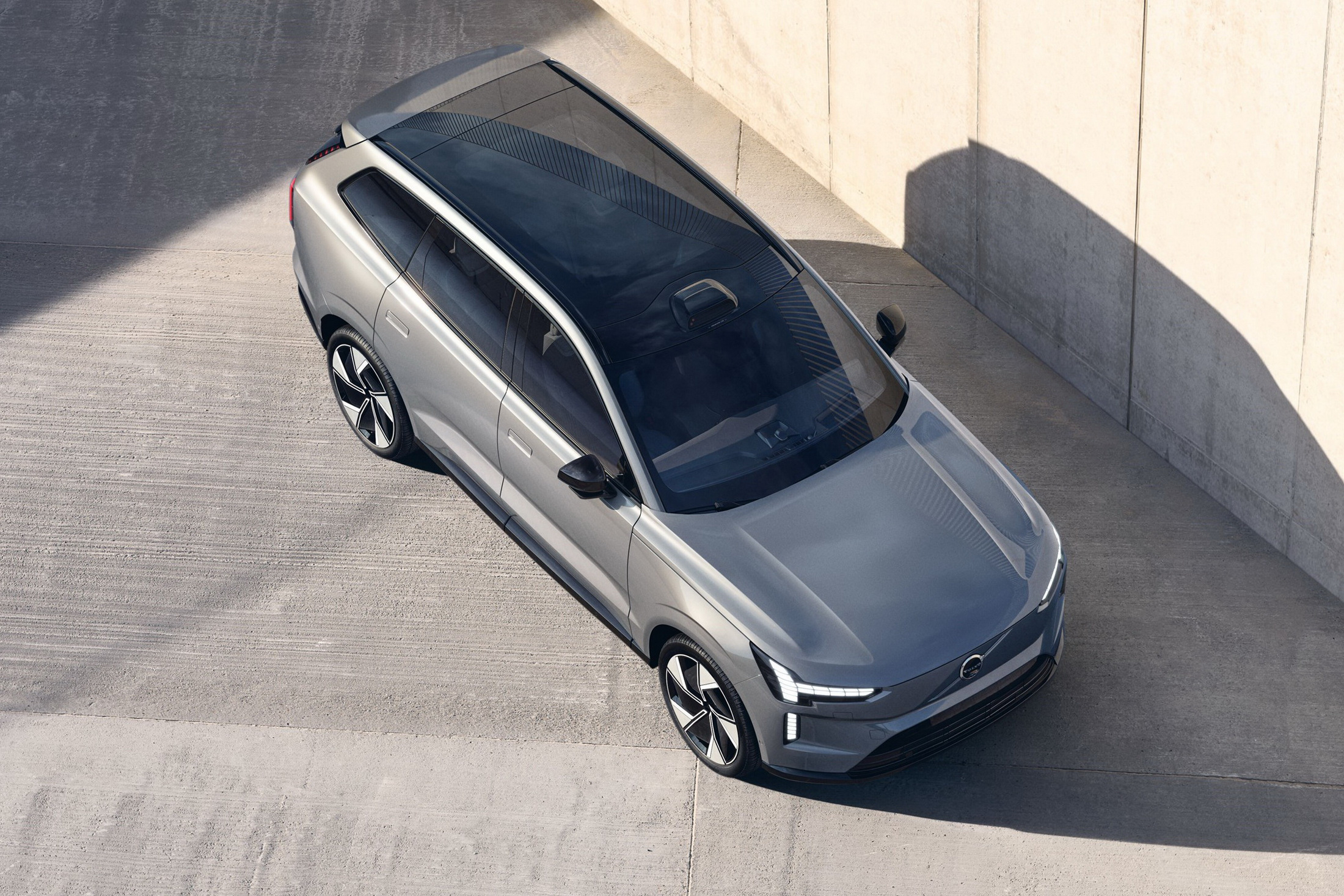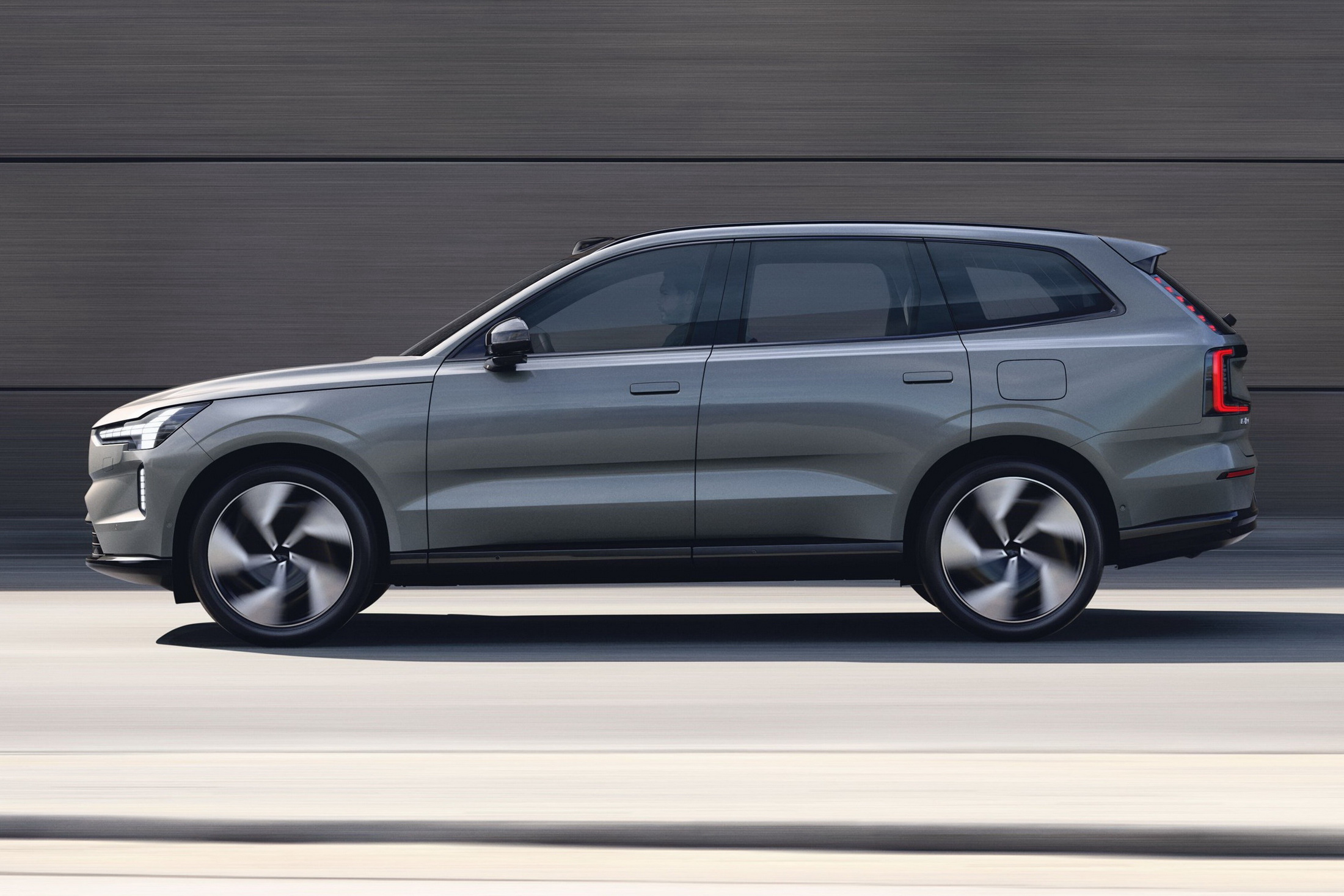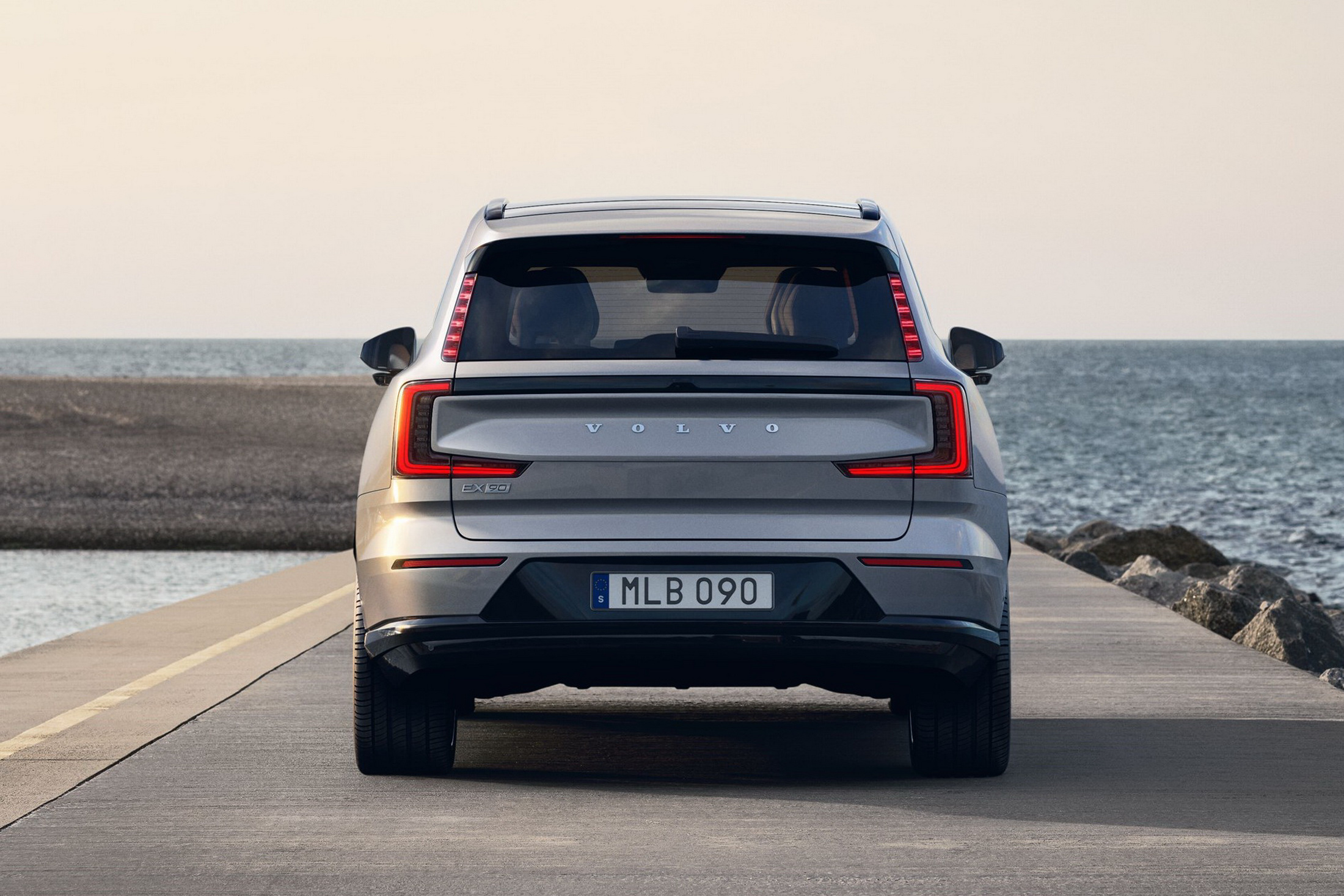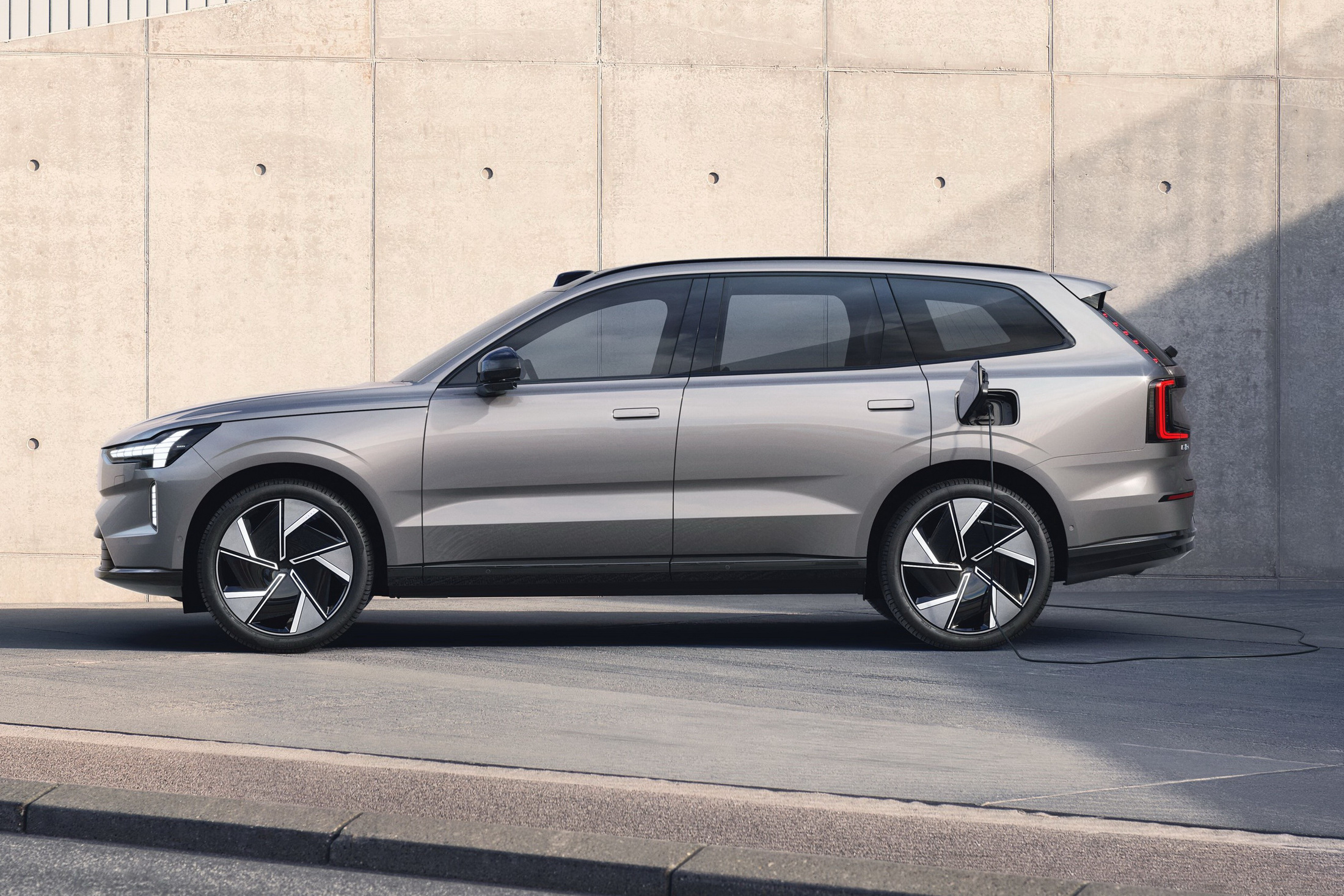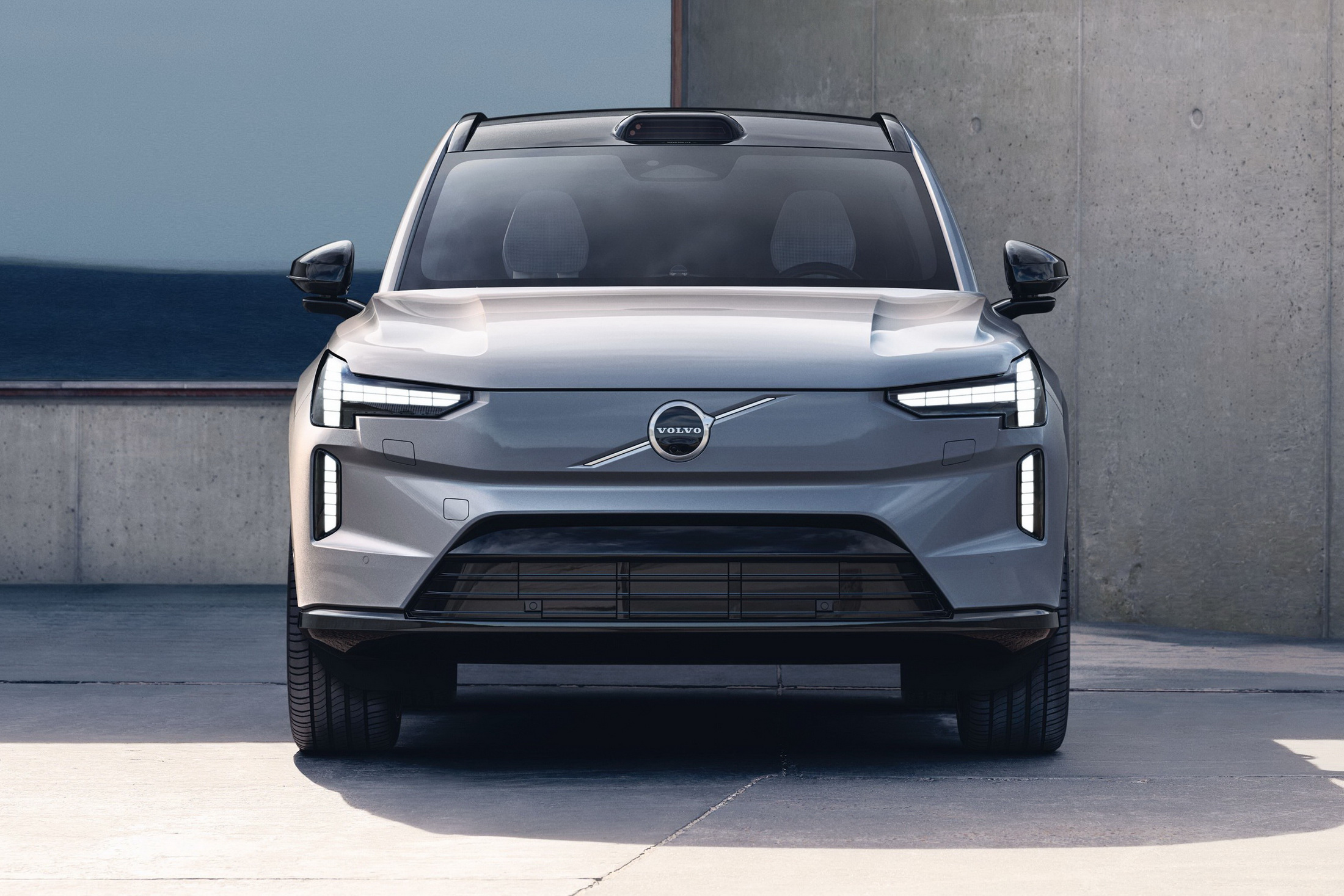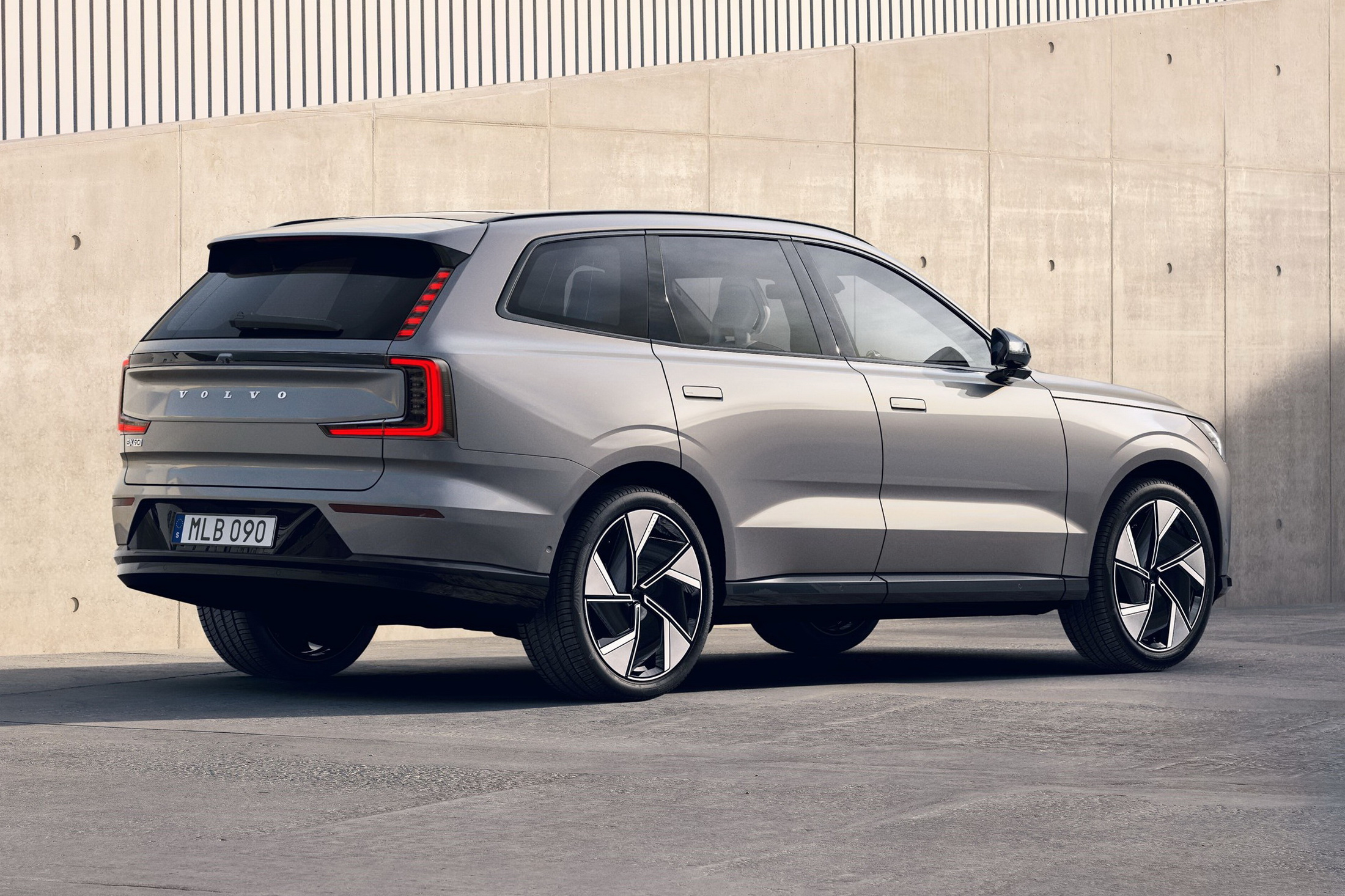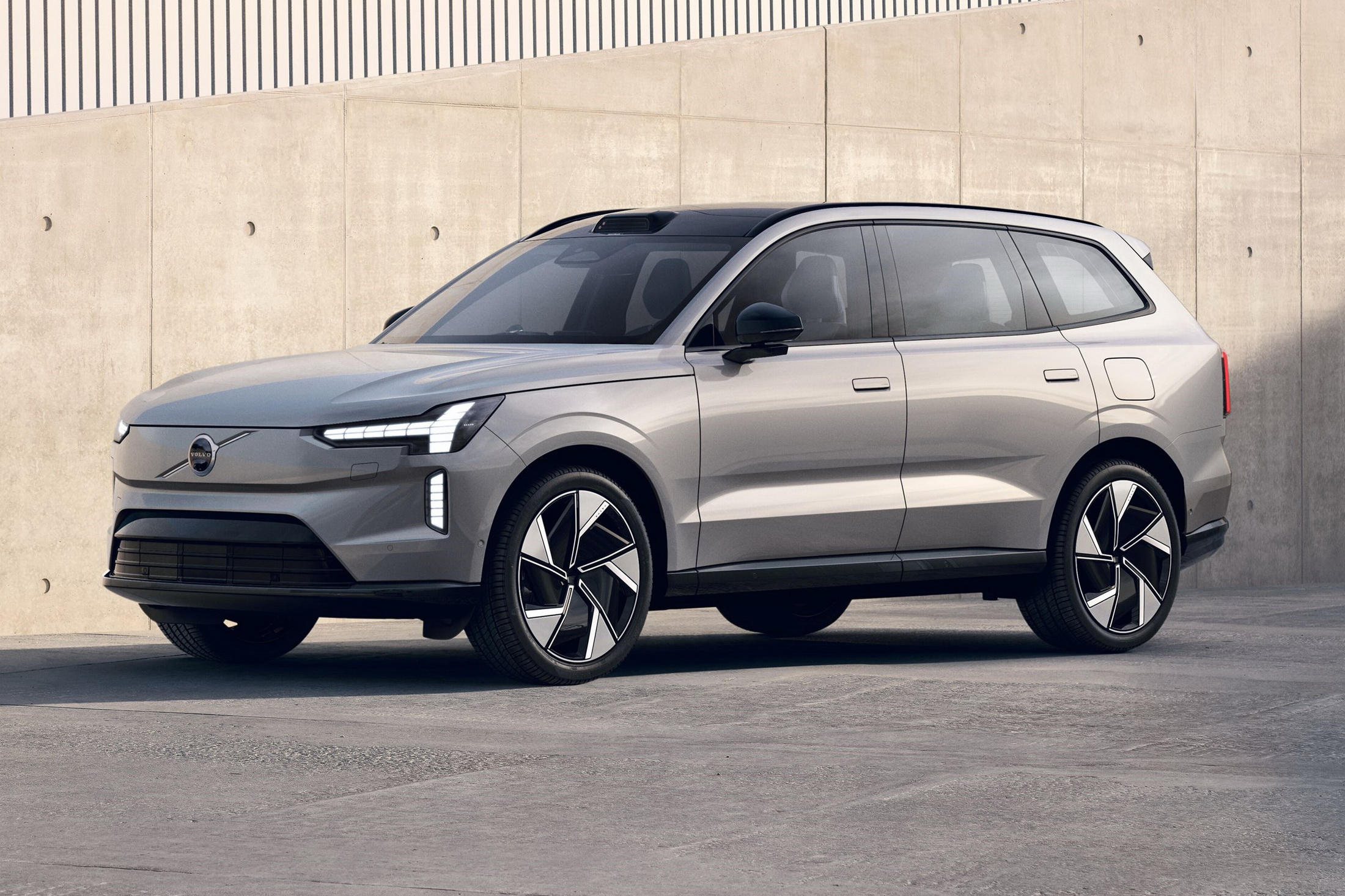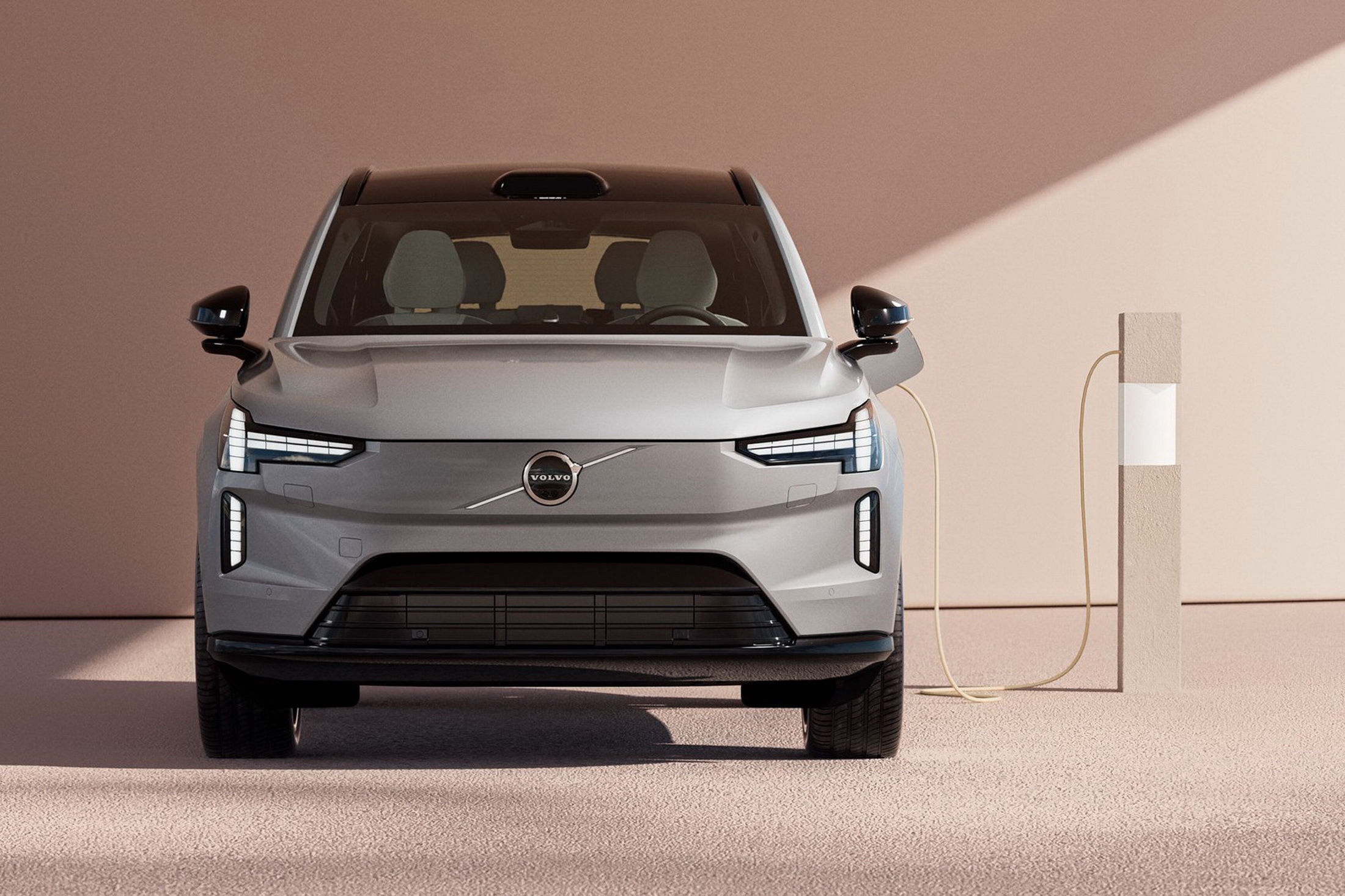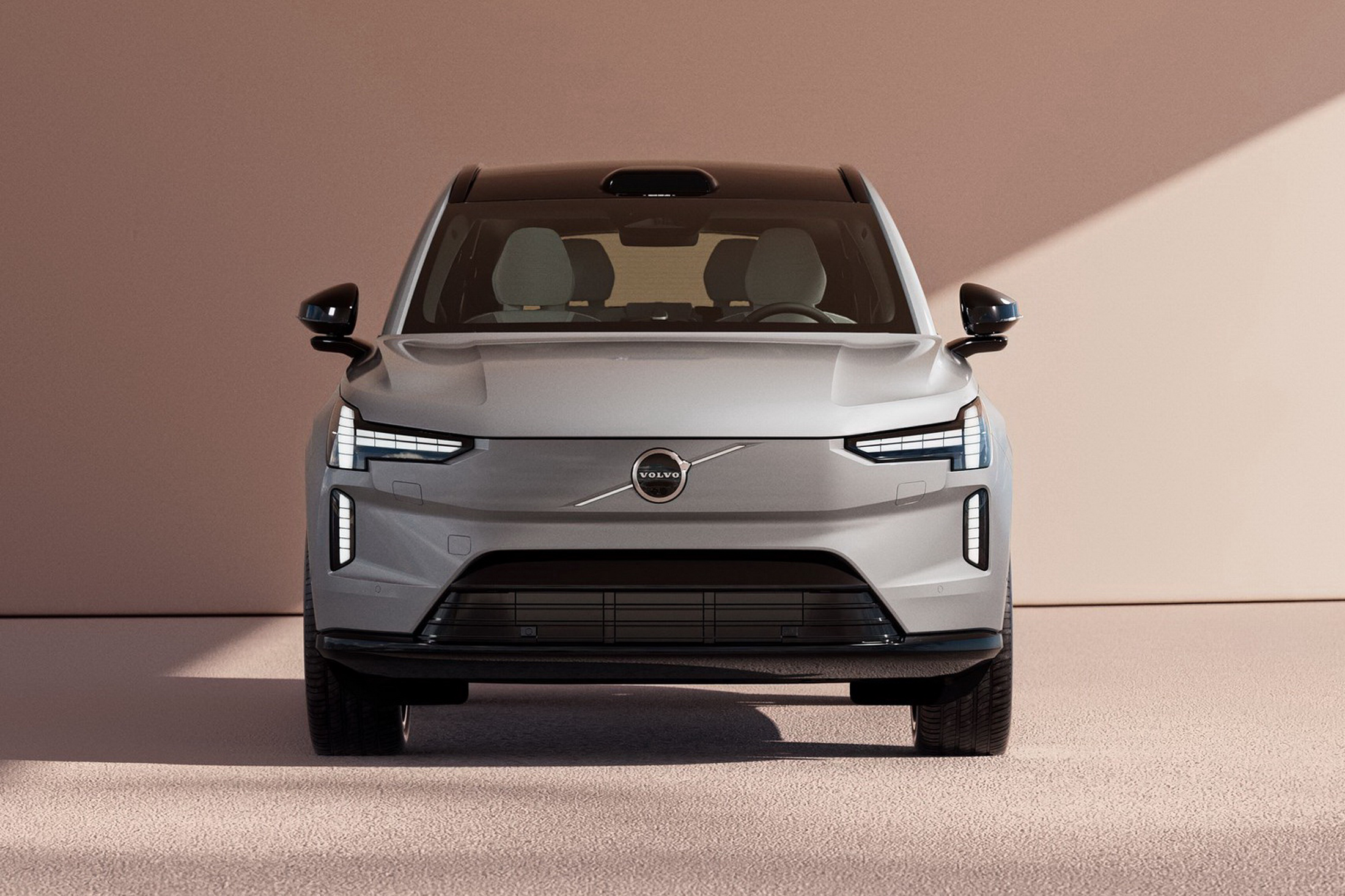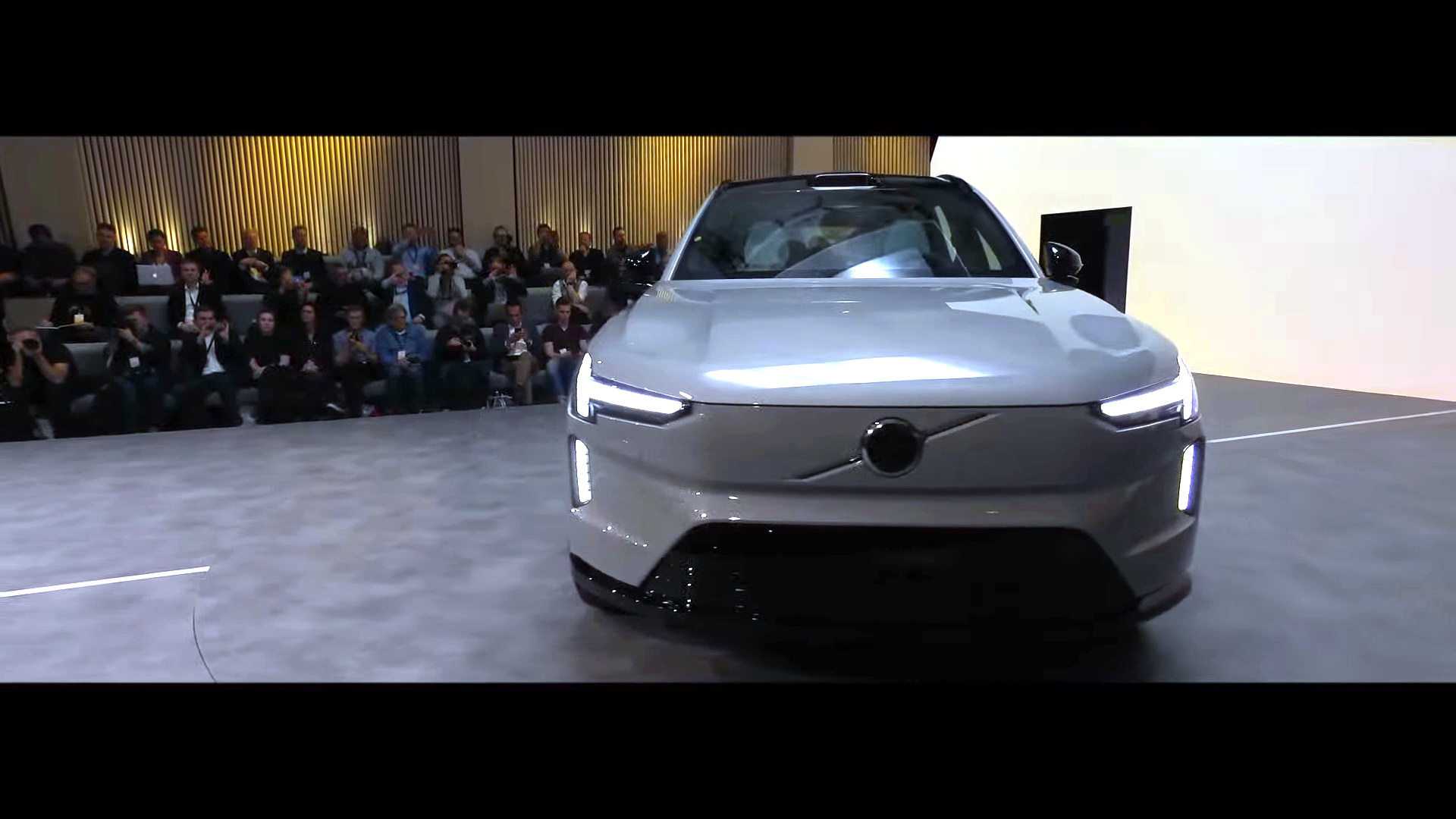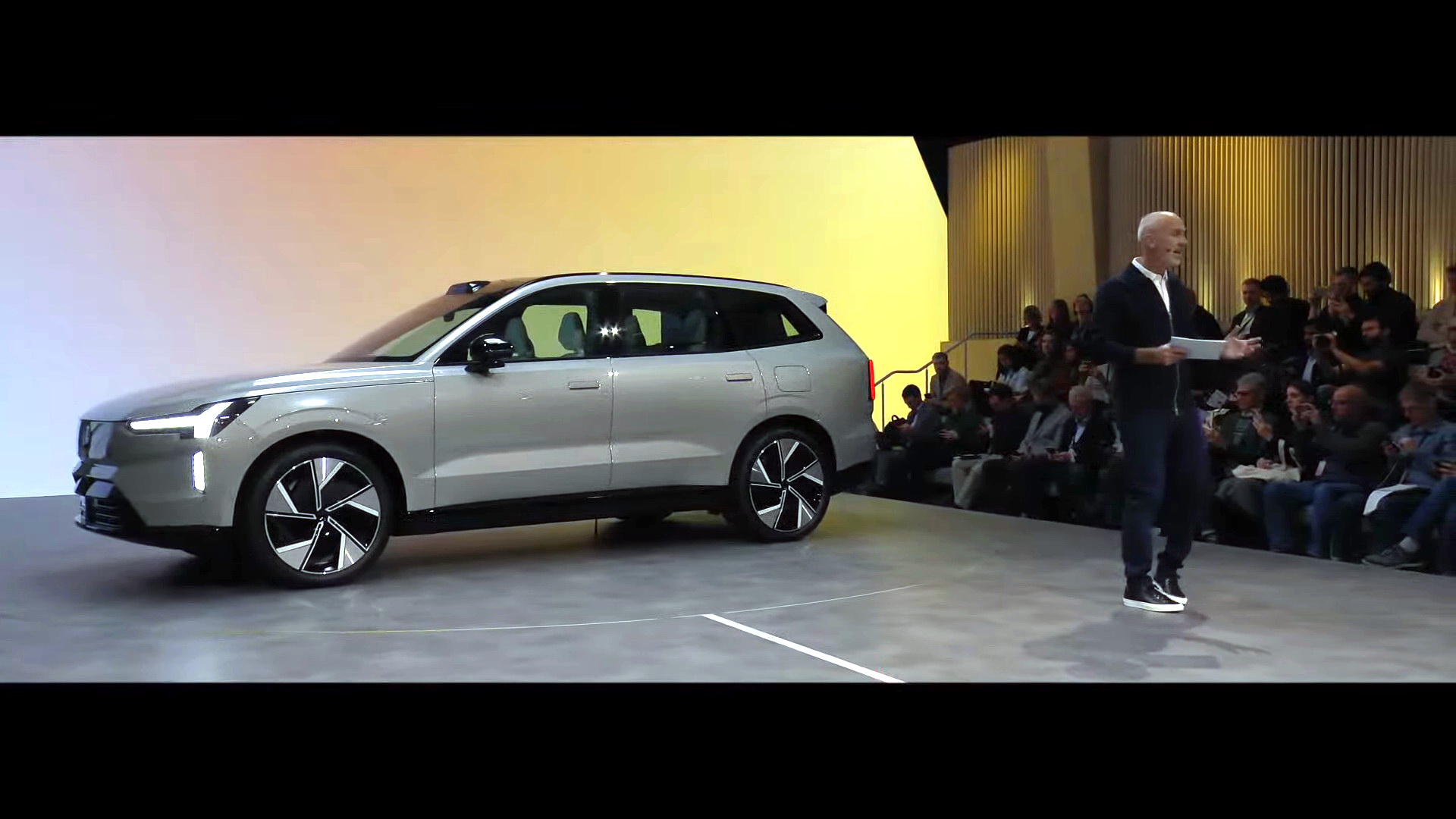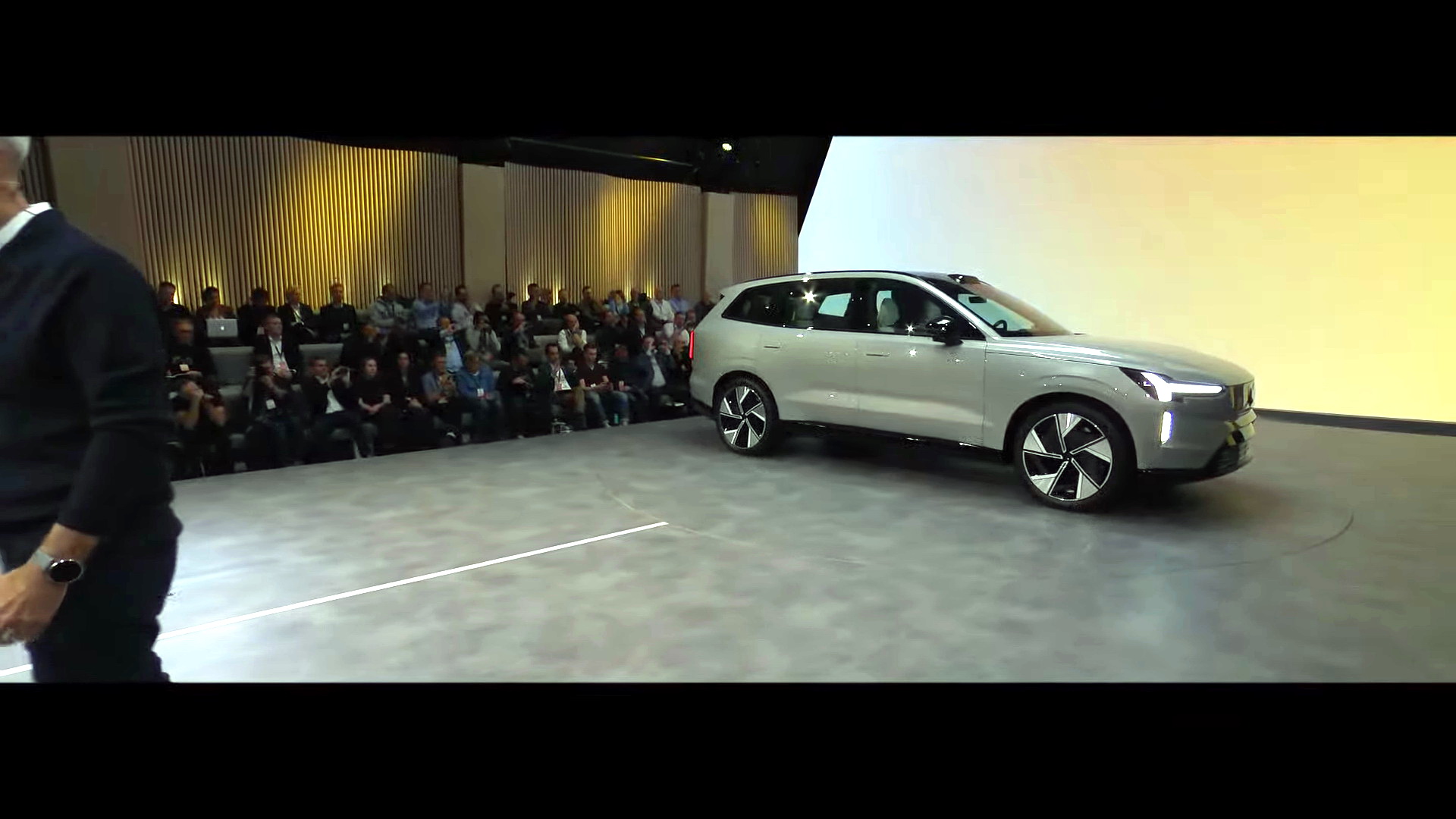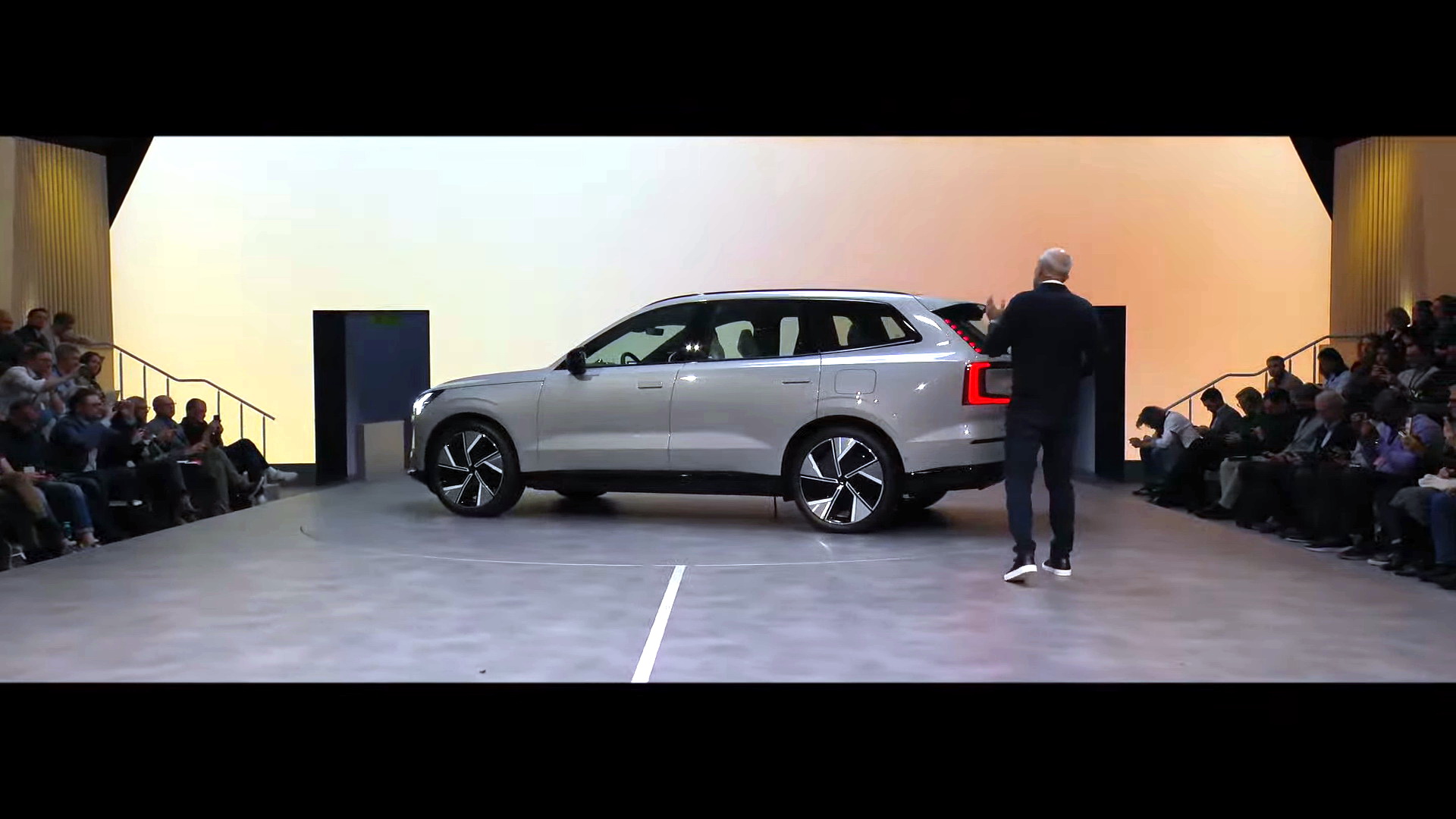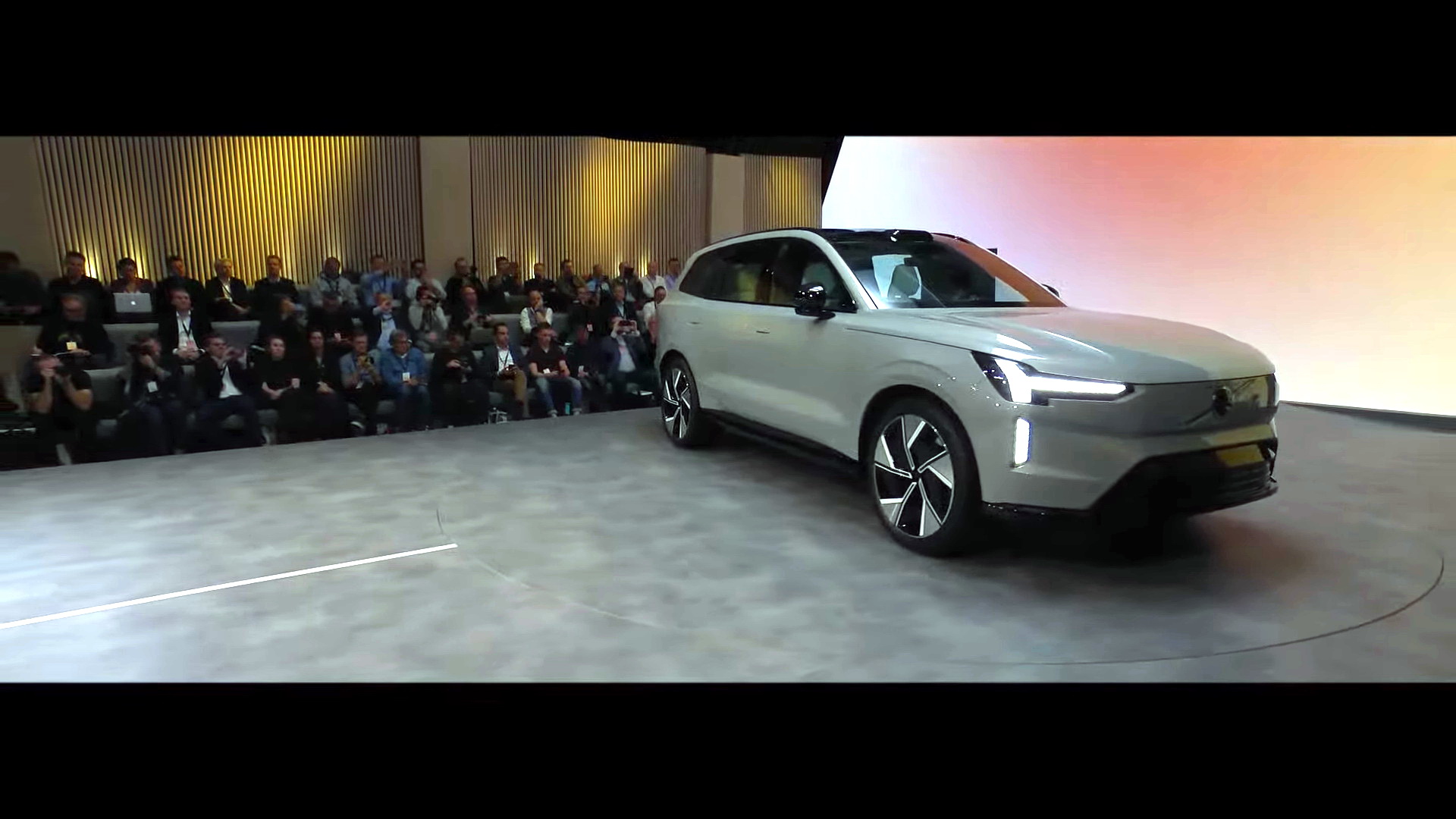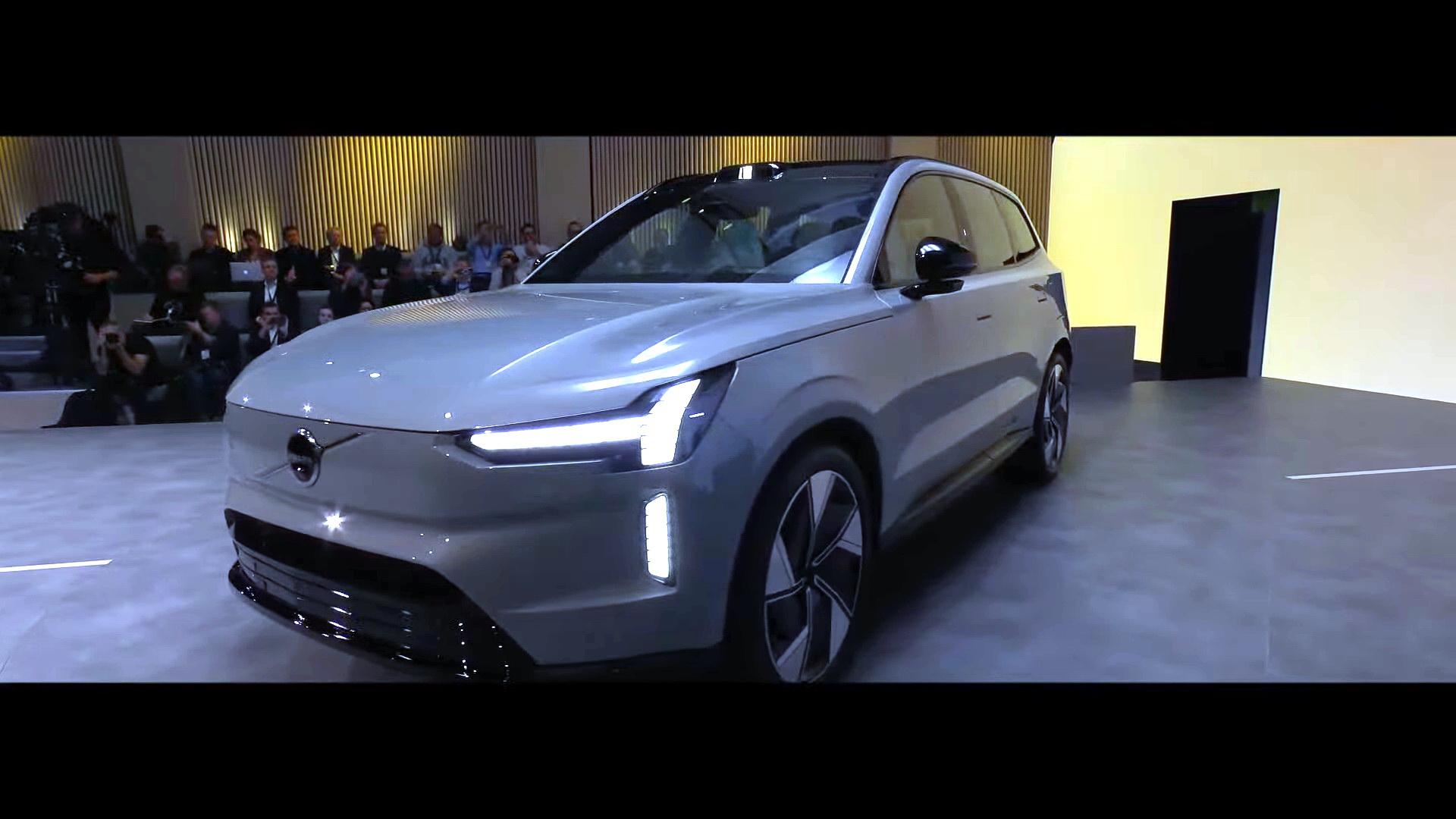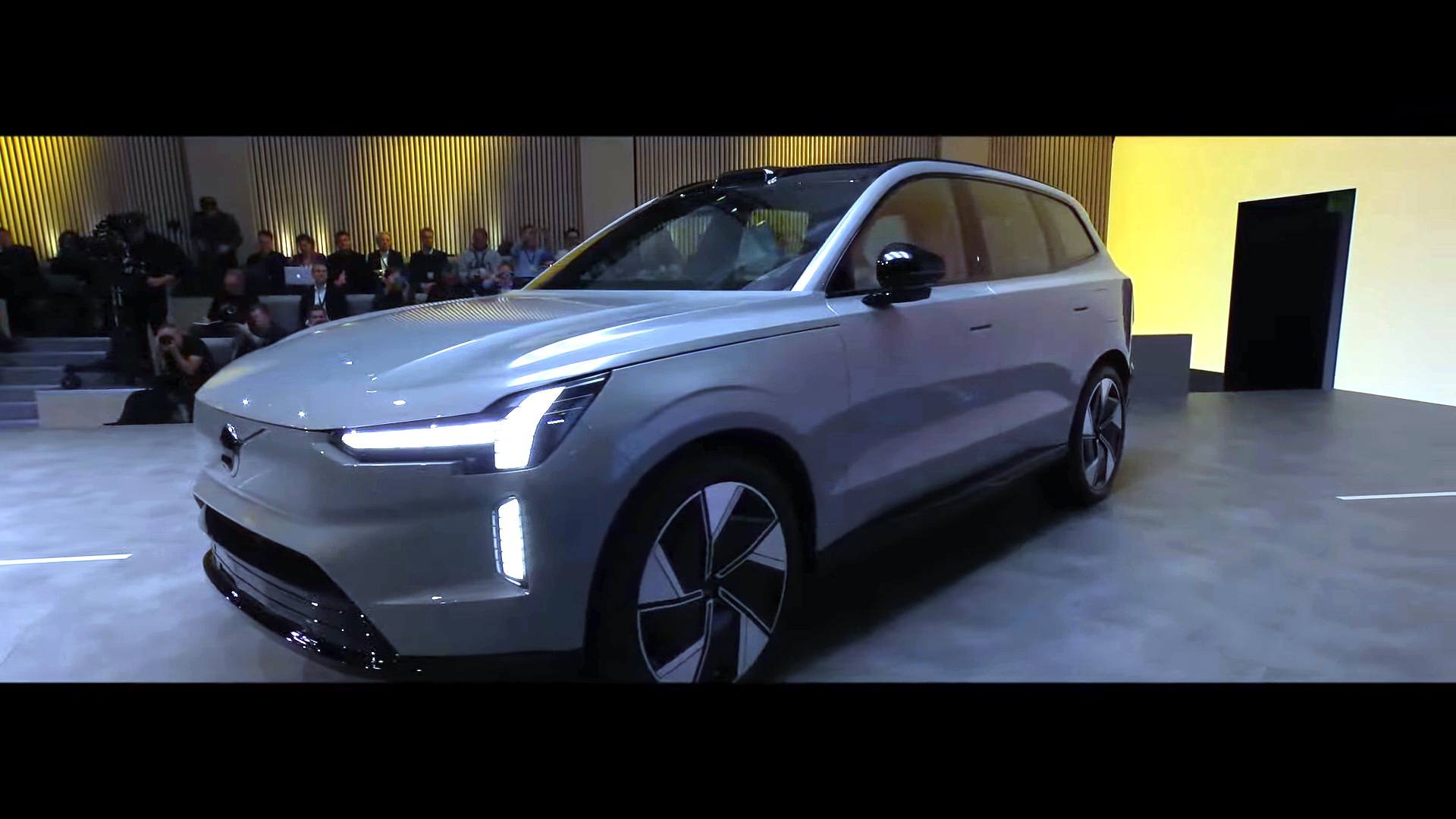This is the Volvo EX90, the Swedish company’s new flagship SUV, and a car that upholds Volvo’s hard-won reputation as a safety pioneer.
The range-topping seven-seat EV comes with Lidar technology fitted as standard across the range to detect pedestrians up to 820 ft (250 m) away and provide Level 3 autonomous capability thanks to a sensor mounted above the windshield. But the EX also looks after people on the inside and features an interior radar system to prevent children and dogs being left in hot cars.
It gets a dual-motor, all-wheel drive drivetrain that offers a claimed 373 miles (600 km) of range and bi-directional charging that lets customers send energy back to the grid. Two versions will be offered at launch, both fitted with a 107 kWh battery that can use 250 kW DC charging to fill from 10-80 percent in 30 minutes.
Related: Why Volvo Switched Naming Plans For The New EX90 At The Last Minute
But while the standard EX90 serves up 408 hp (414 PS) and 568 lb-ft (770 Nm) of torque, the Performance model punches out 510 hp (517 PS) and 671 lb-ft (910 Nm) and is capable of hauling its lardy 6,213 lb (2,818 kg) electric ass to 62 mph (100 km/h) in 4.9 seconds, around a second faster.
Visually, the nose (which features LED lights that blink like eyelids) and tail stick close to the design laid out by 2021’s Volvo Concept Recharge show car, and there are similarities to sister brand Polestar’s new 3, which shares its SPA2 electric platform. The relatively slippery 0.29 Cd design is characterised by a shallow glass house, tapering roofline and vertical rear window, though most of the concept’s flamboyant details, including the rear-hinged rear doors and four individual seats have been toned down for production.
But the concept’s main interior design themes are carried over intact, including a giant 14.5-in portrait touchscreen in the center console that is used to operate almost every function because there are very few physical buttons. Volvo says this cleaner, less cluttered layout makes the EX90 safer to drive – though you won’t have to go far to find someone who thinks the exact opposite. In its favor, it does feature Google’s Android Automotive OS, which should mean it responds well to voice commands and can accept over-air updates.
The touchscreen is paired with that other tech must-have for any new car, a small digital instrument cluster ahead of the driver. As with the exterior design, there’s plenty of visual (and hardware) crossover between the EX90 and Polestar 3 inside the cabin, which is partly built with 106 lbs (48 kg) of sustainable materials including recycled plastic bottles, wool bend seat fabrics and sustainably sourced wood that lets light projected from behind bleed through to the surface. But while the EX90 offers three rows of seats, the Polestar 3 is strictly fun for five.
Volvo is preparing to go EV-only by 2030, and the electric-only EX90 is its first big step in that direction. Not ready to switch to an EV but still want your safety fix? Then you’ll be pleased to hear that the old XC90 will be refreshed and remain on sale as a PHEV, though the EX looks so much sleeker, you’d really have to hate electric cars not to pick the new car. Having said that, the Polestar 3 looks so much better than both and offers all of the same tech as the EX90. If you can live with just five seats, we’d say it’s the pick of the three.
Do you think the EX90 lived up to the promise of the Recharge Concept? Leave a comment and let us know.




